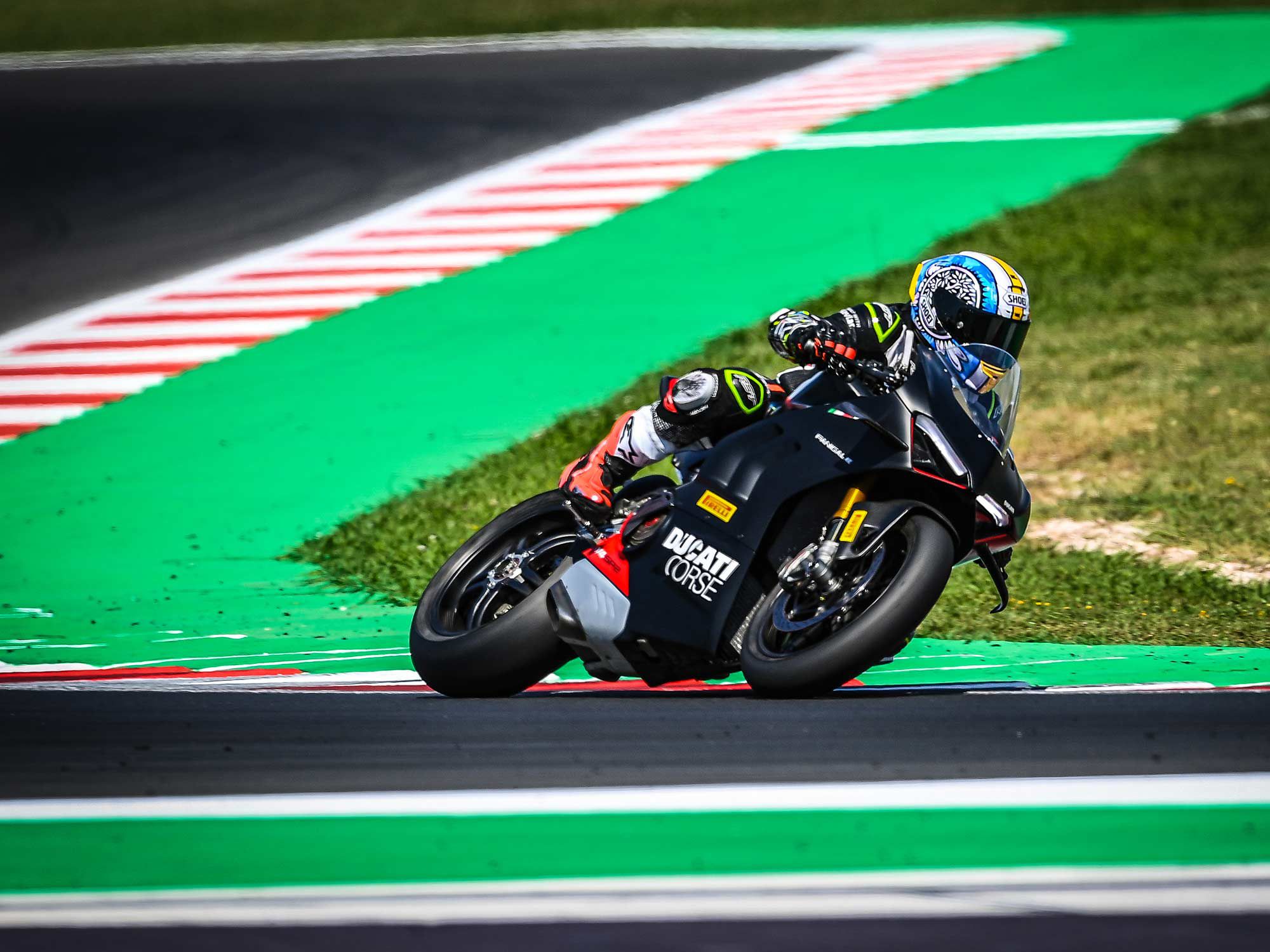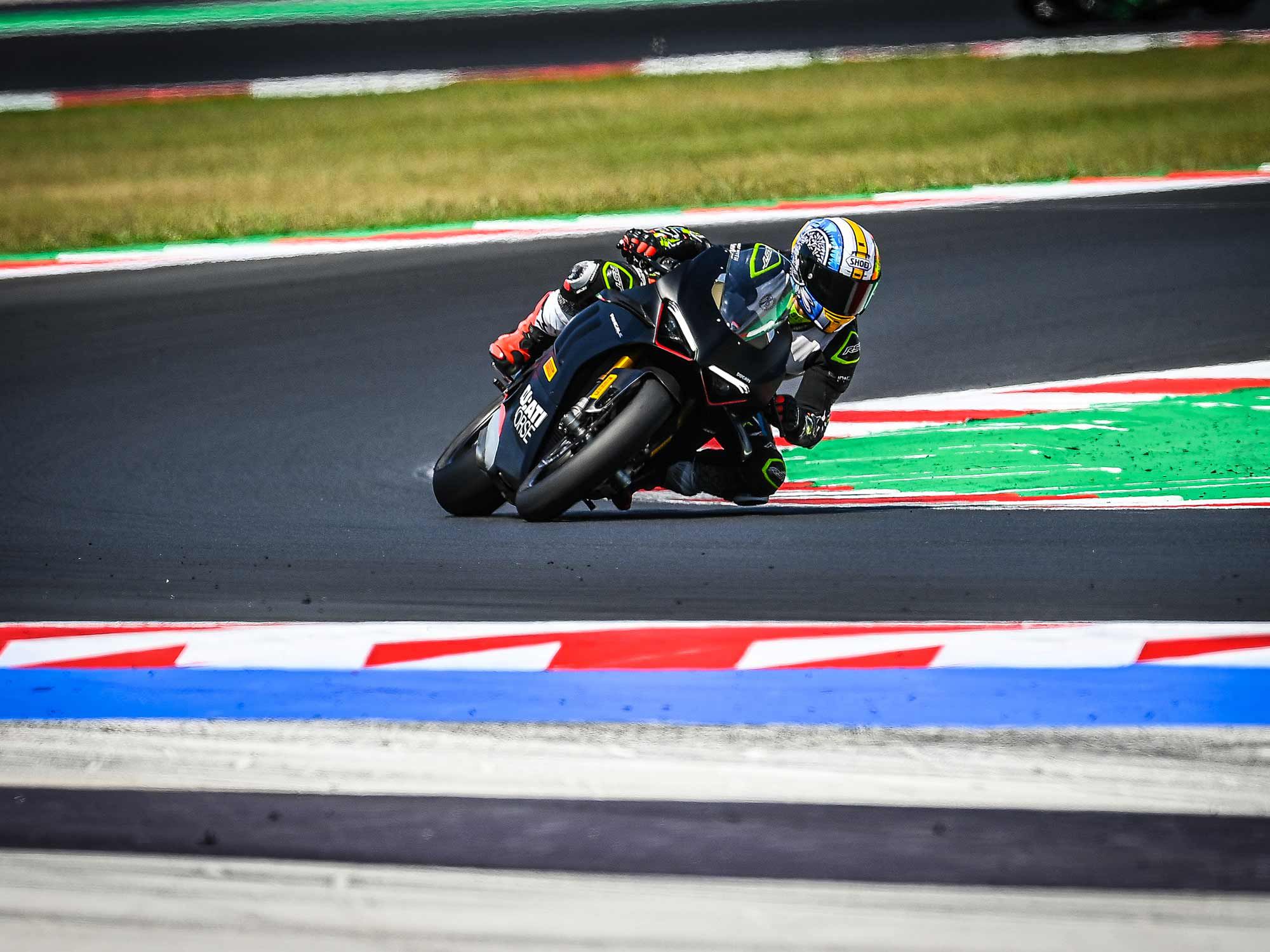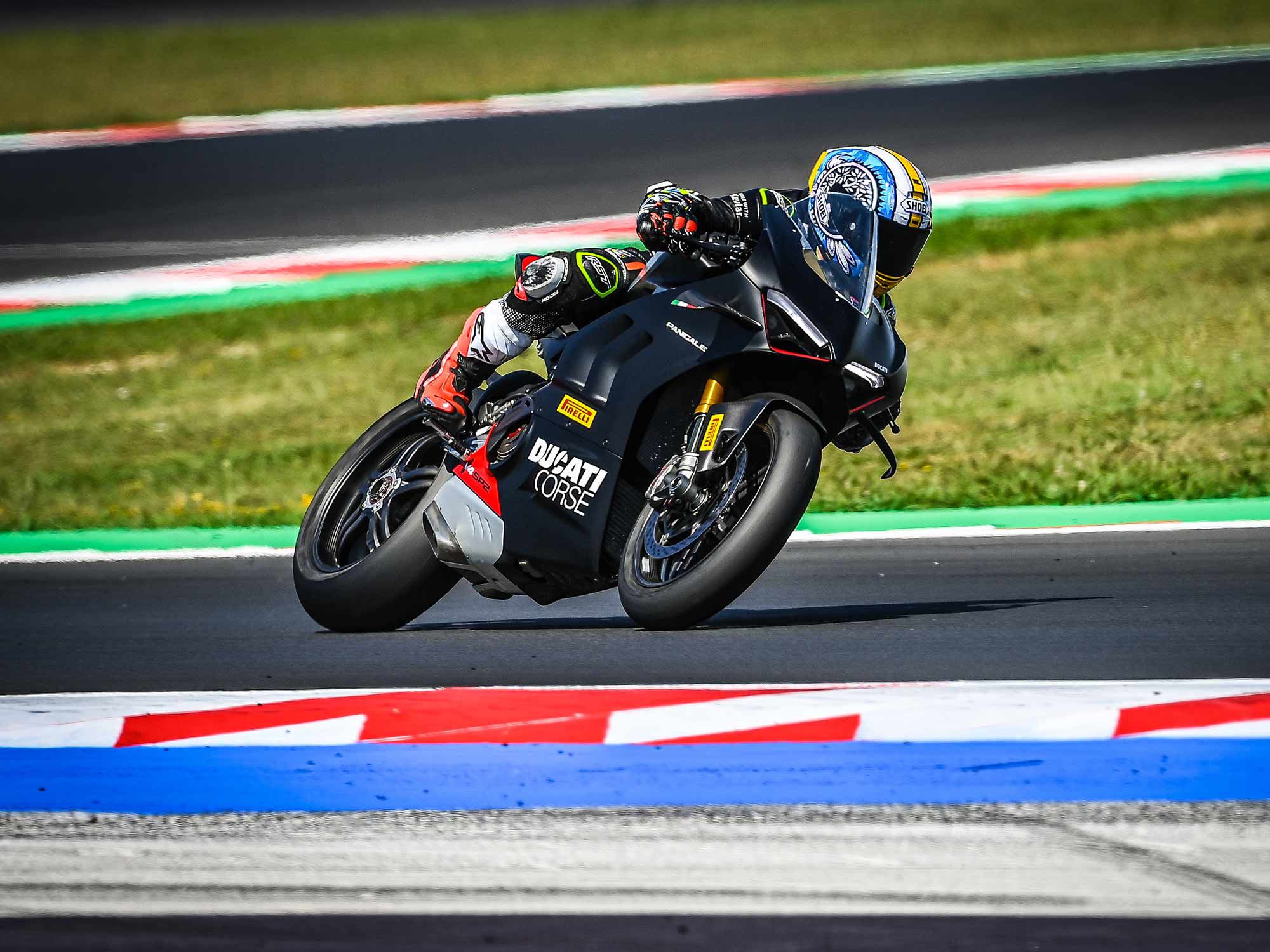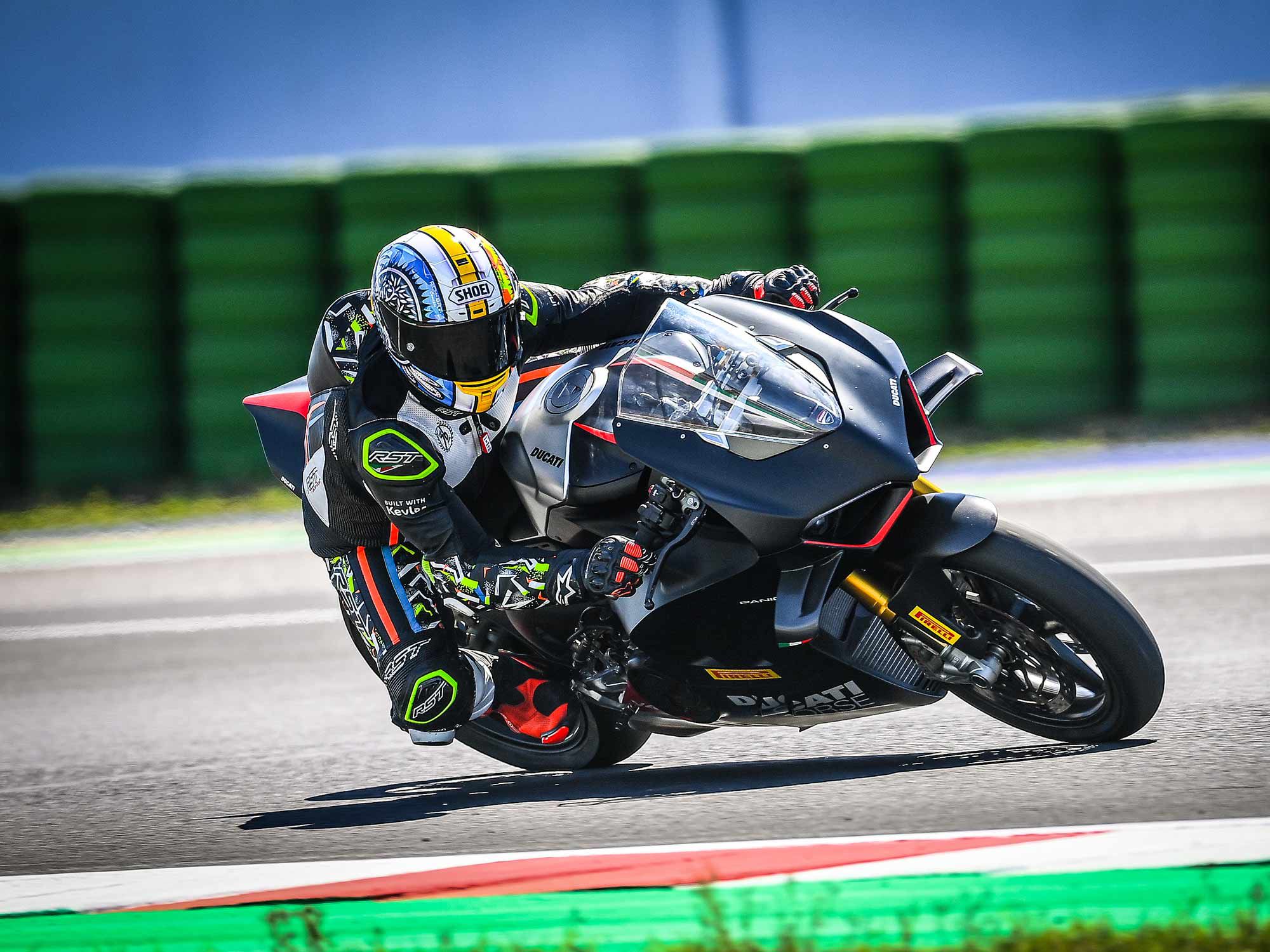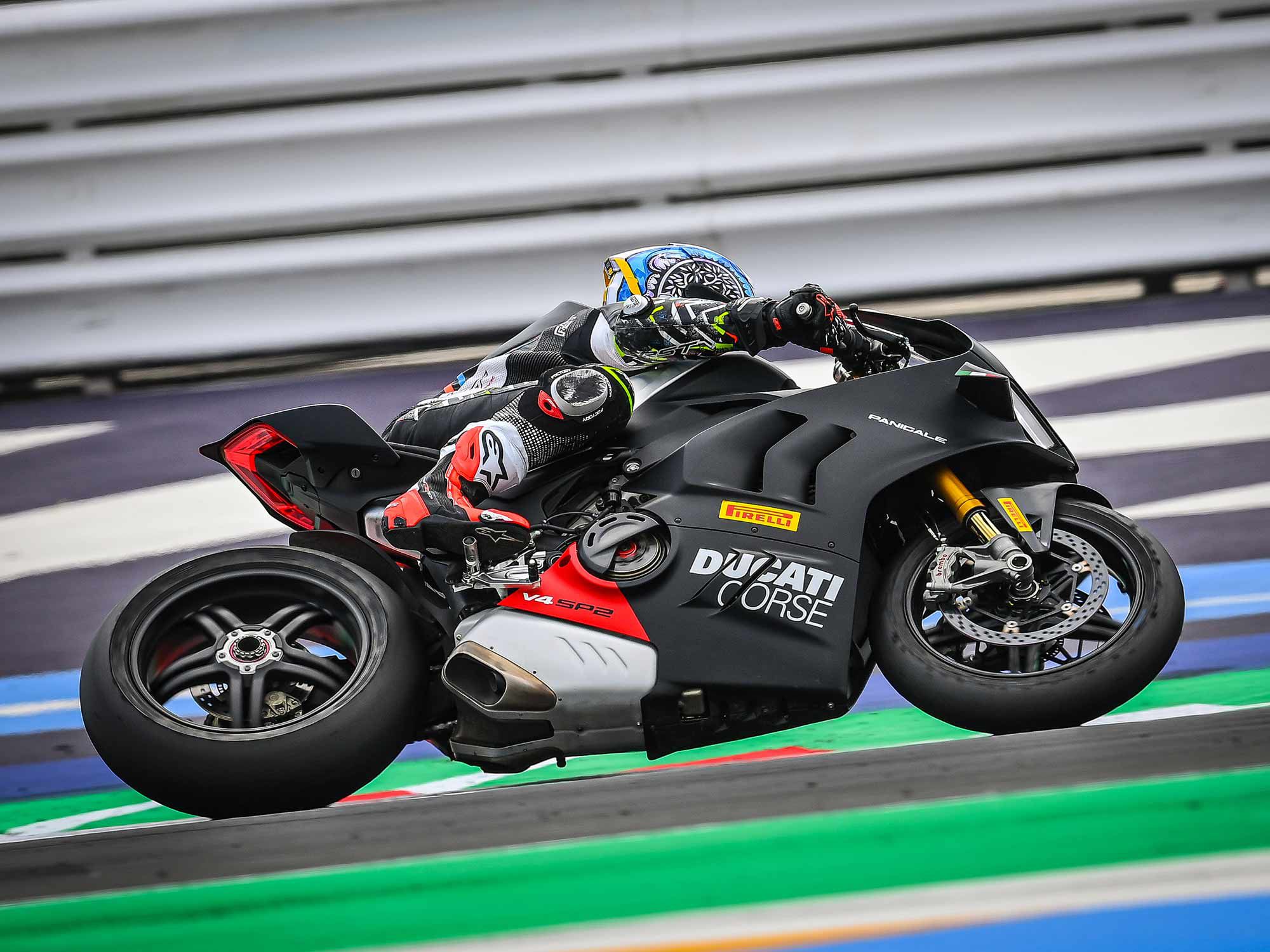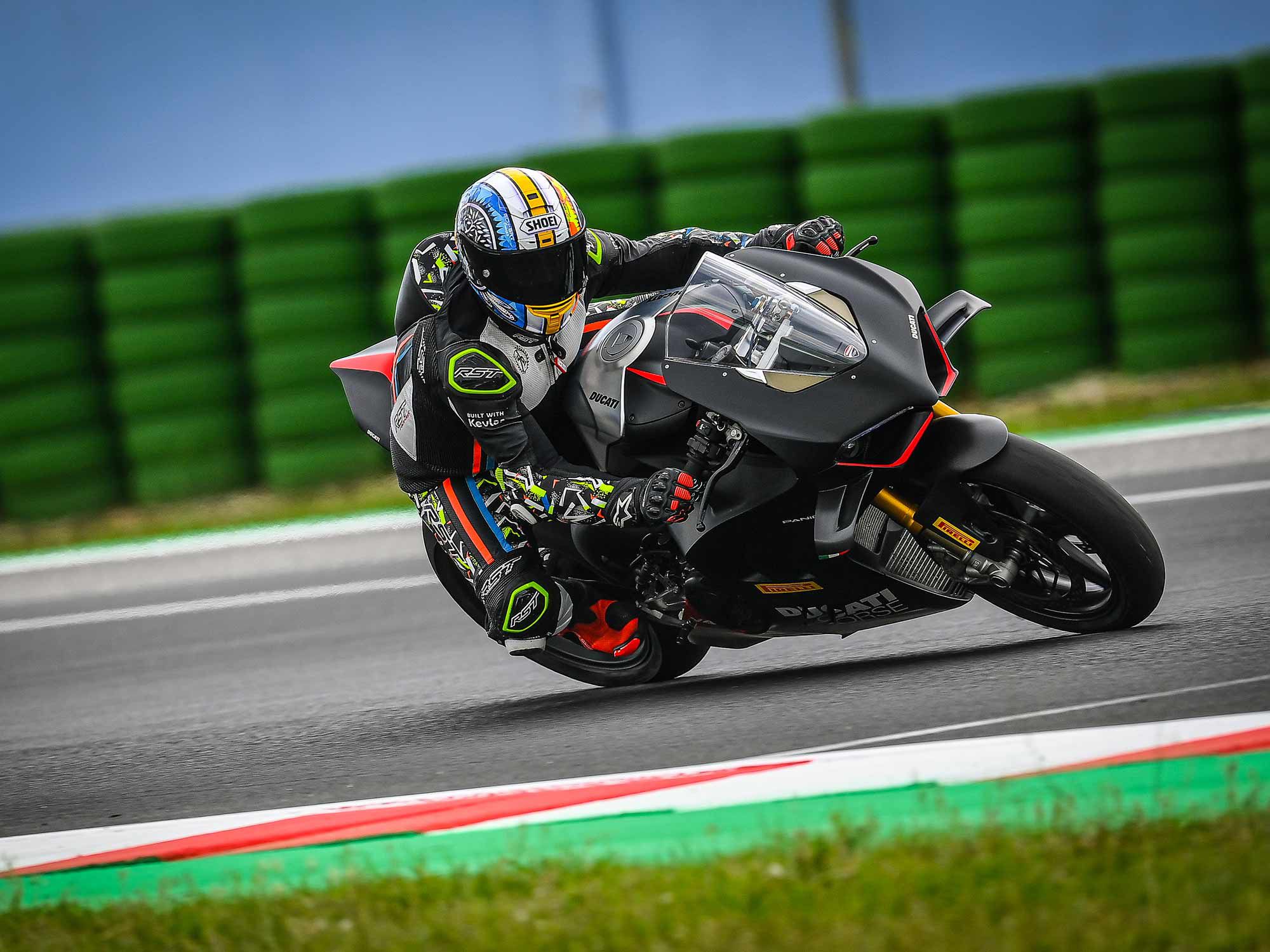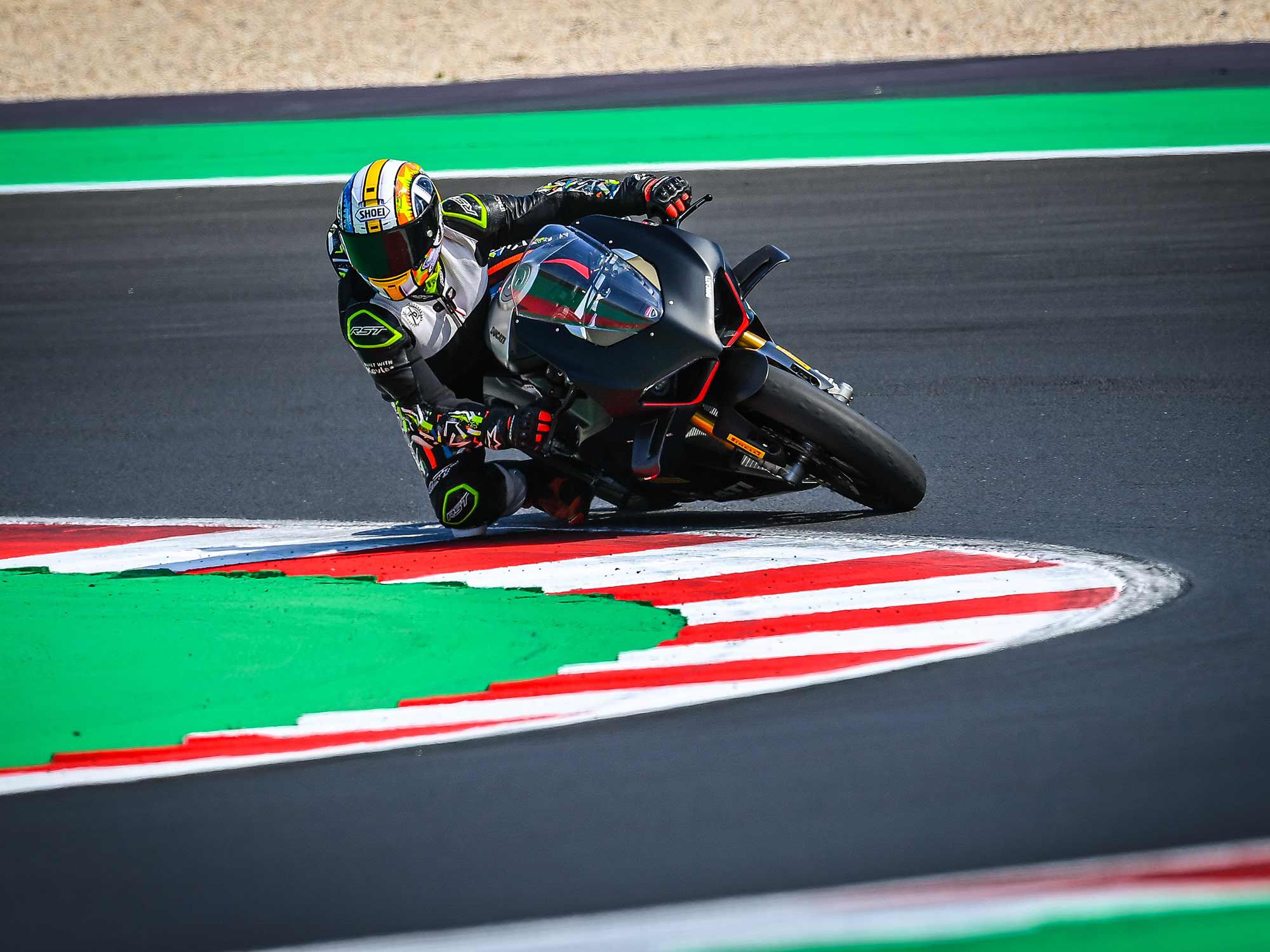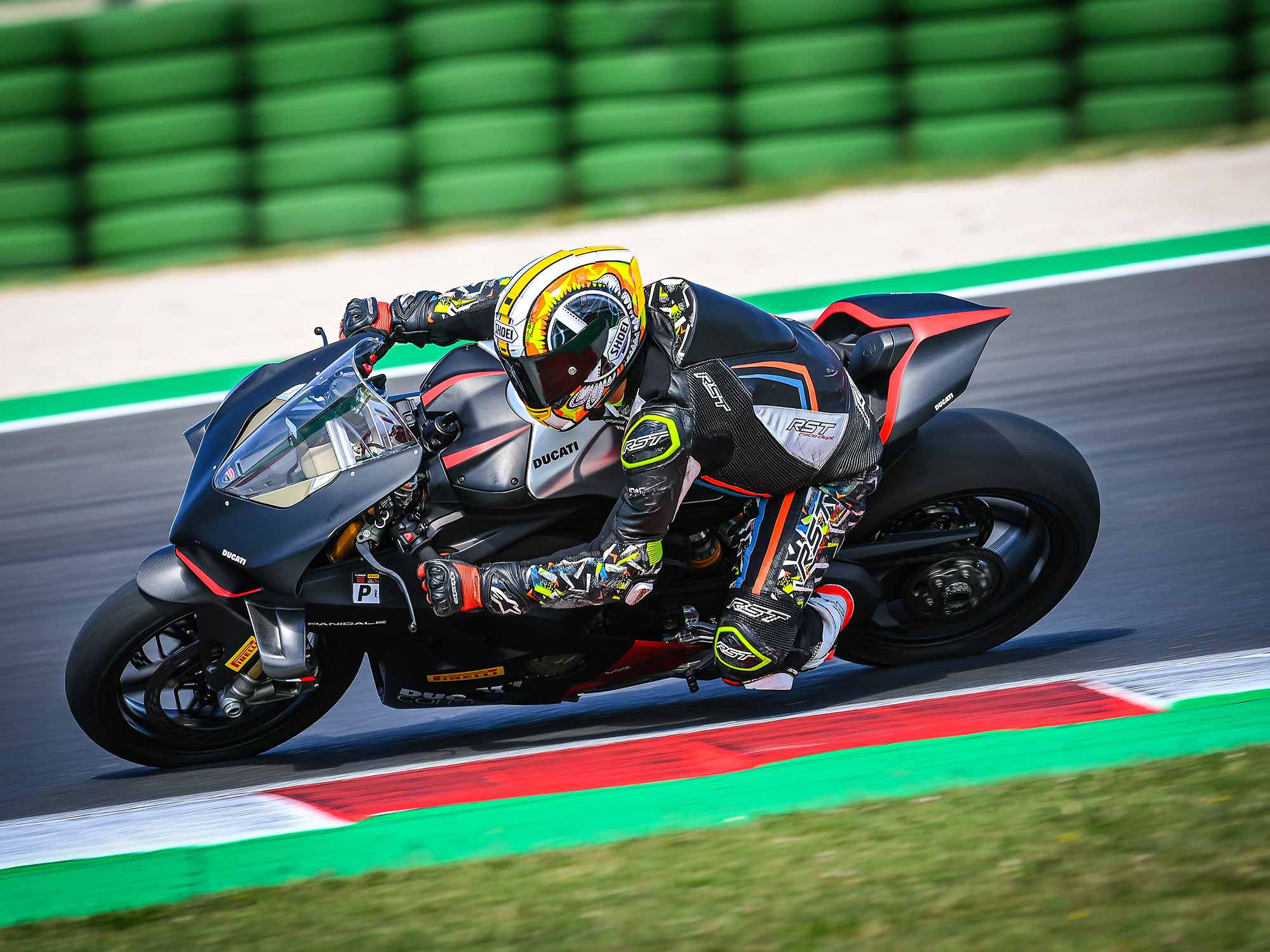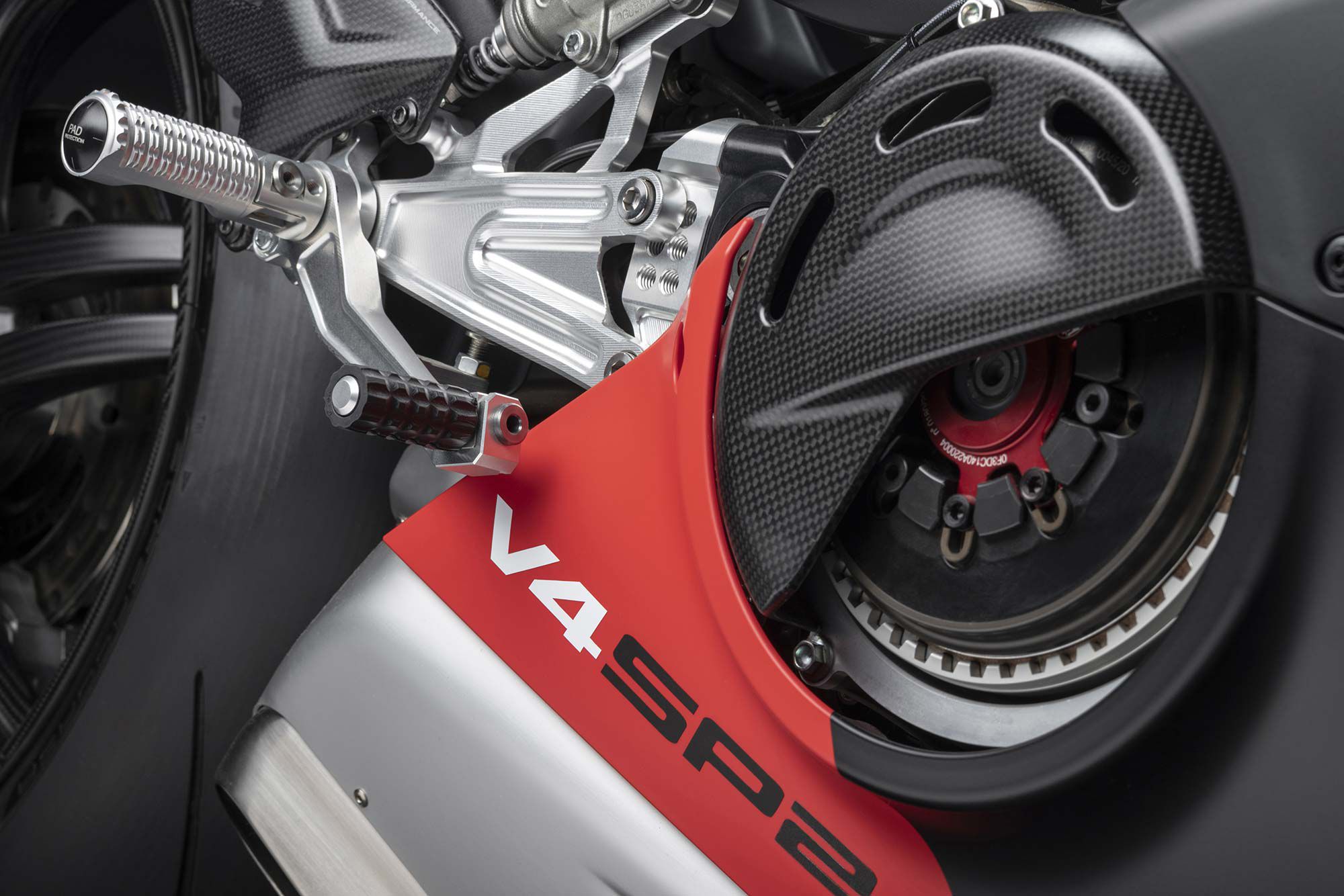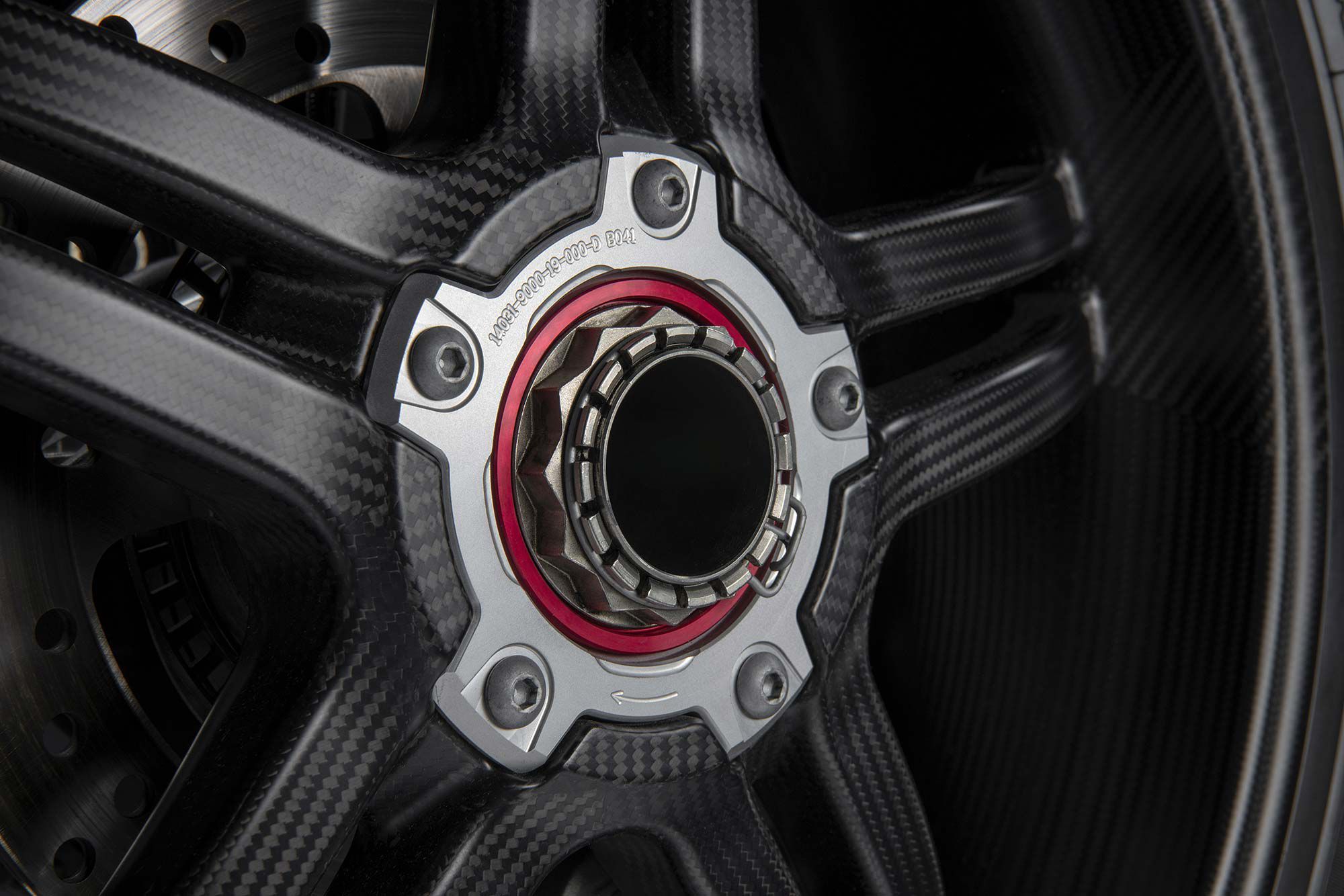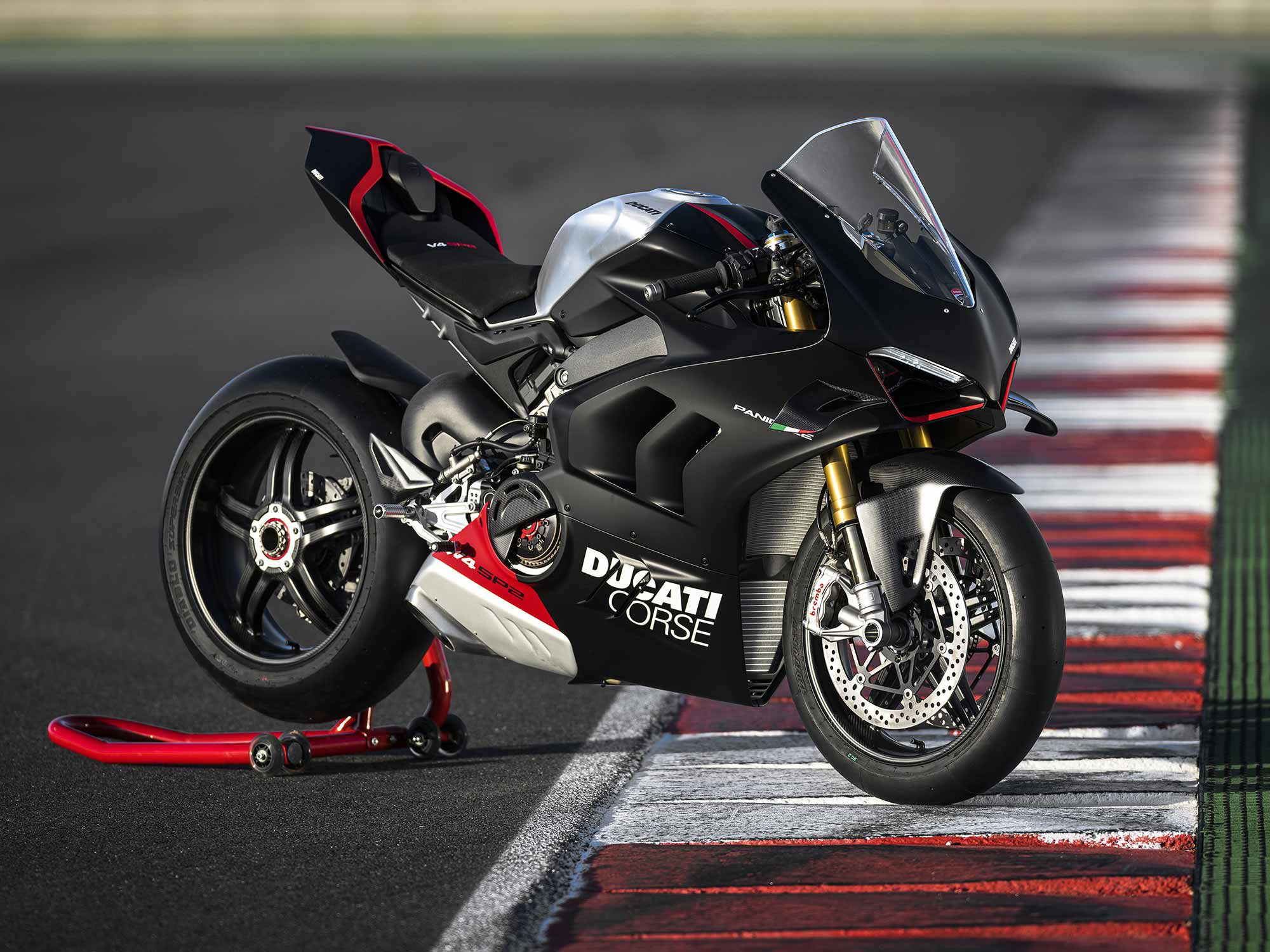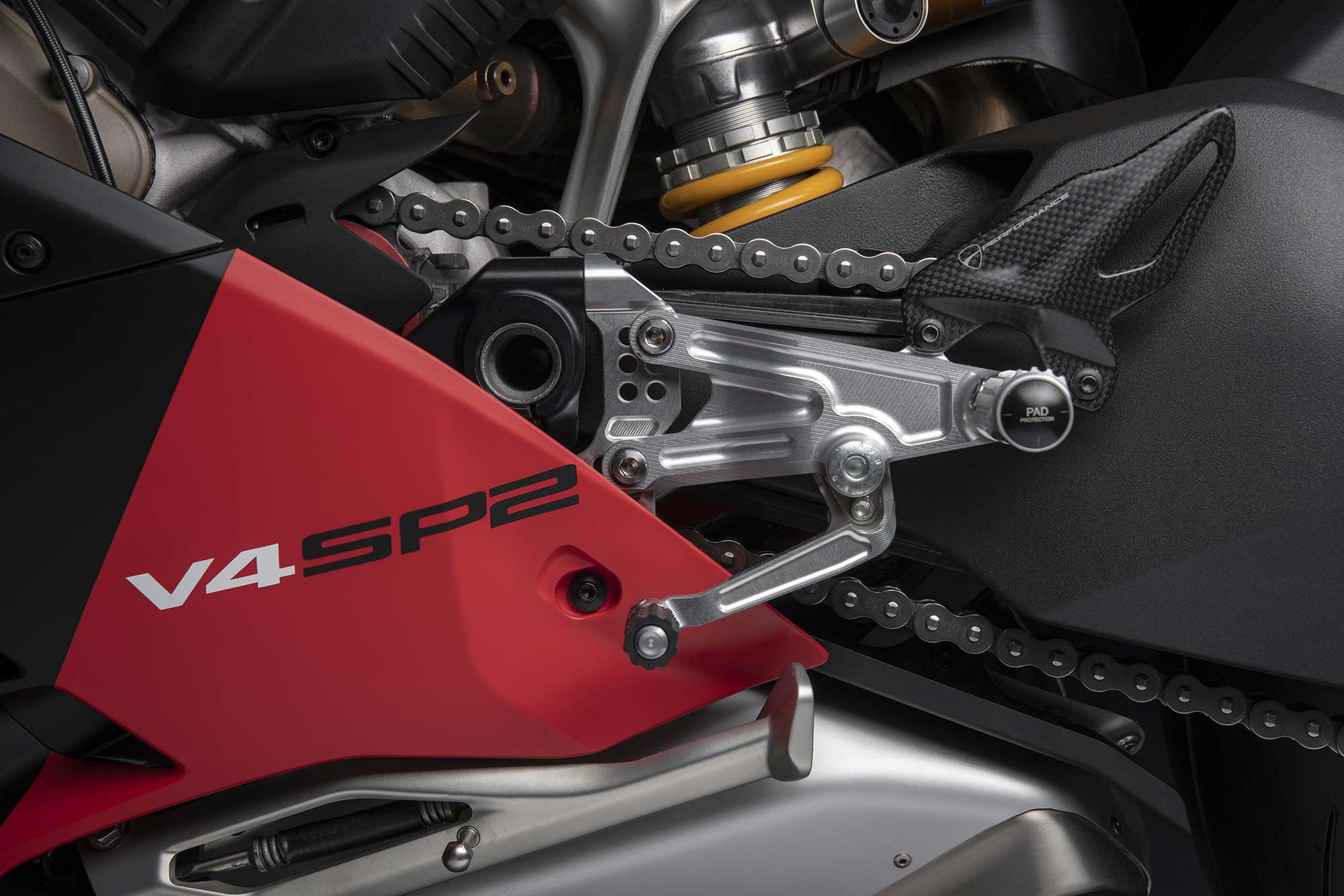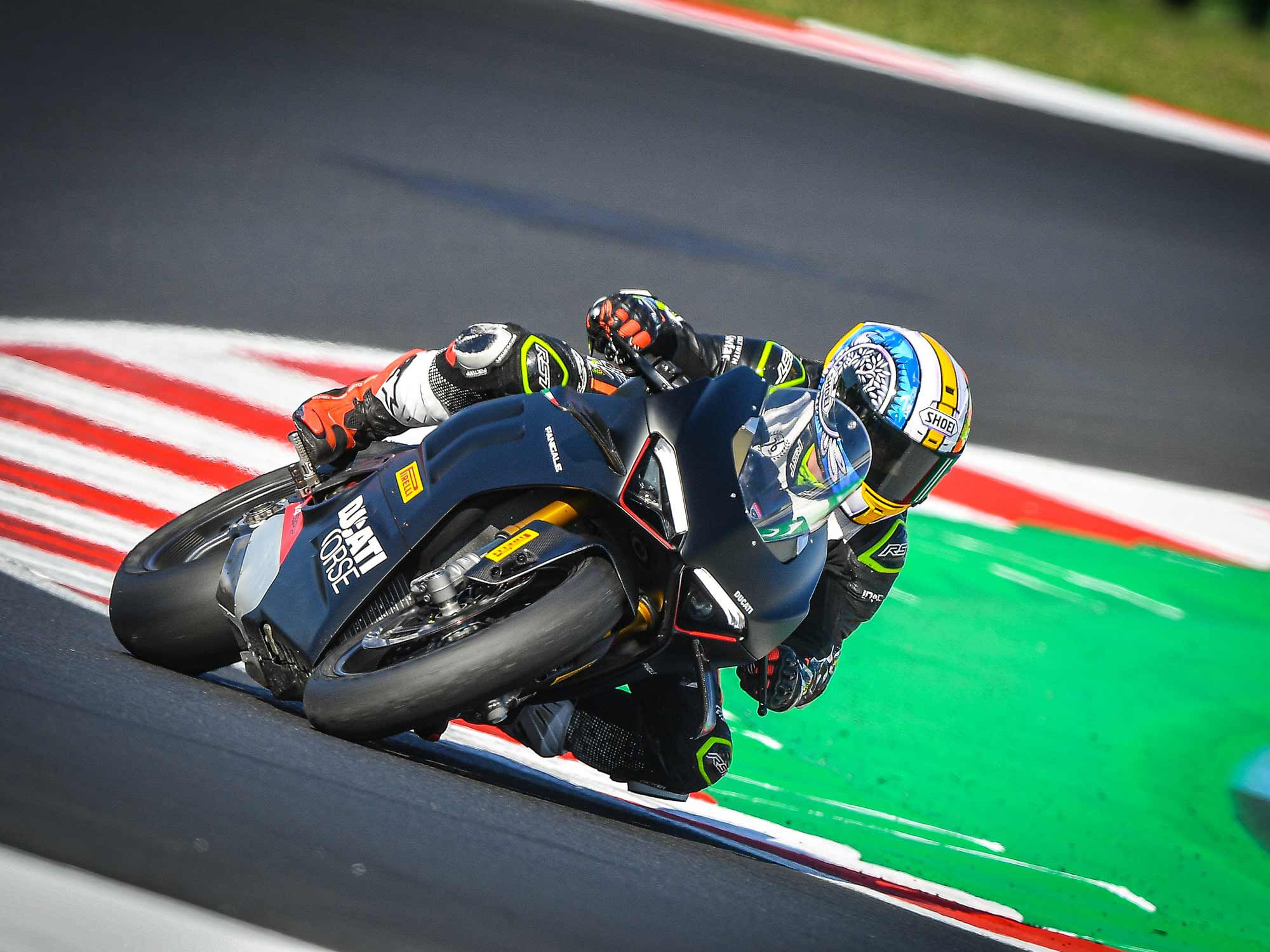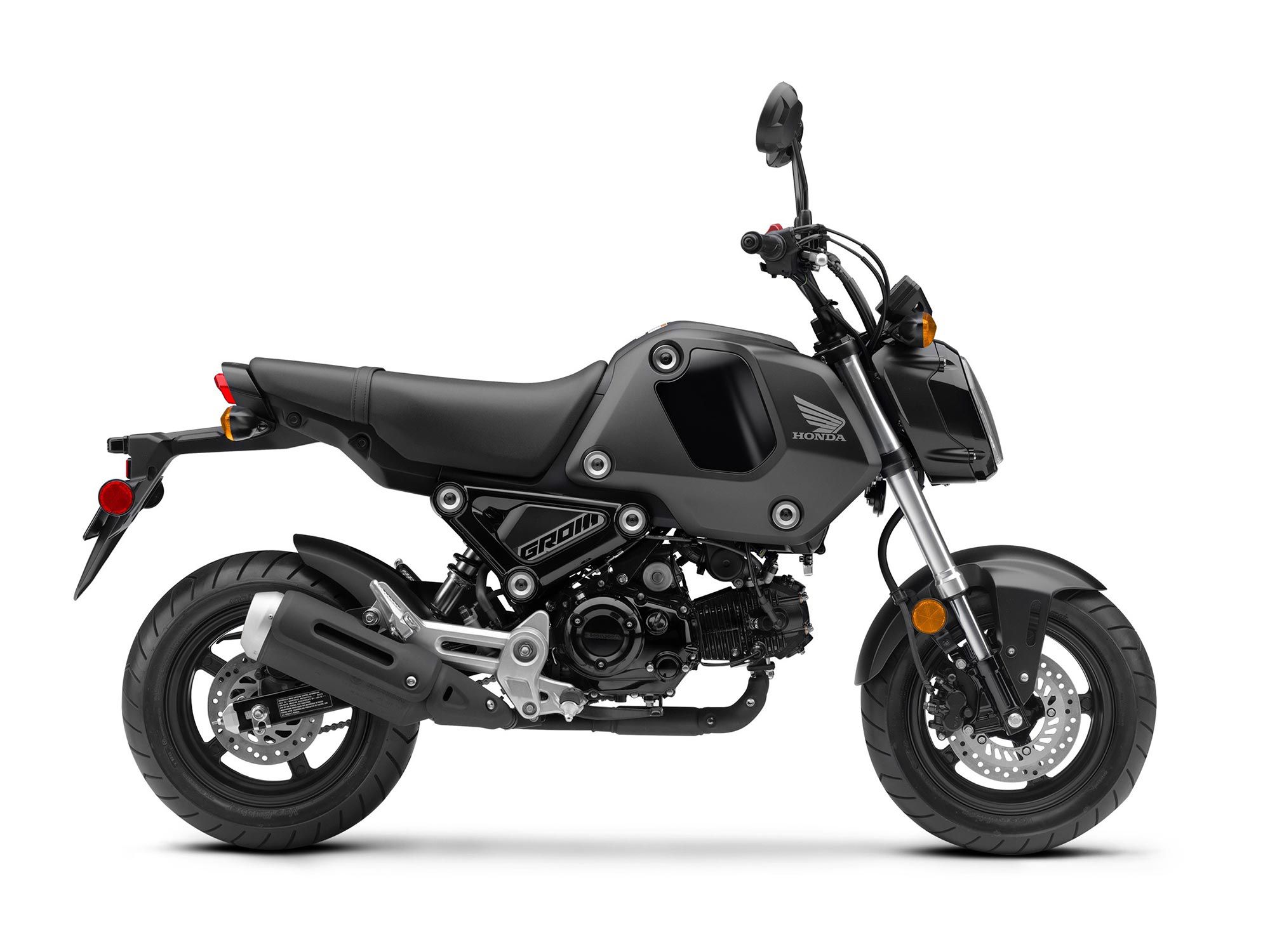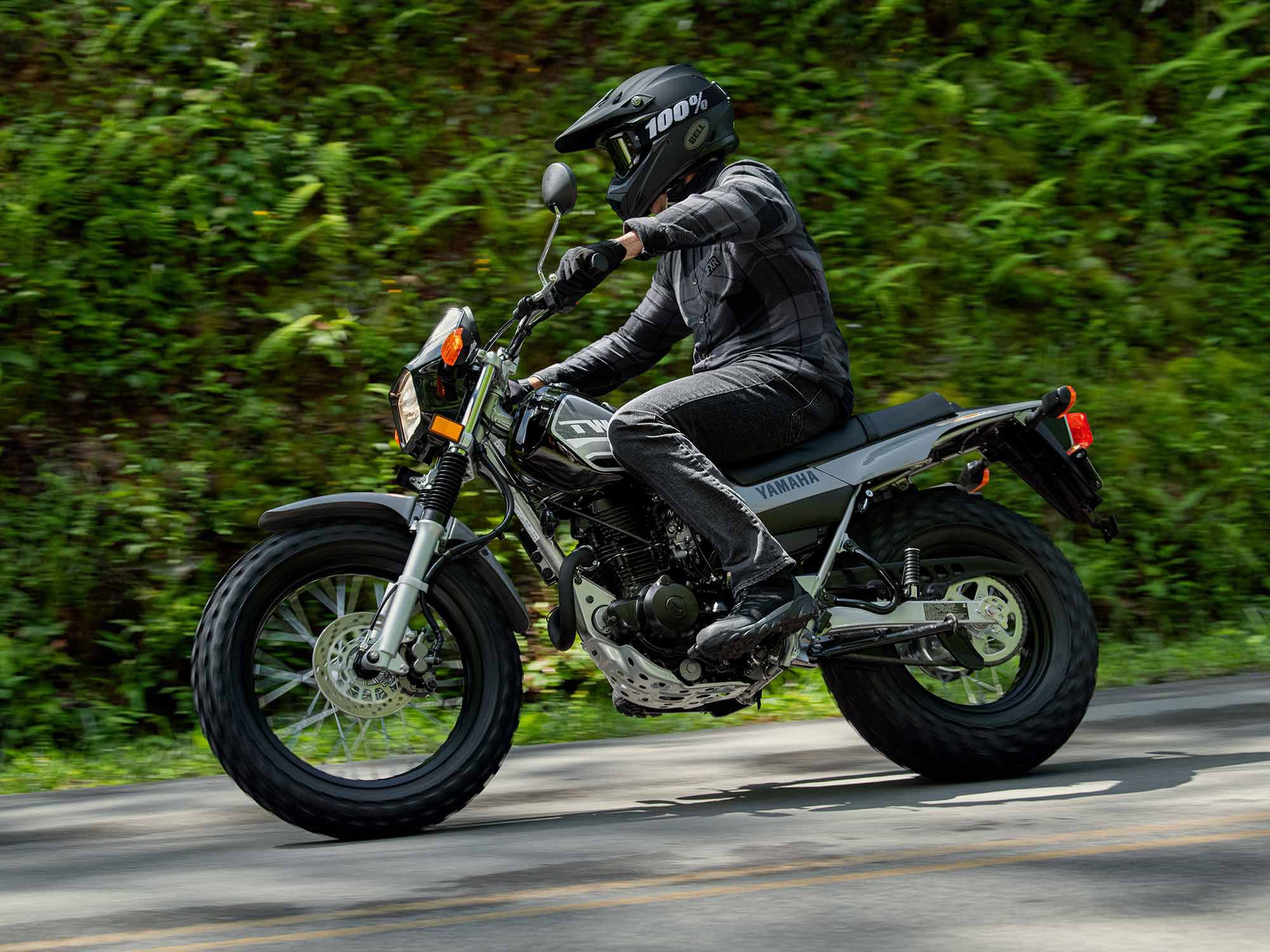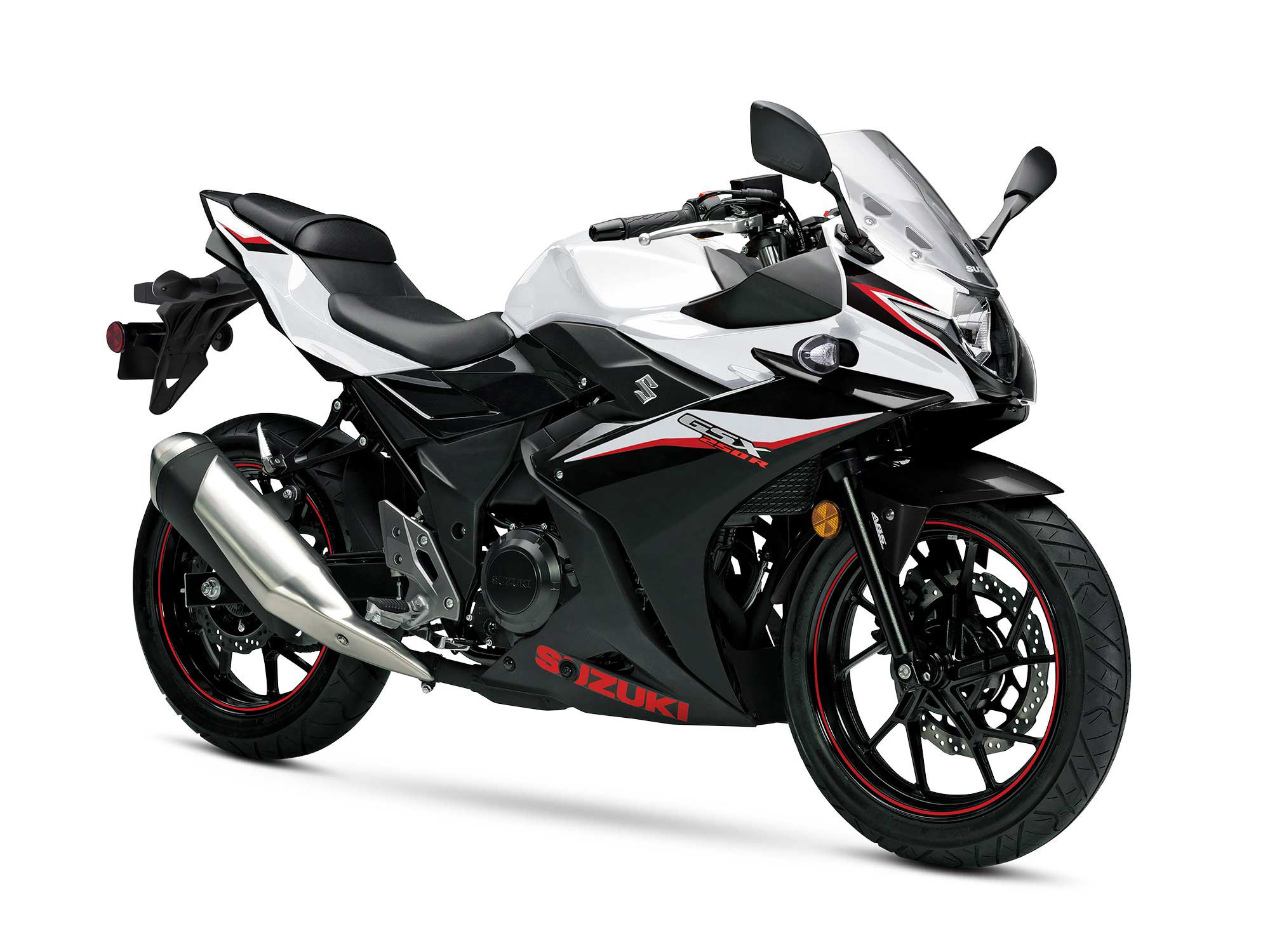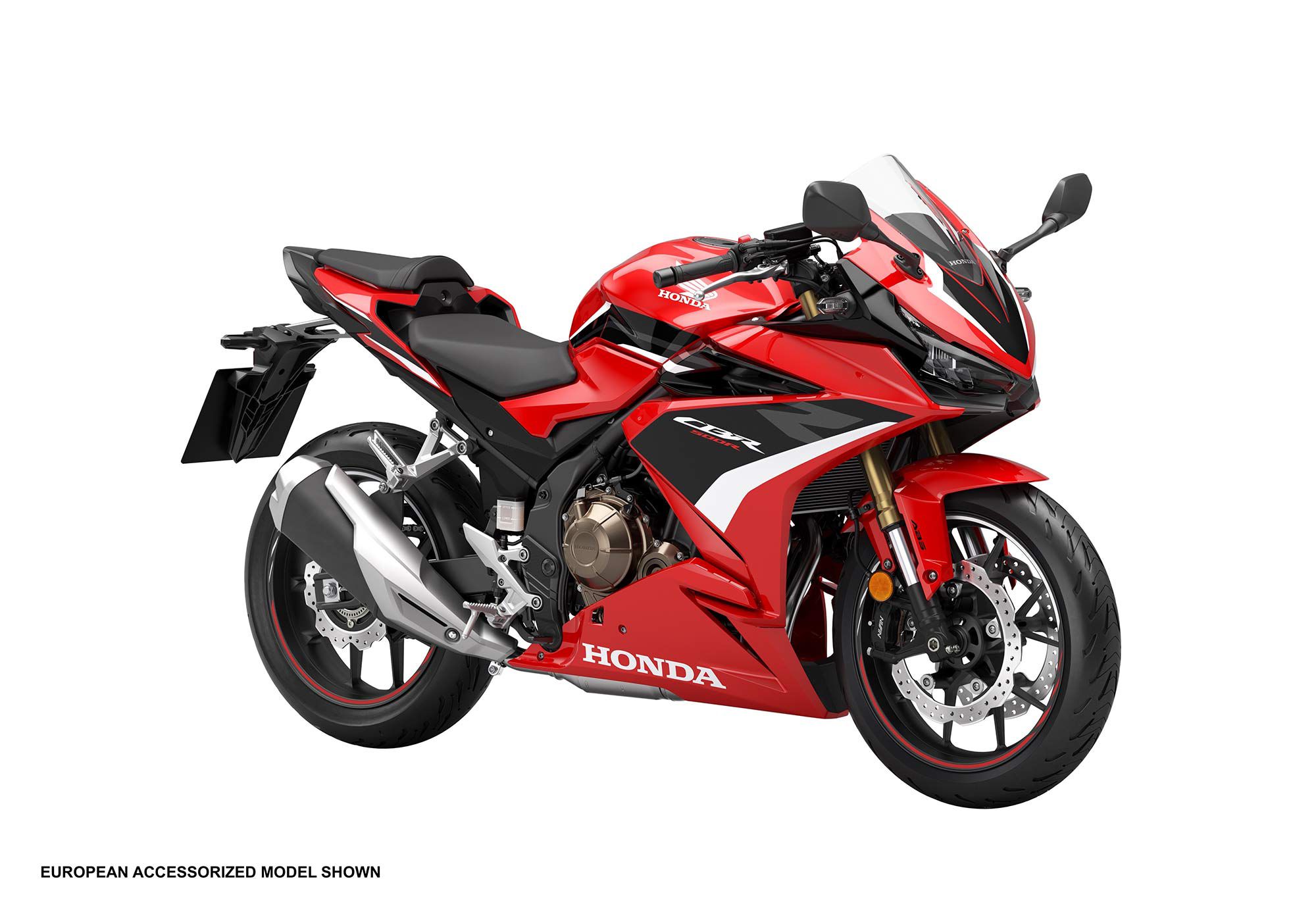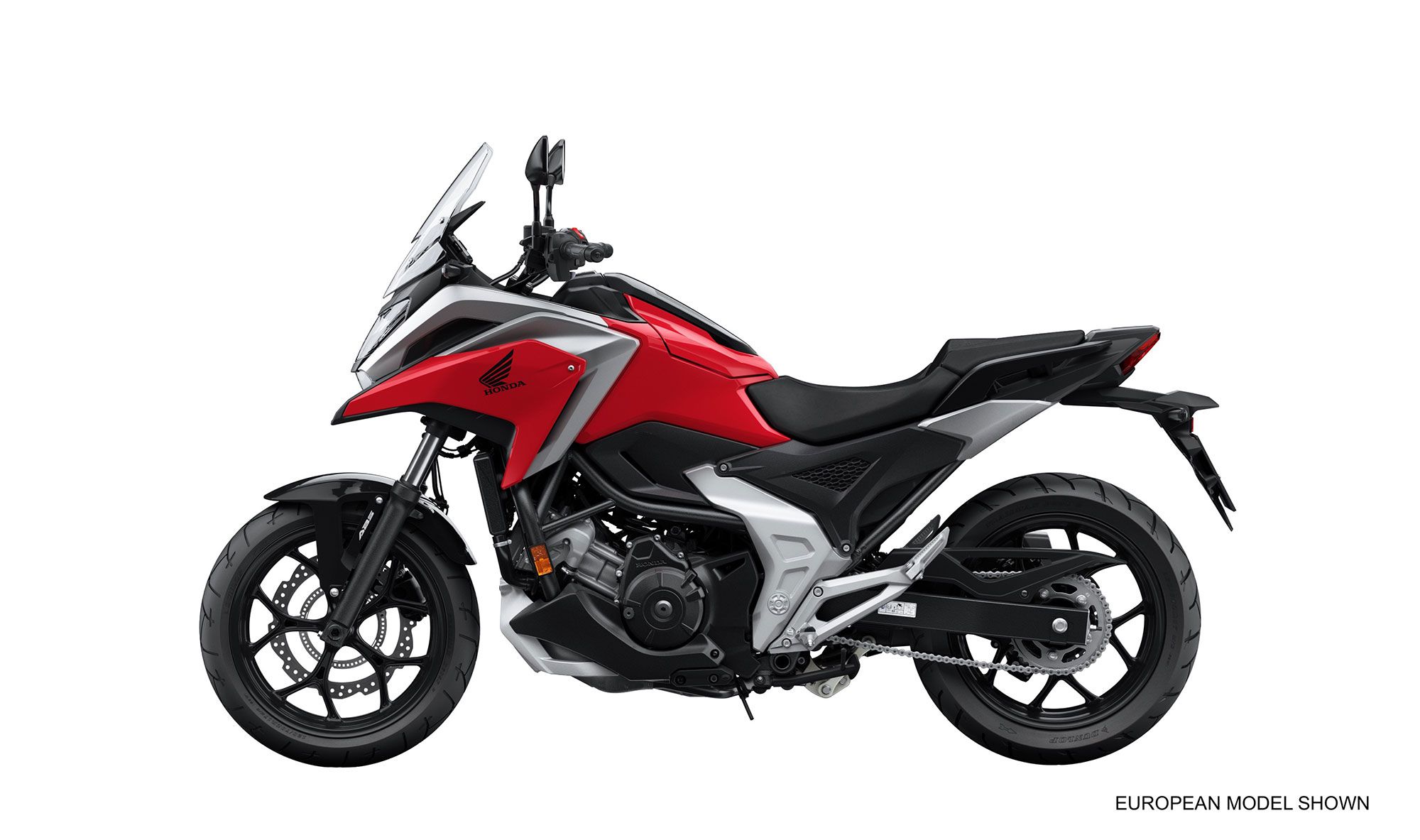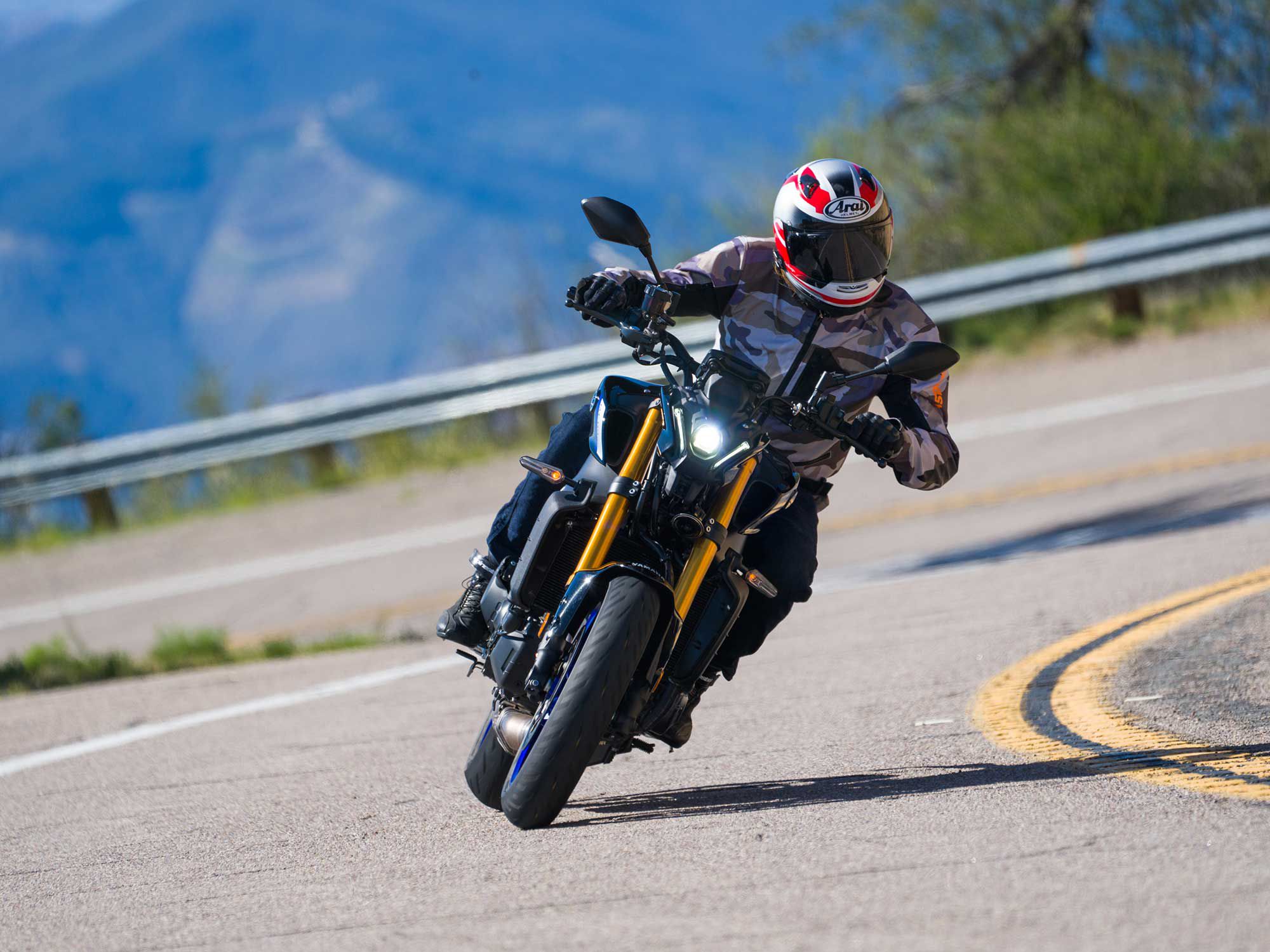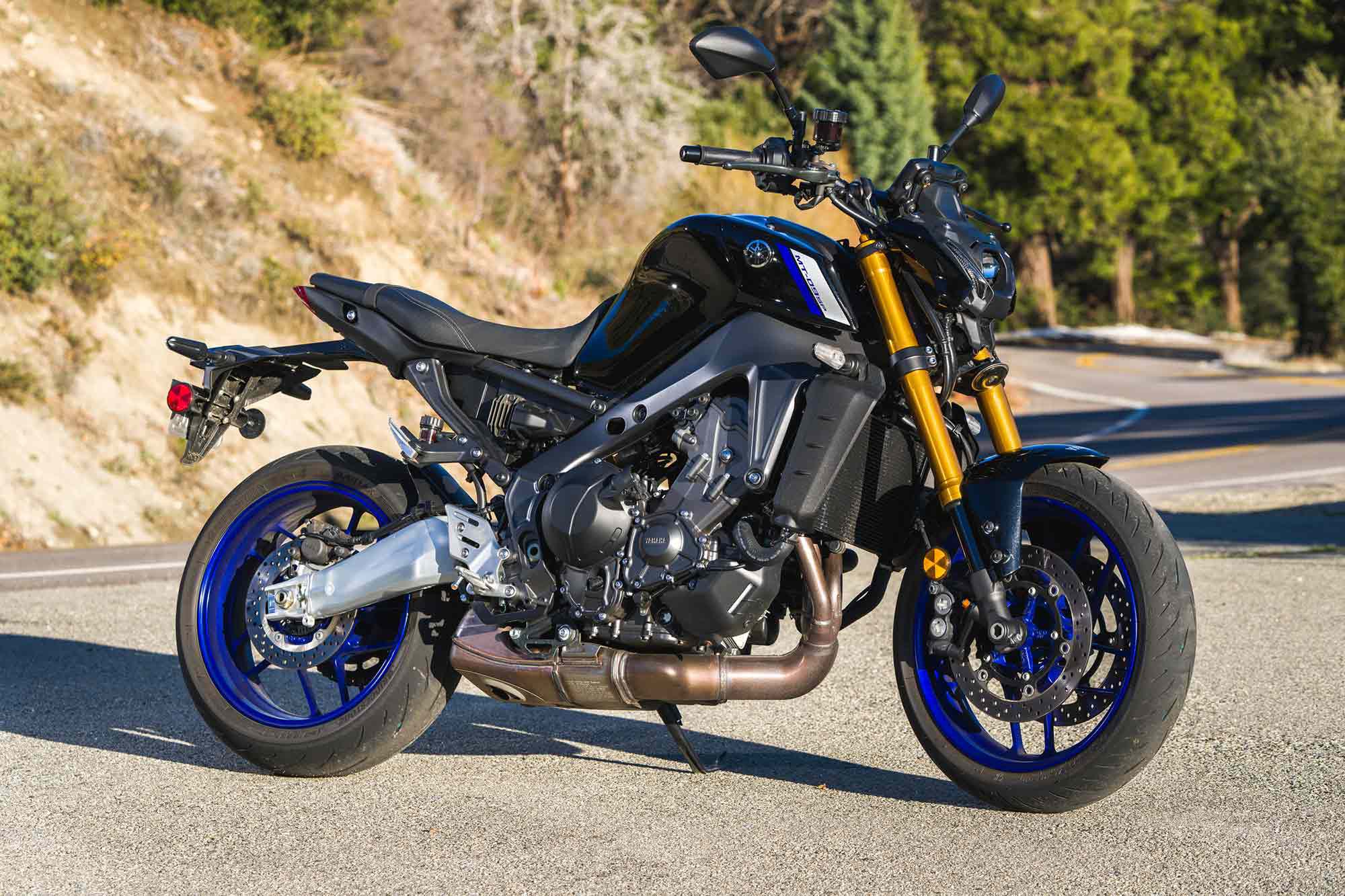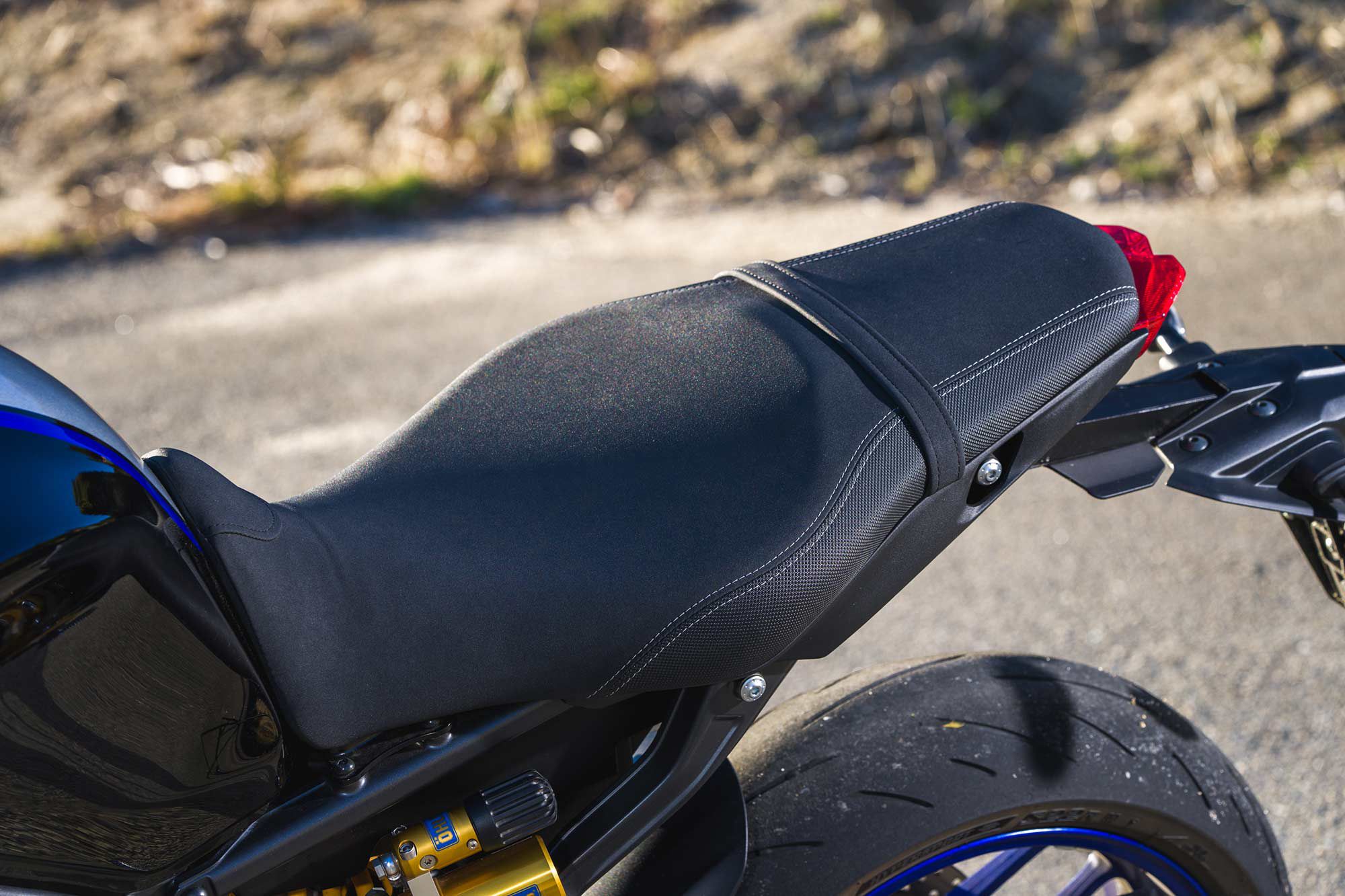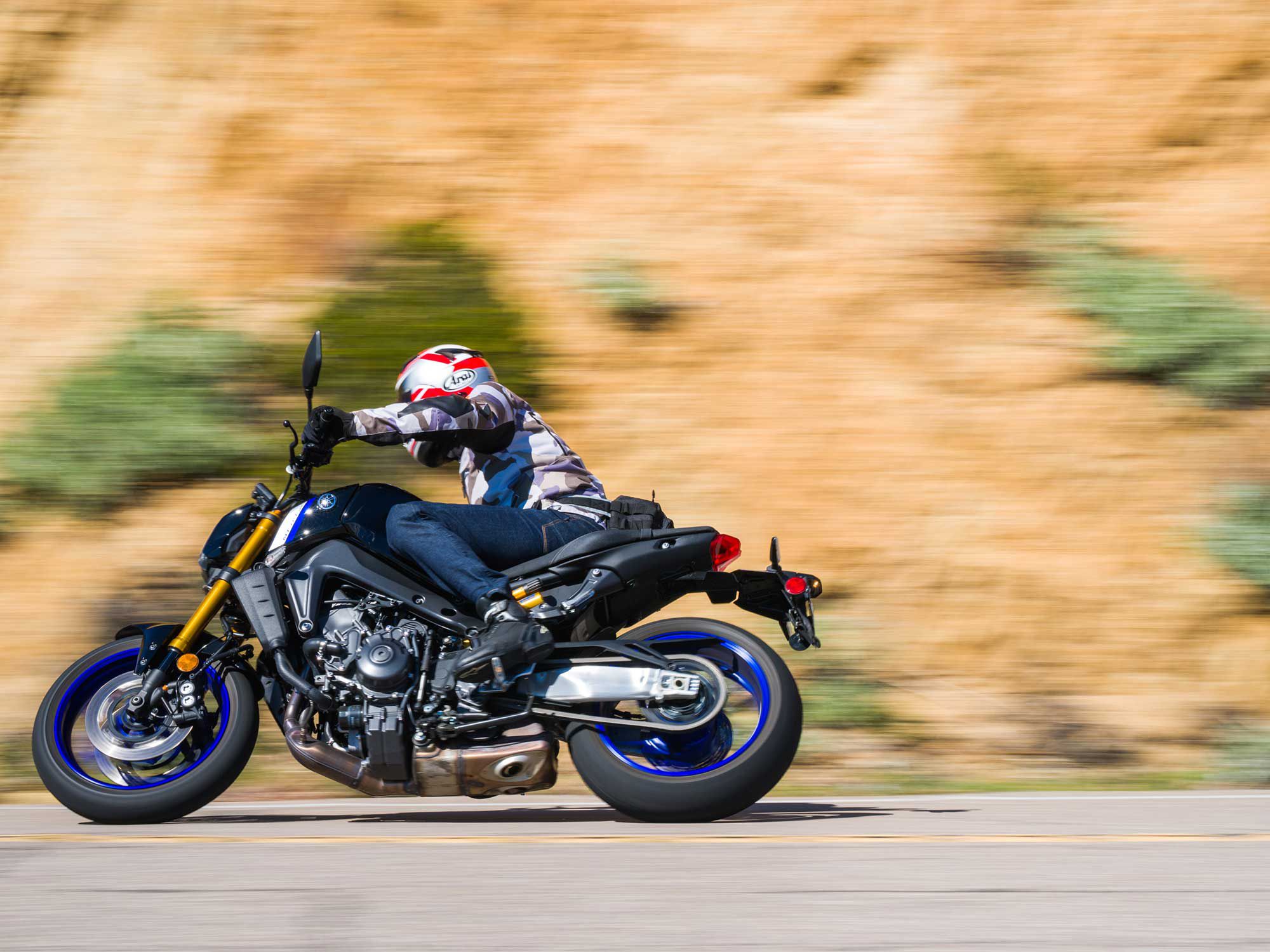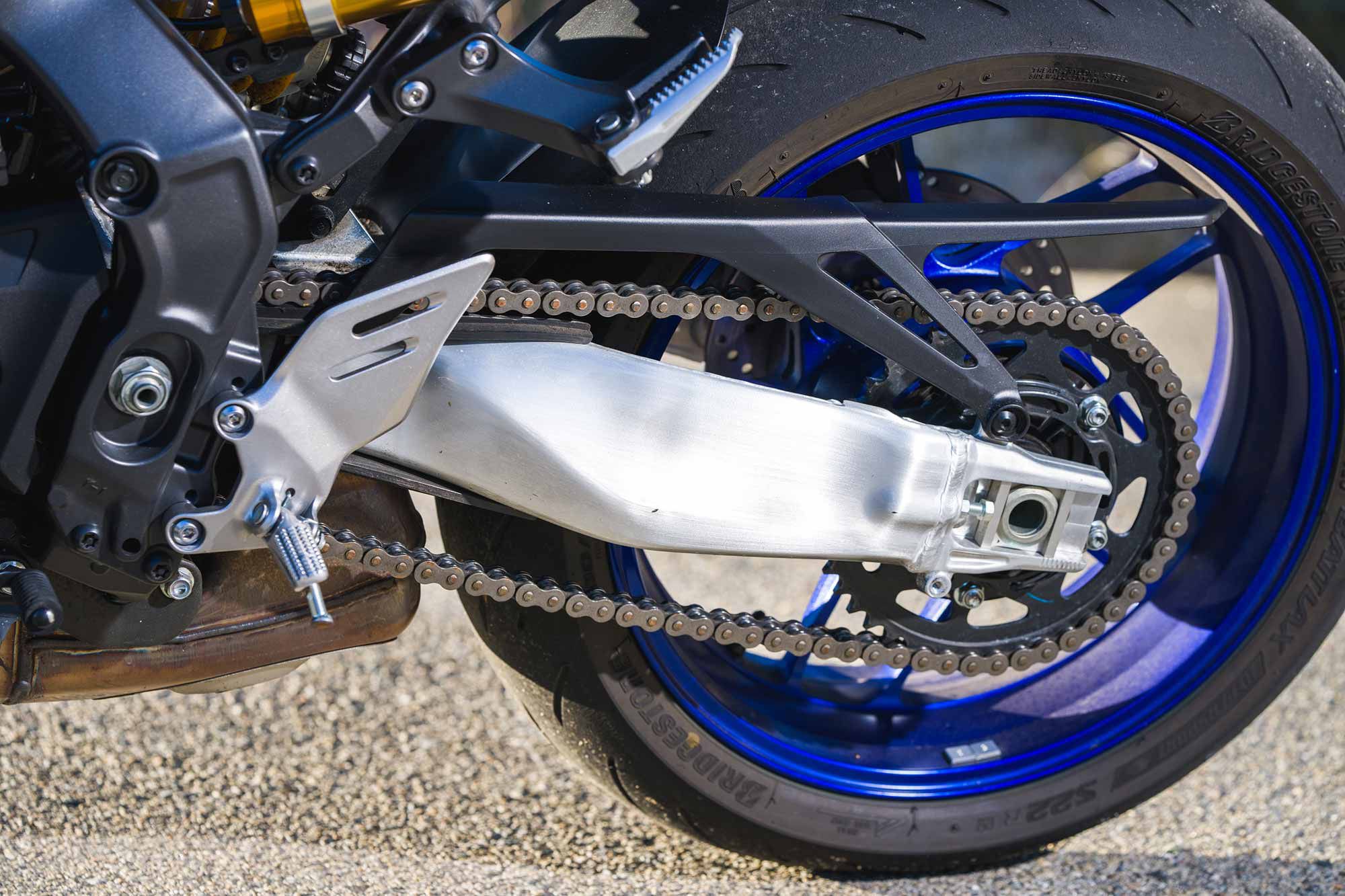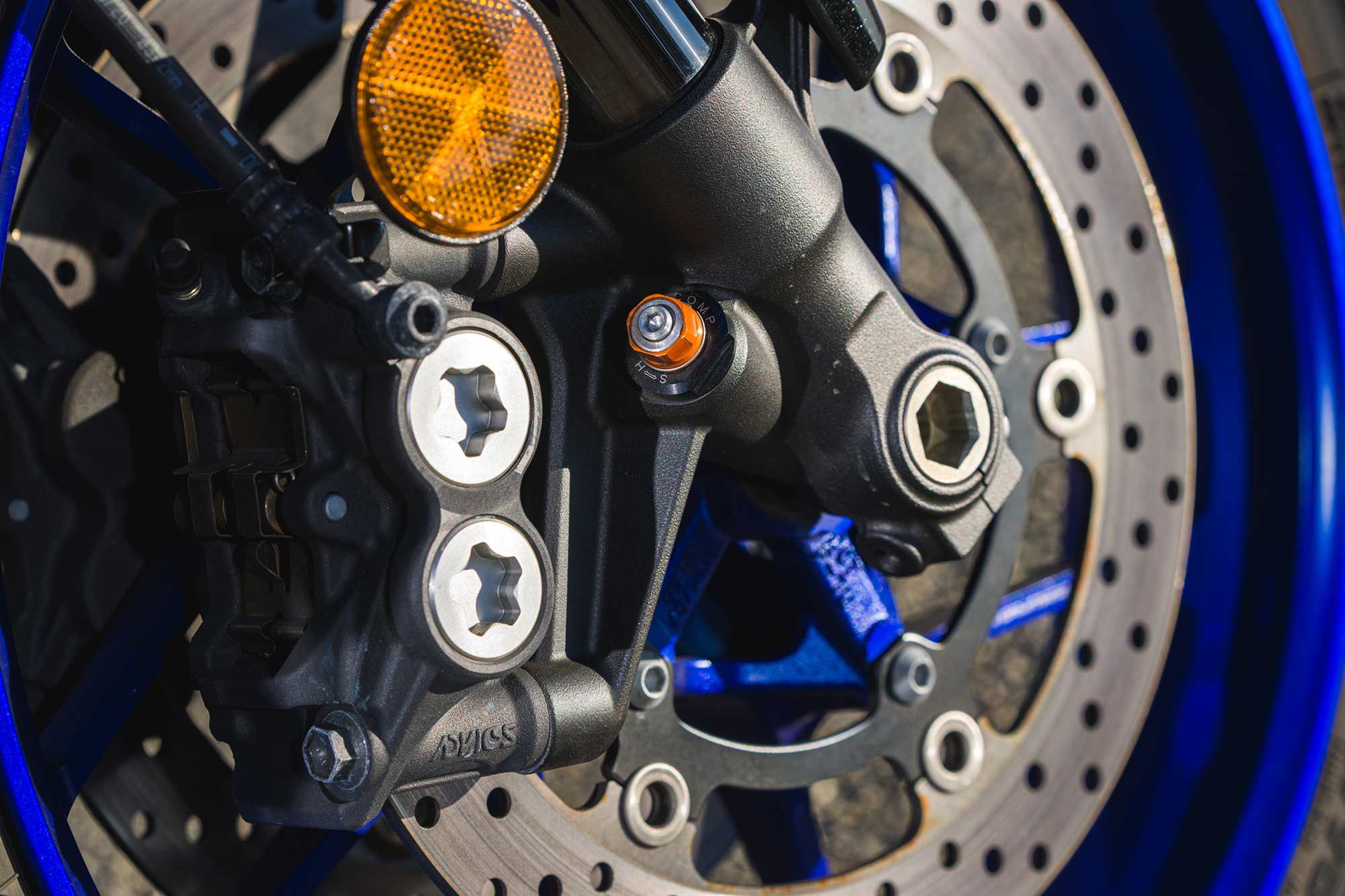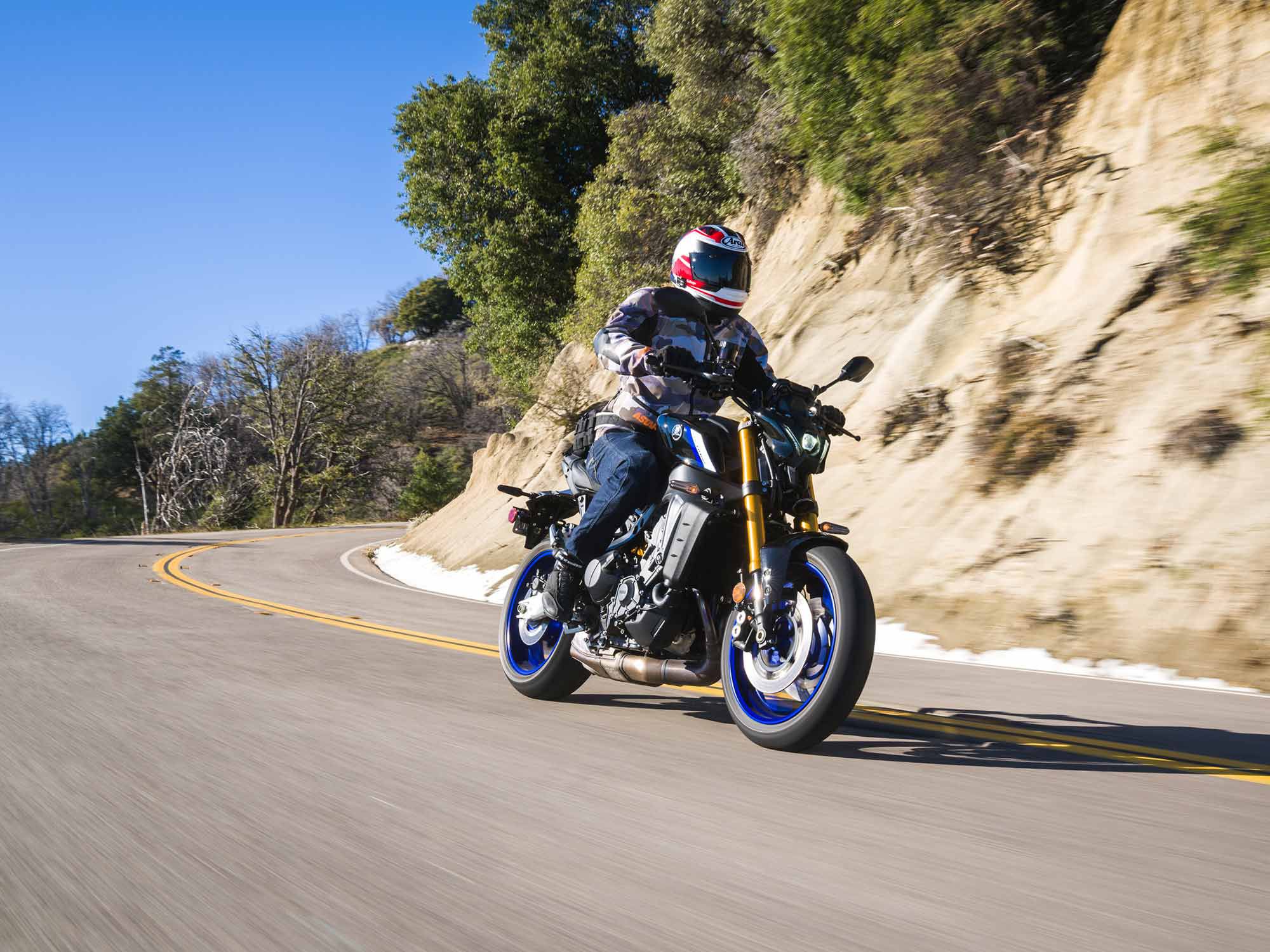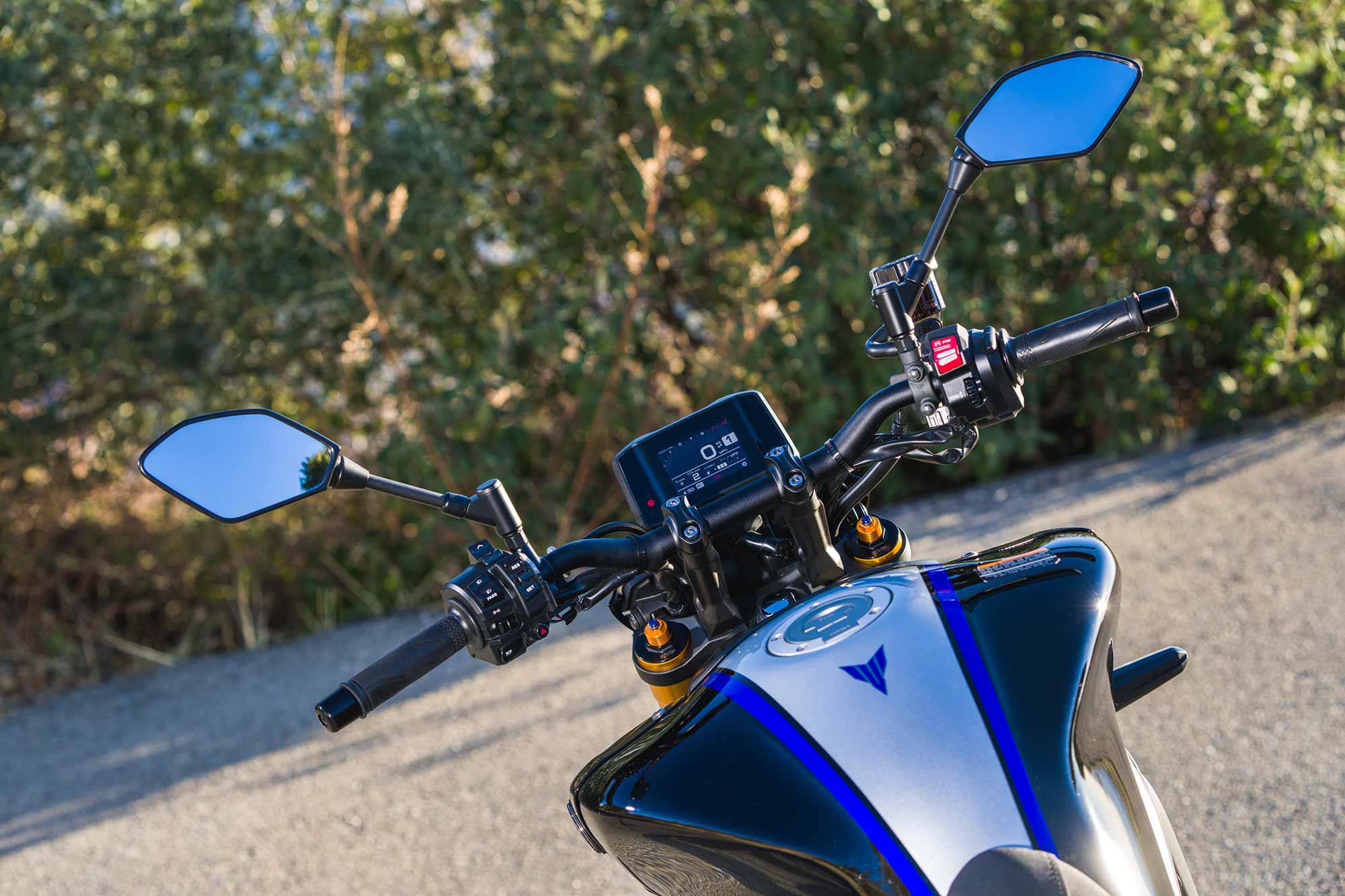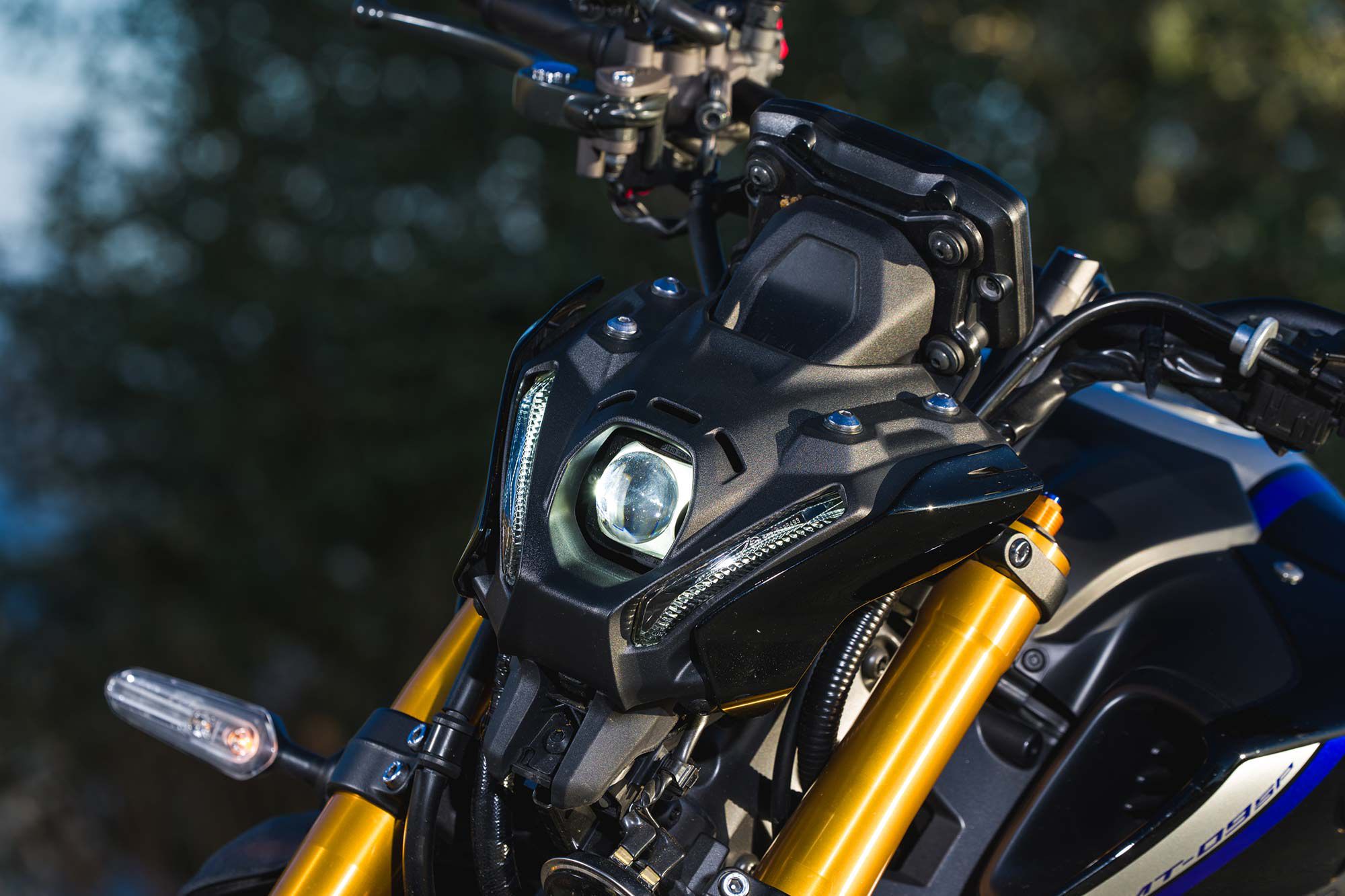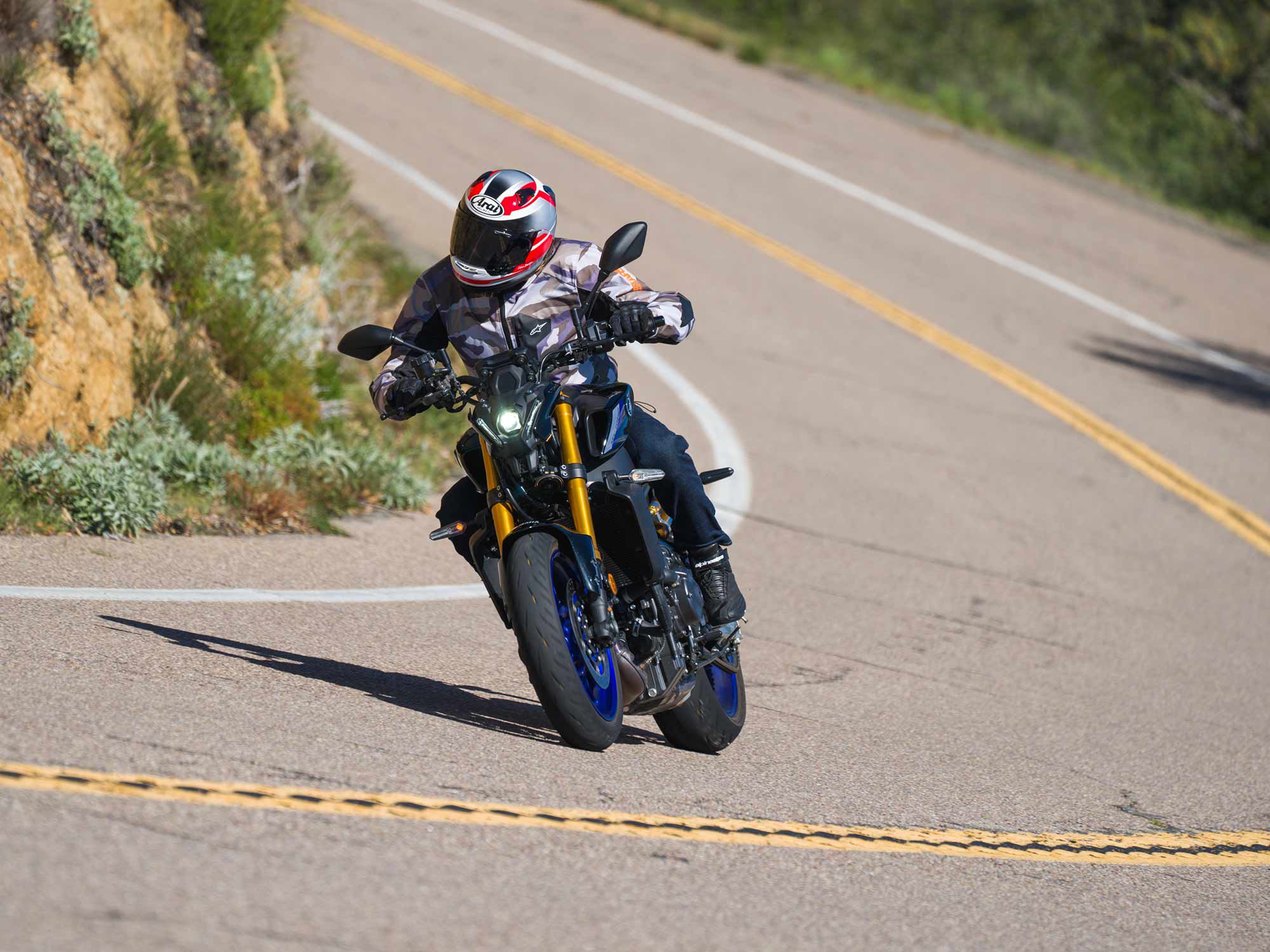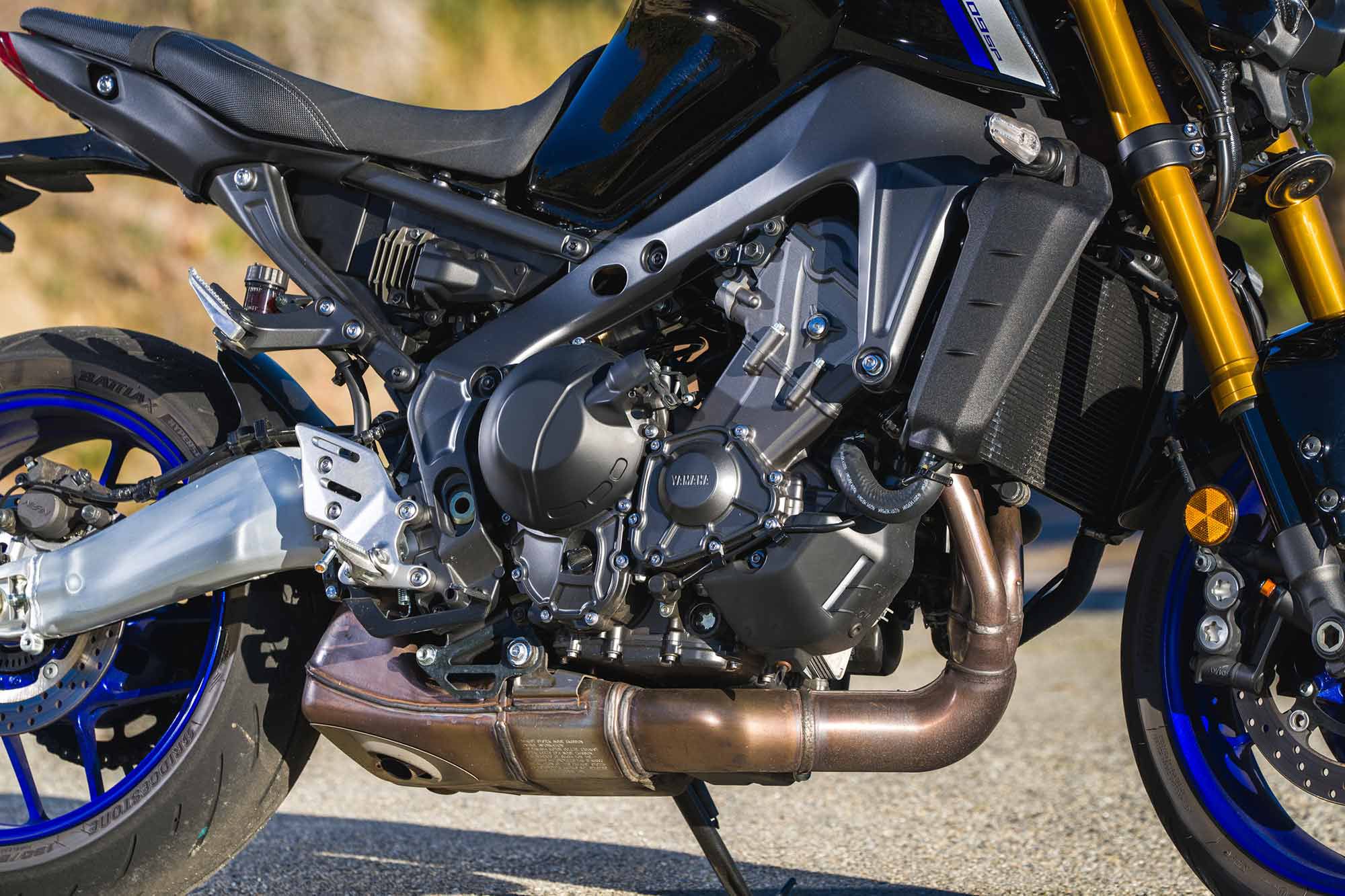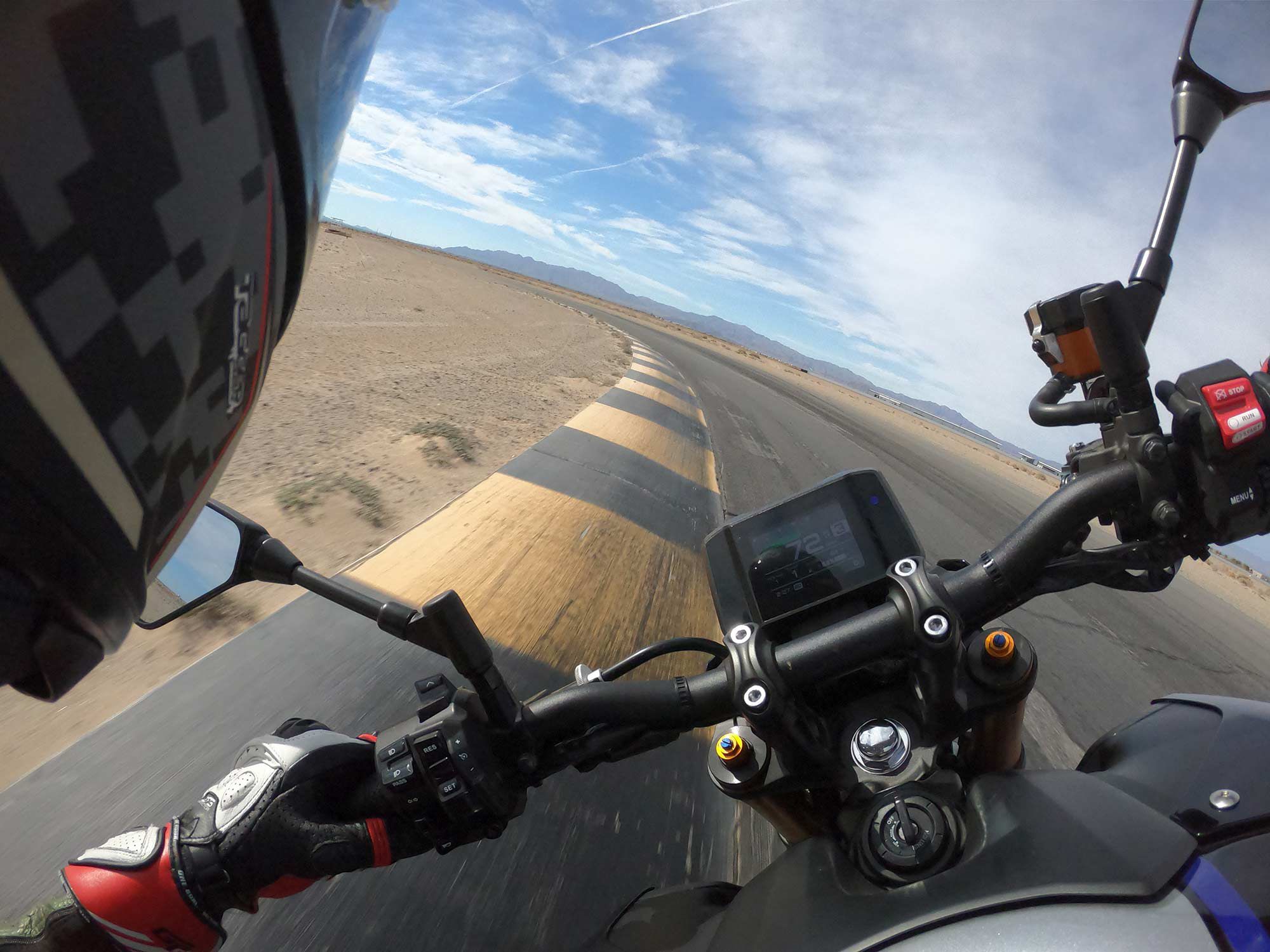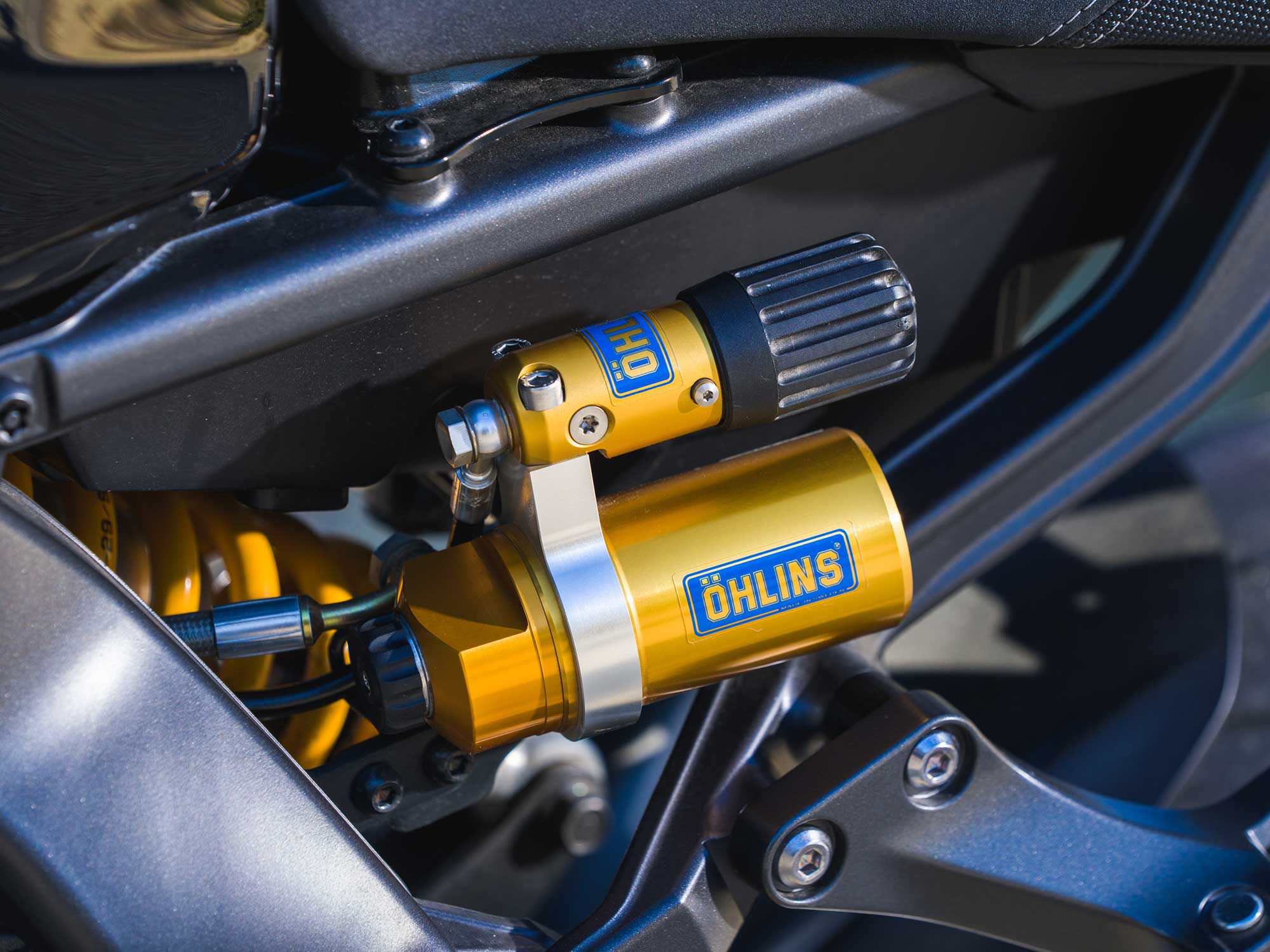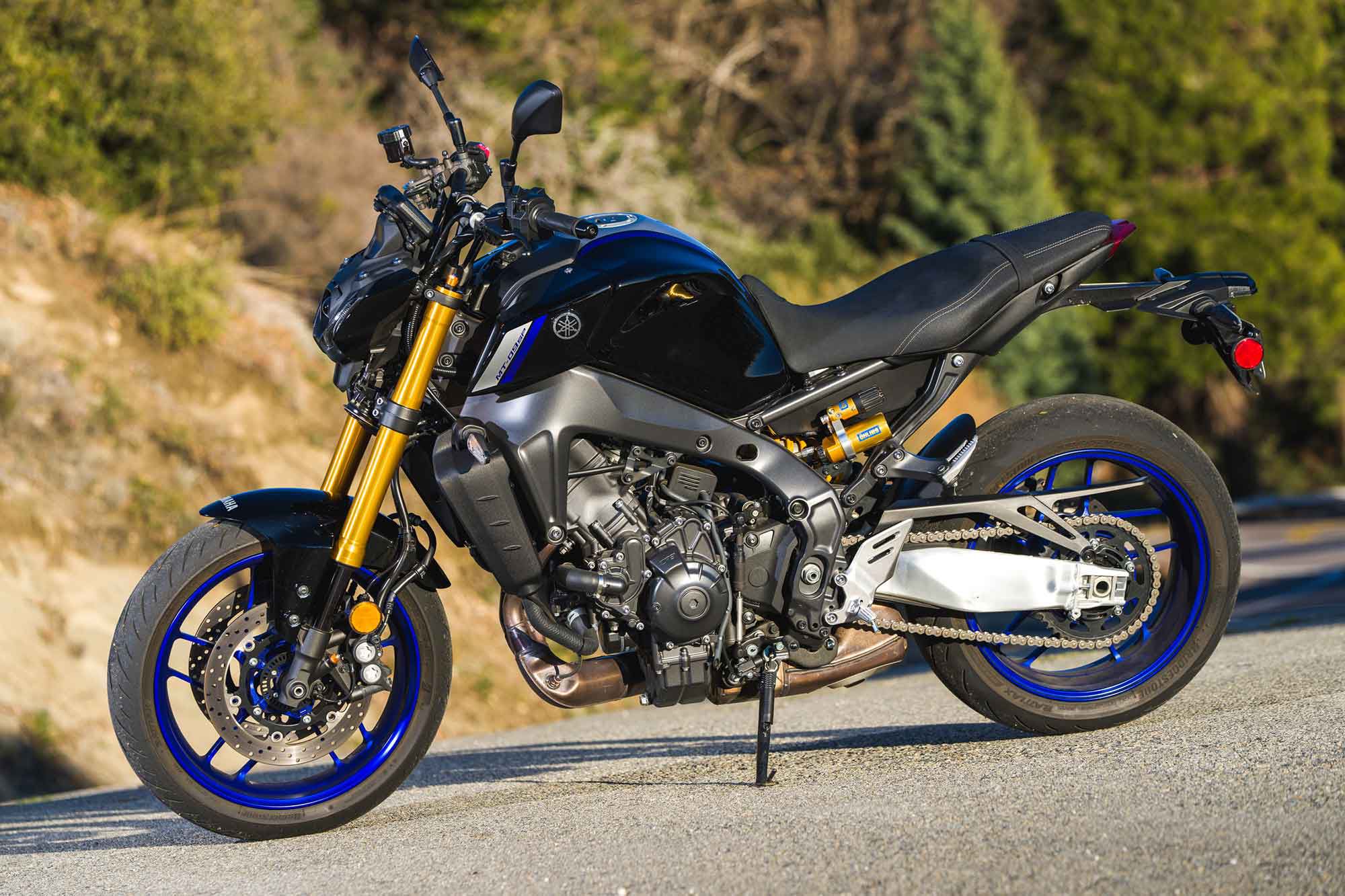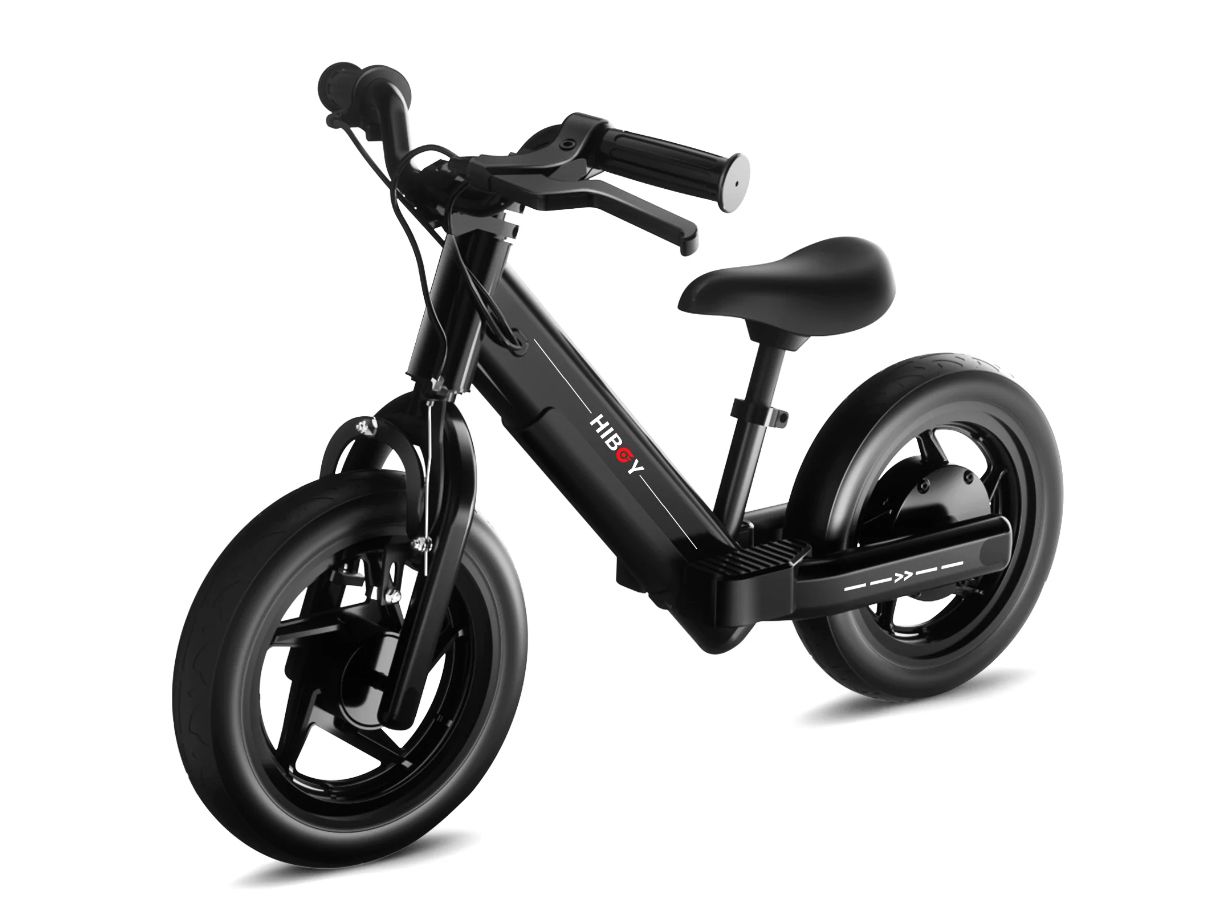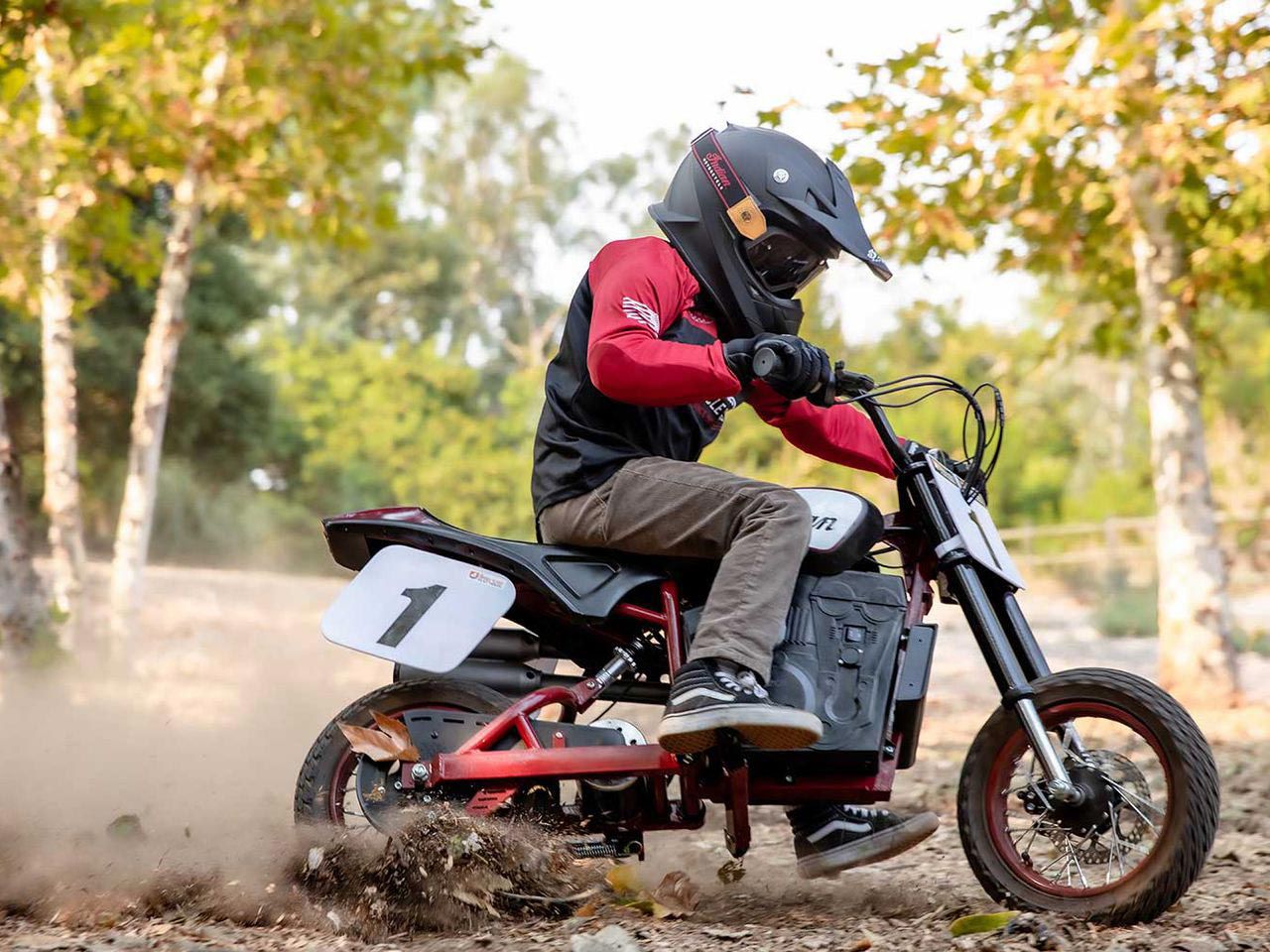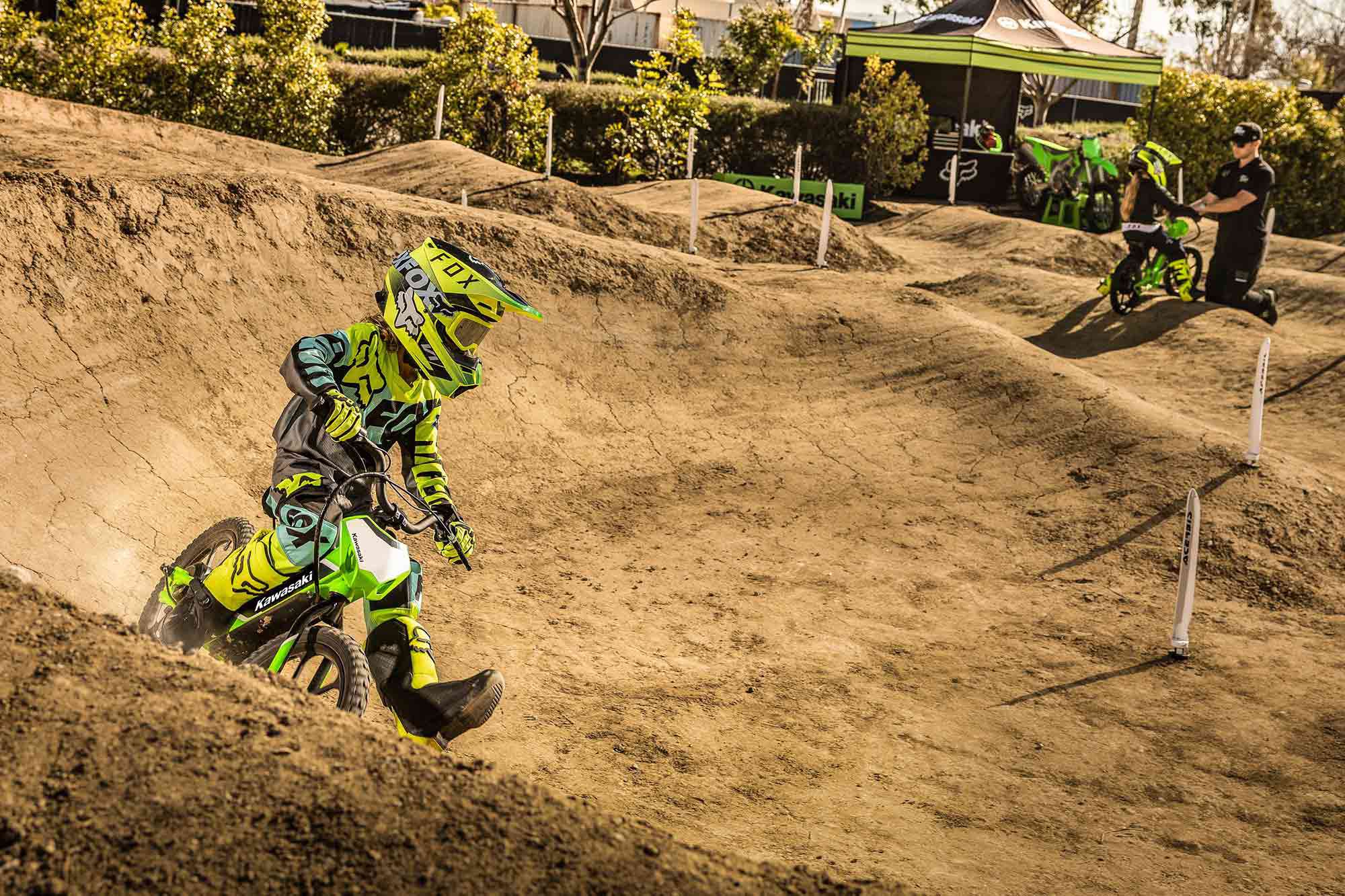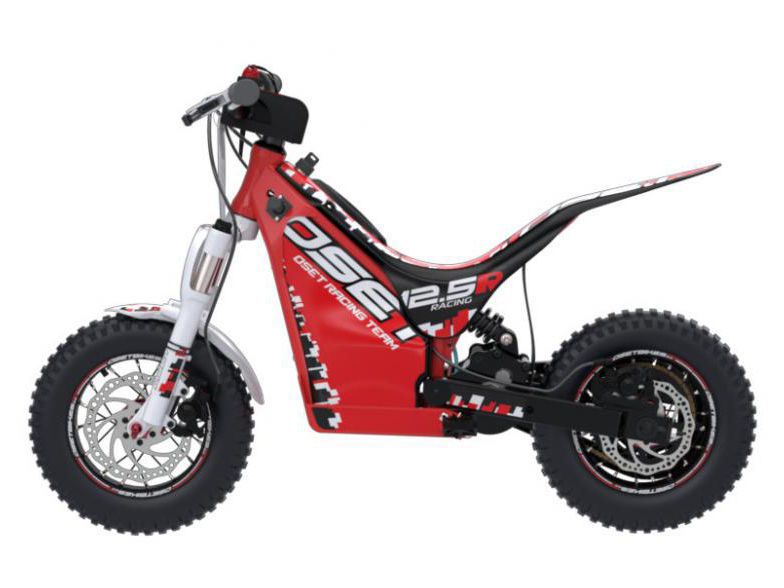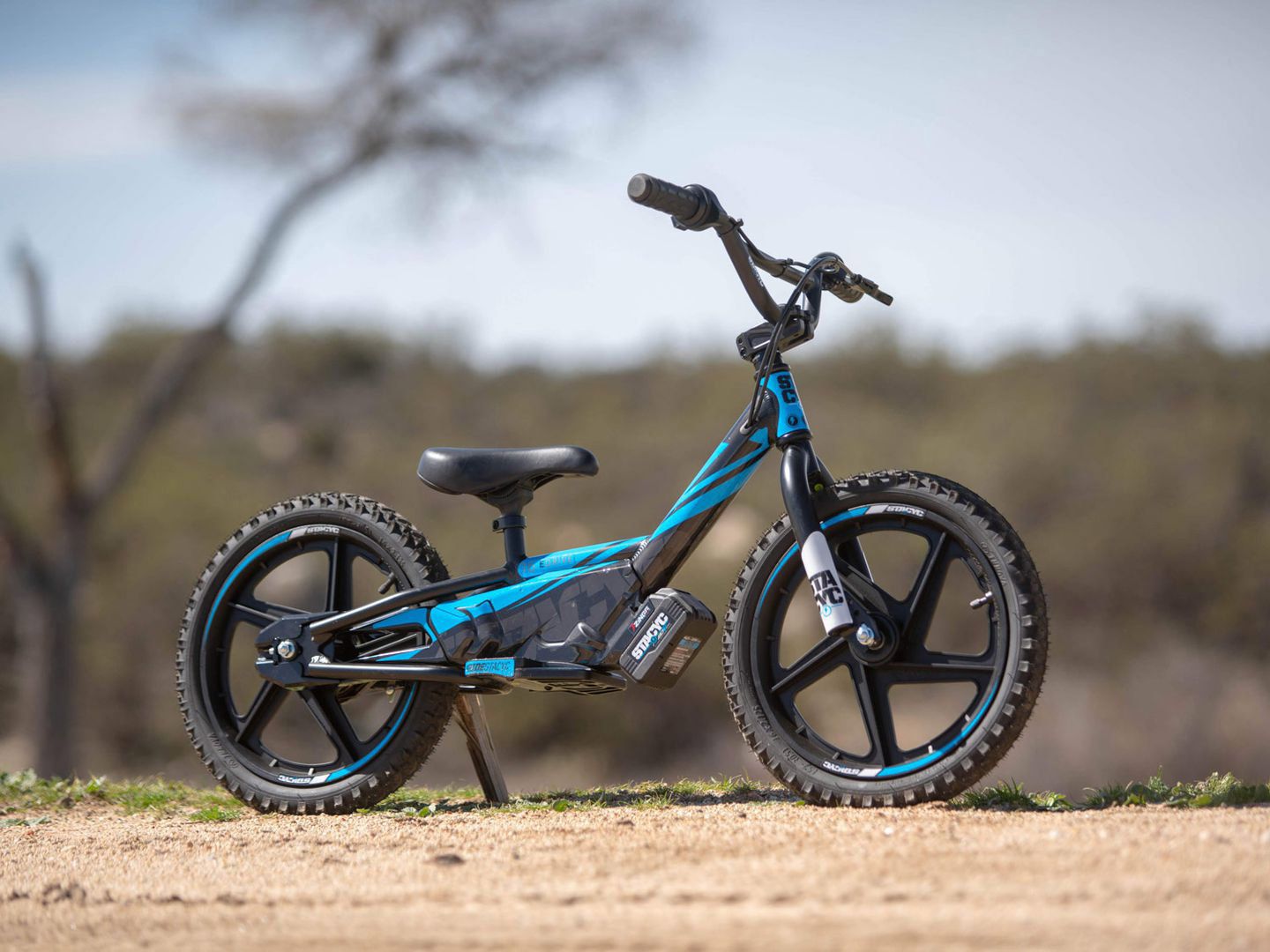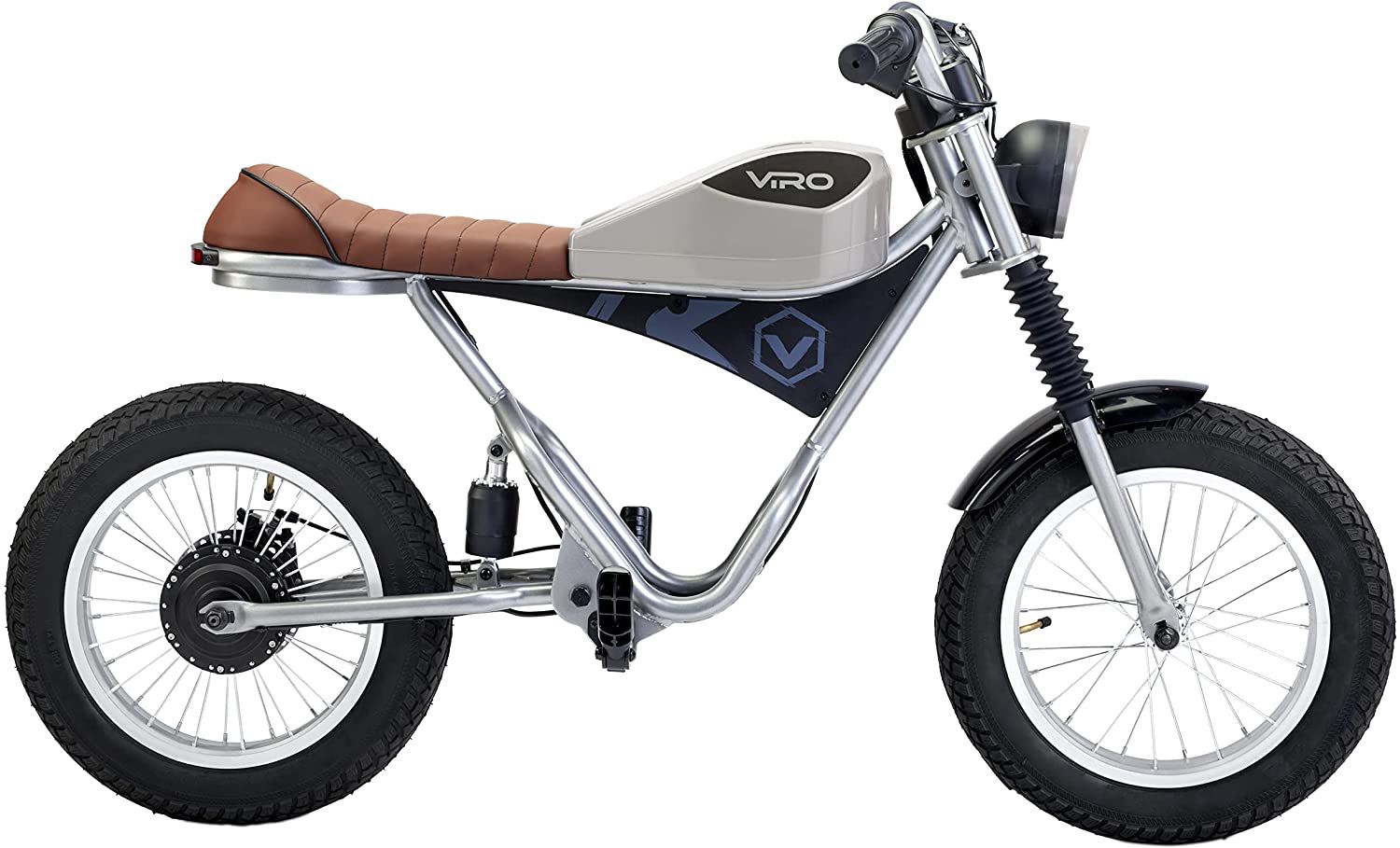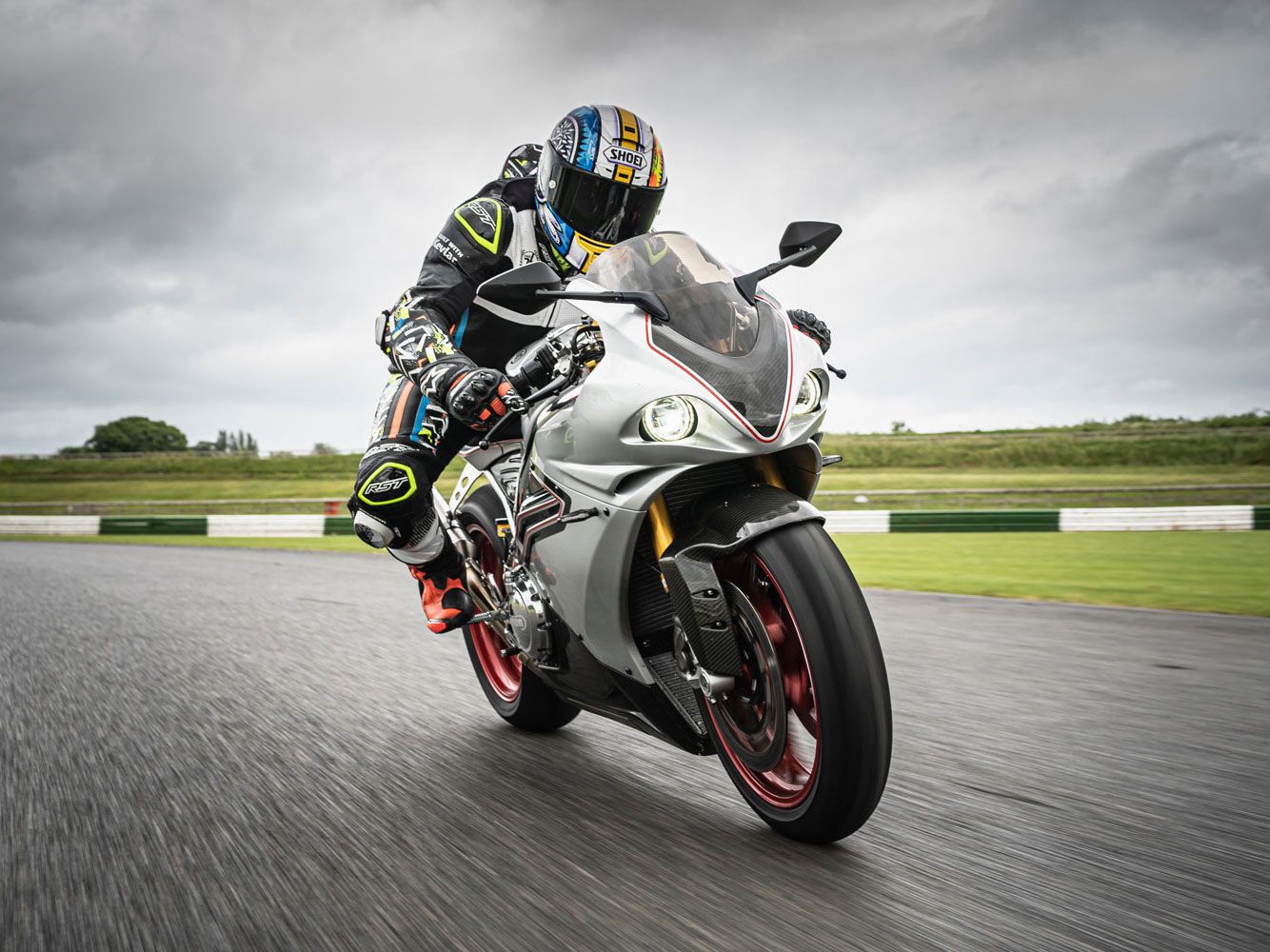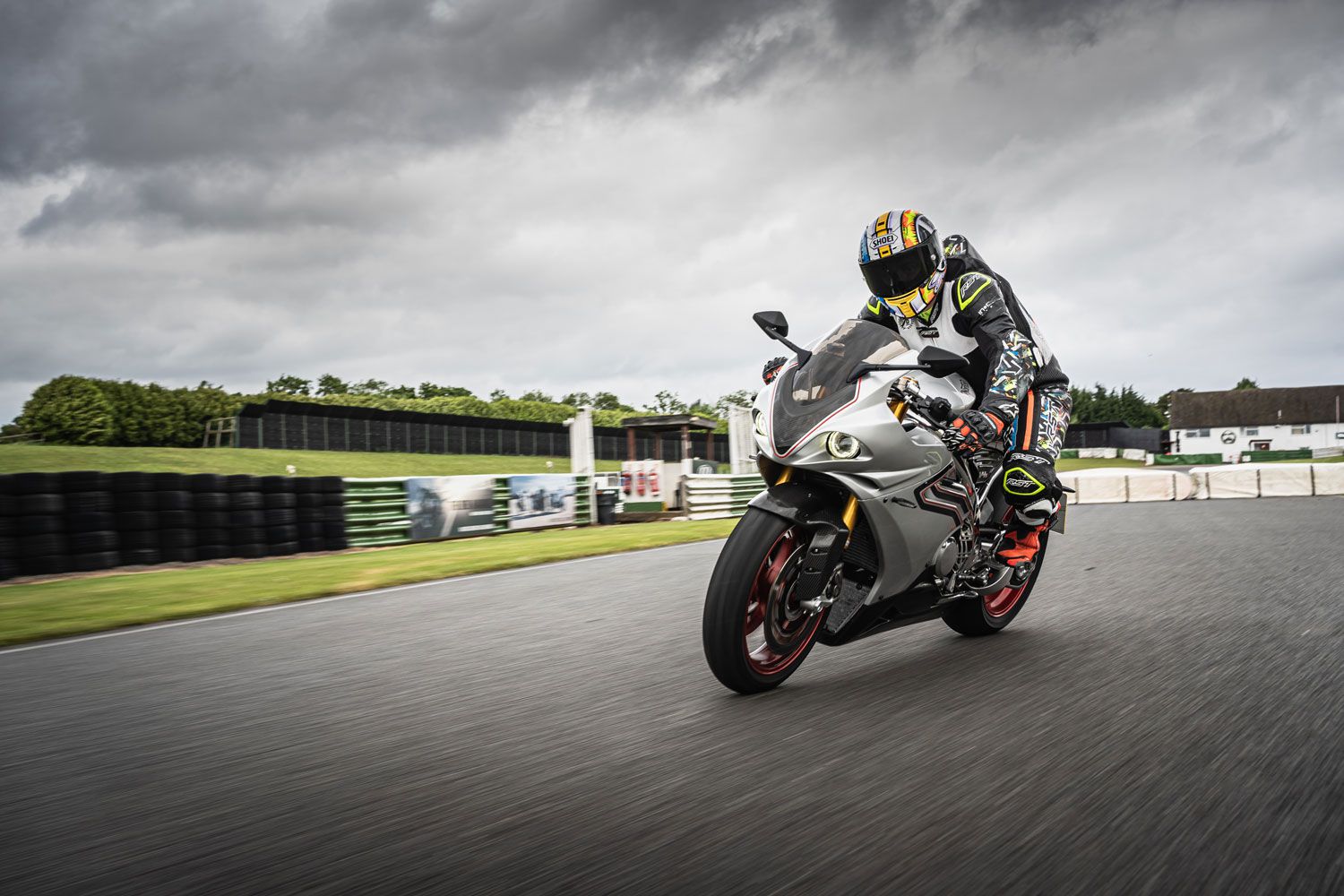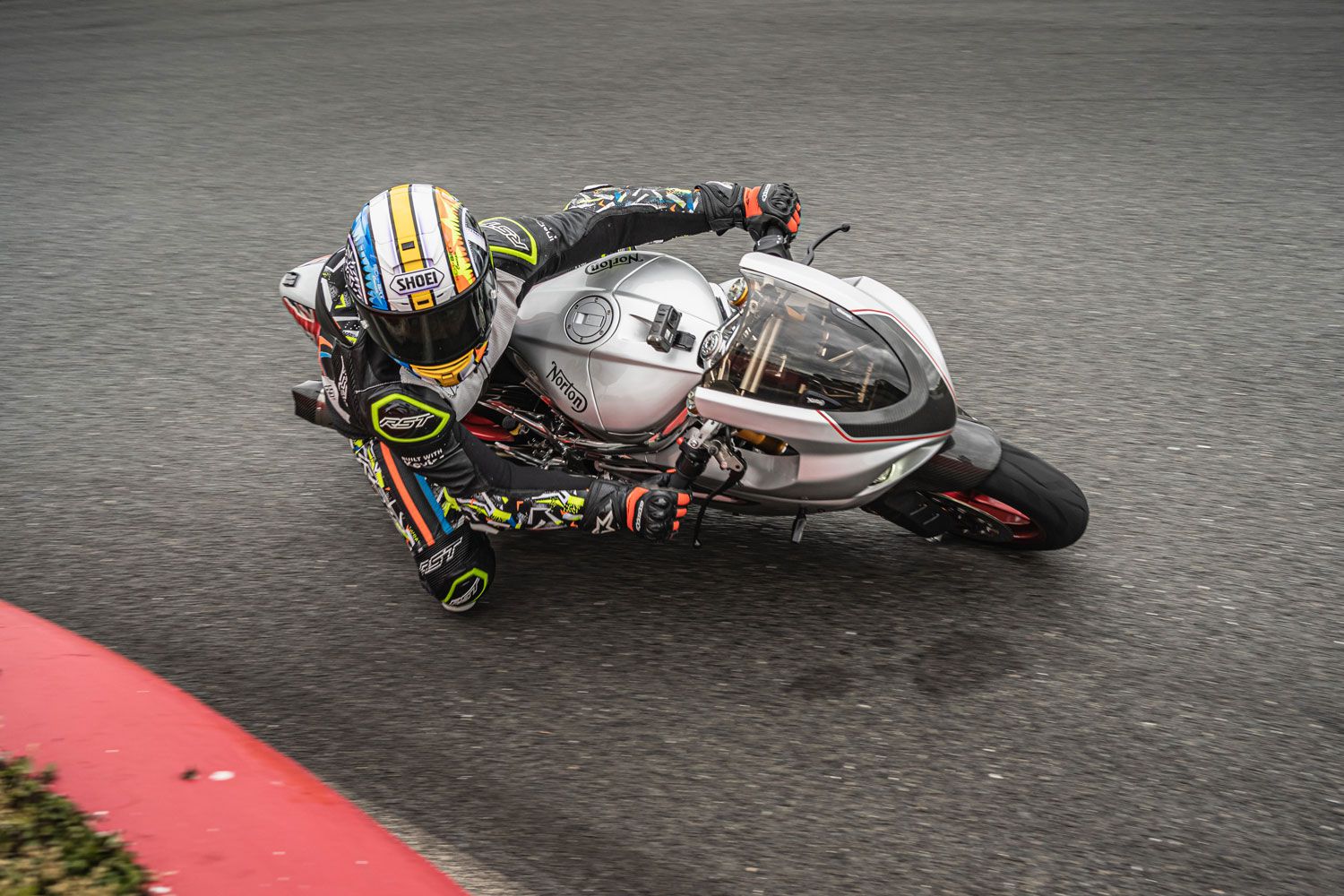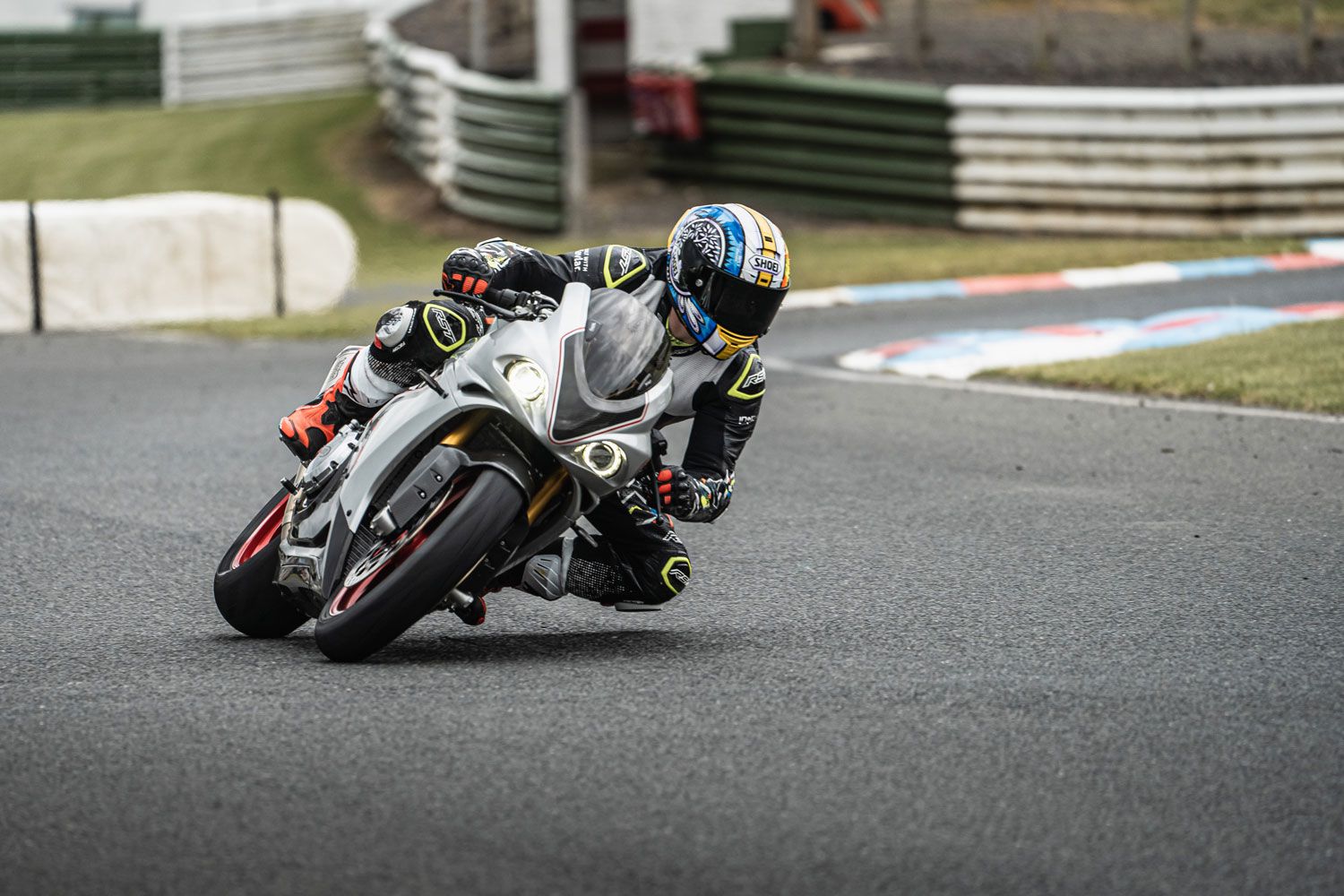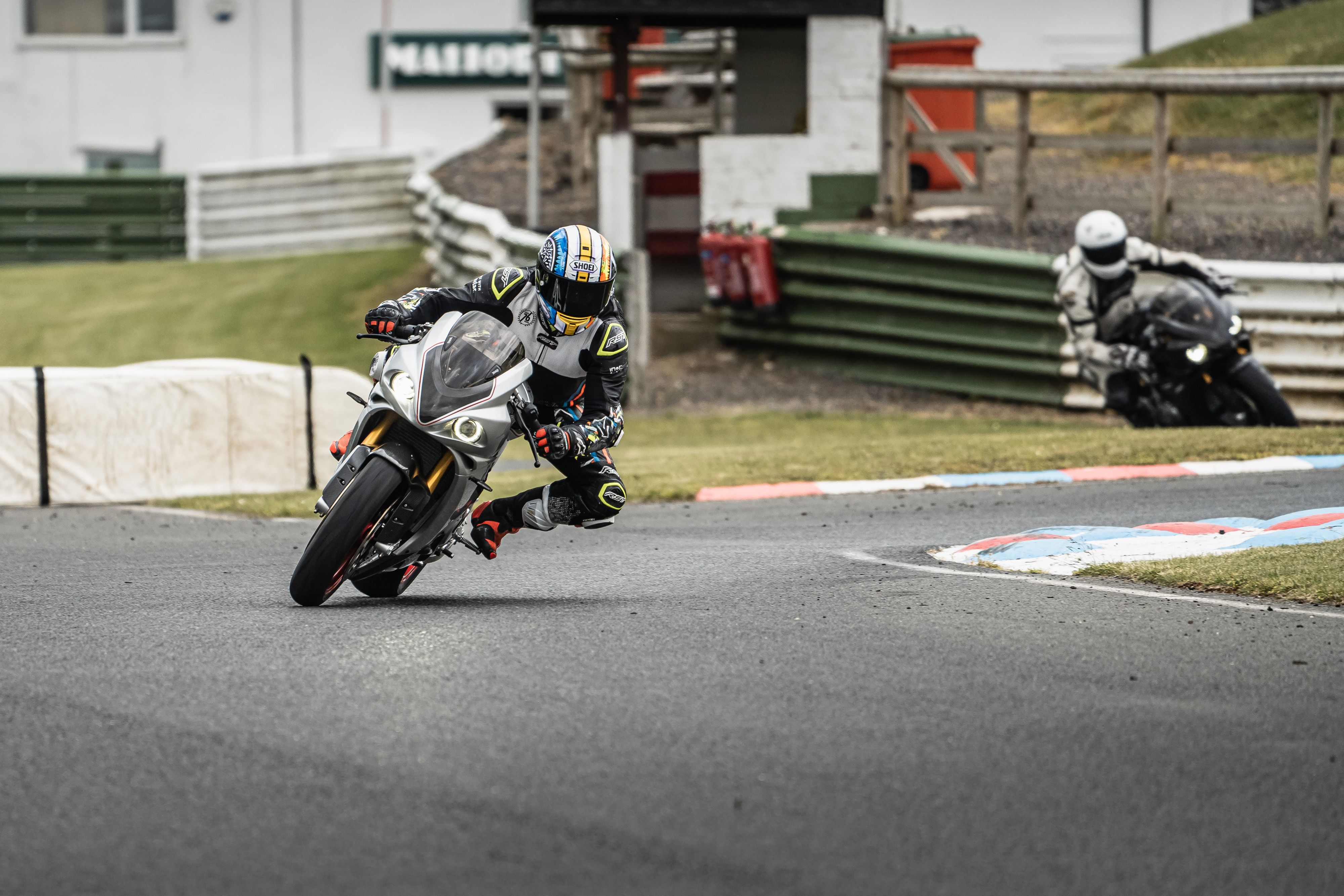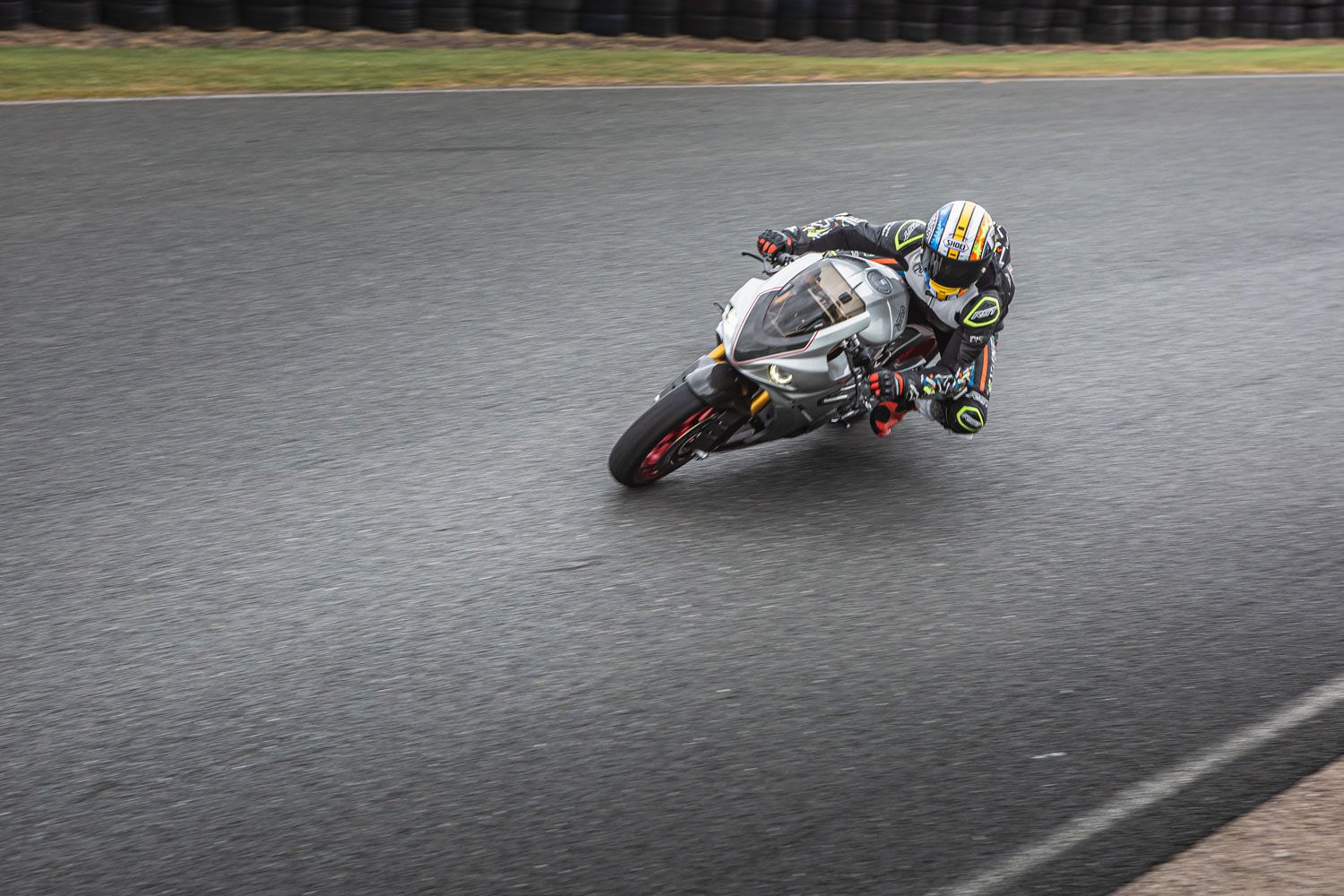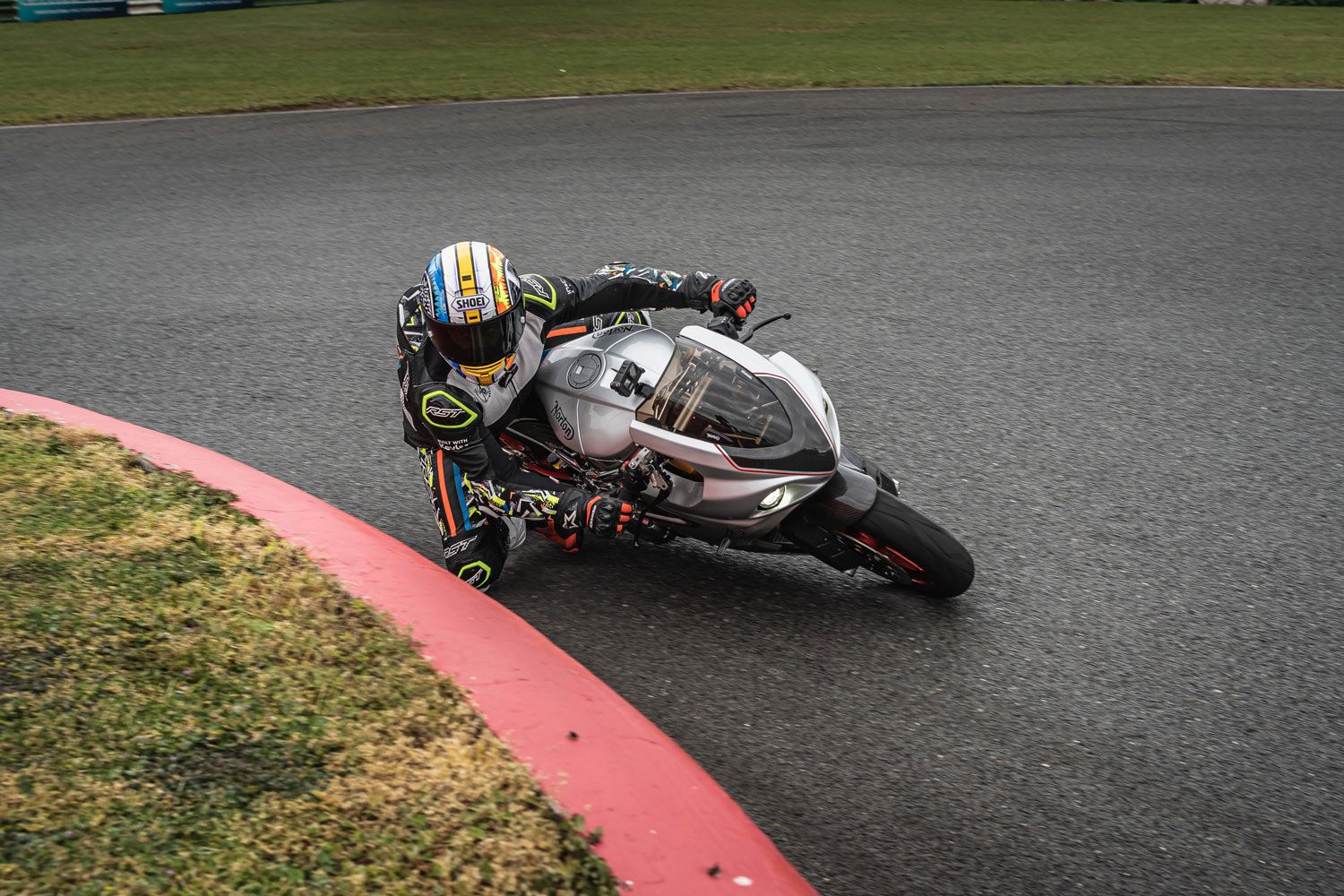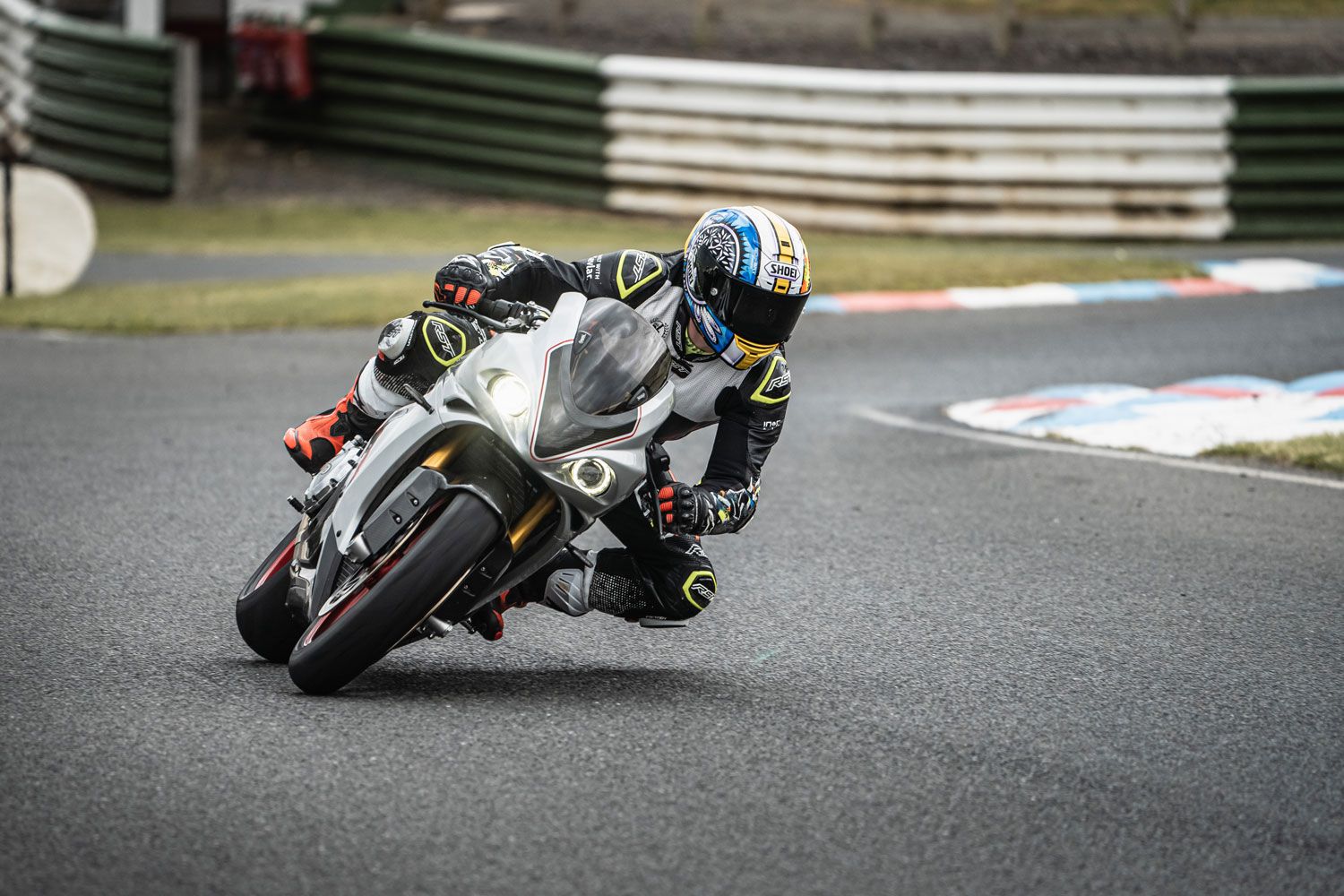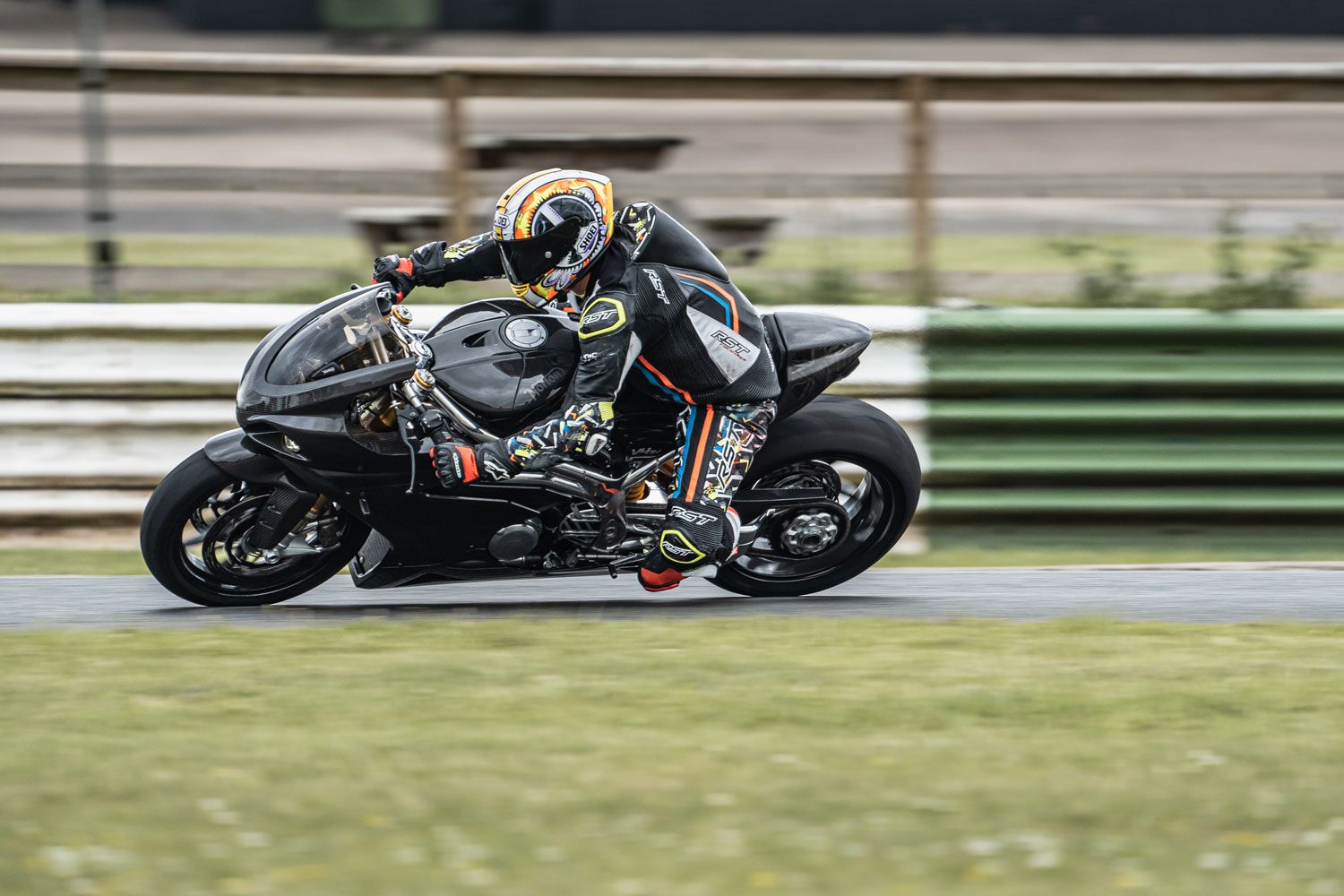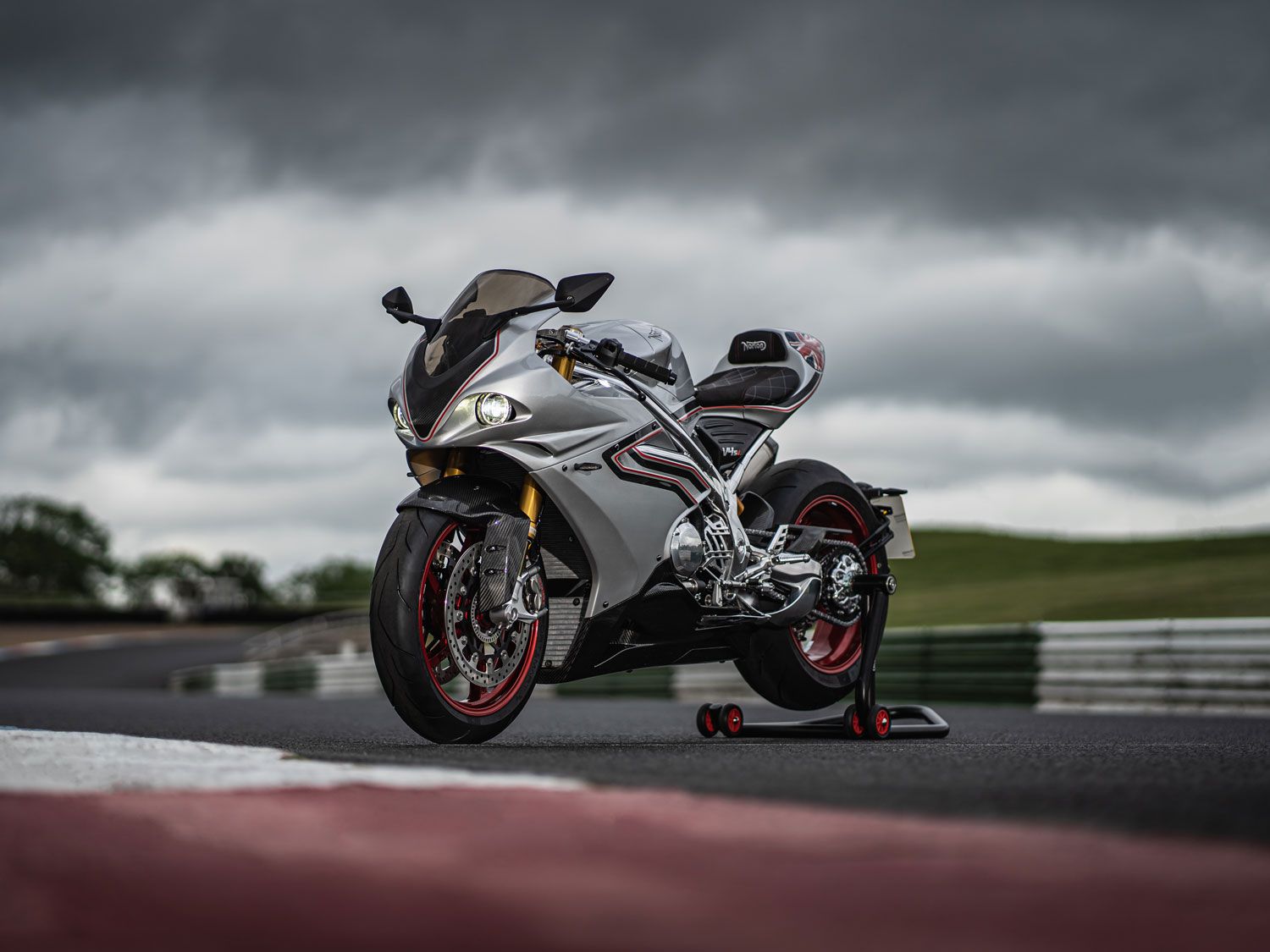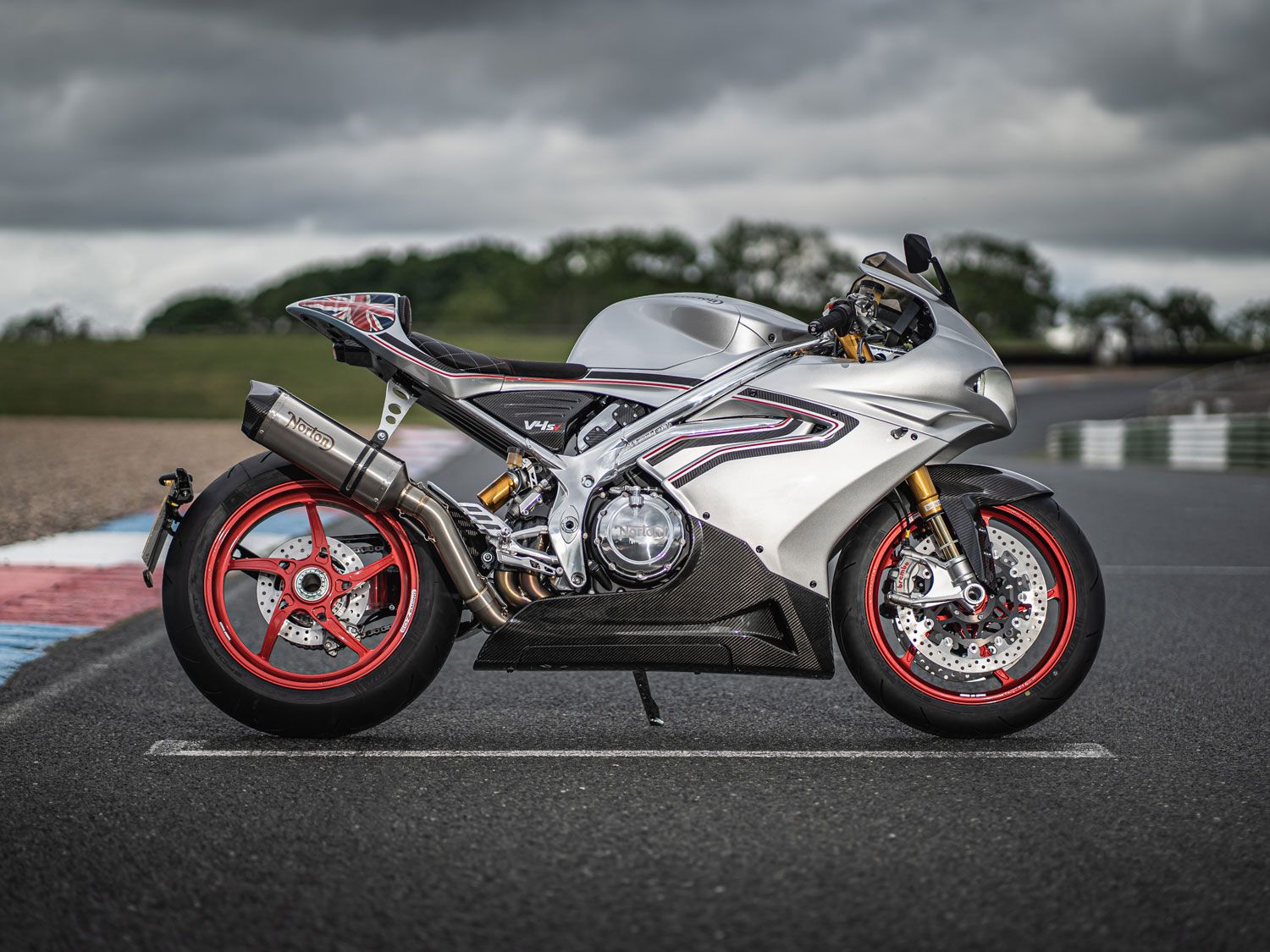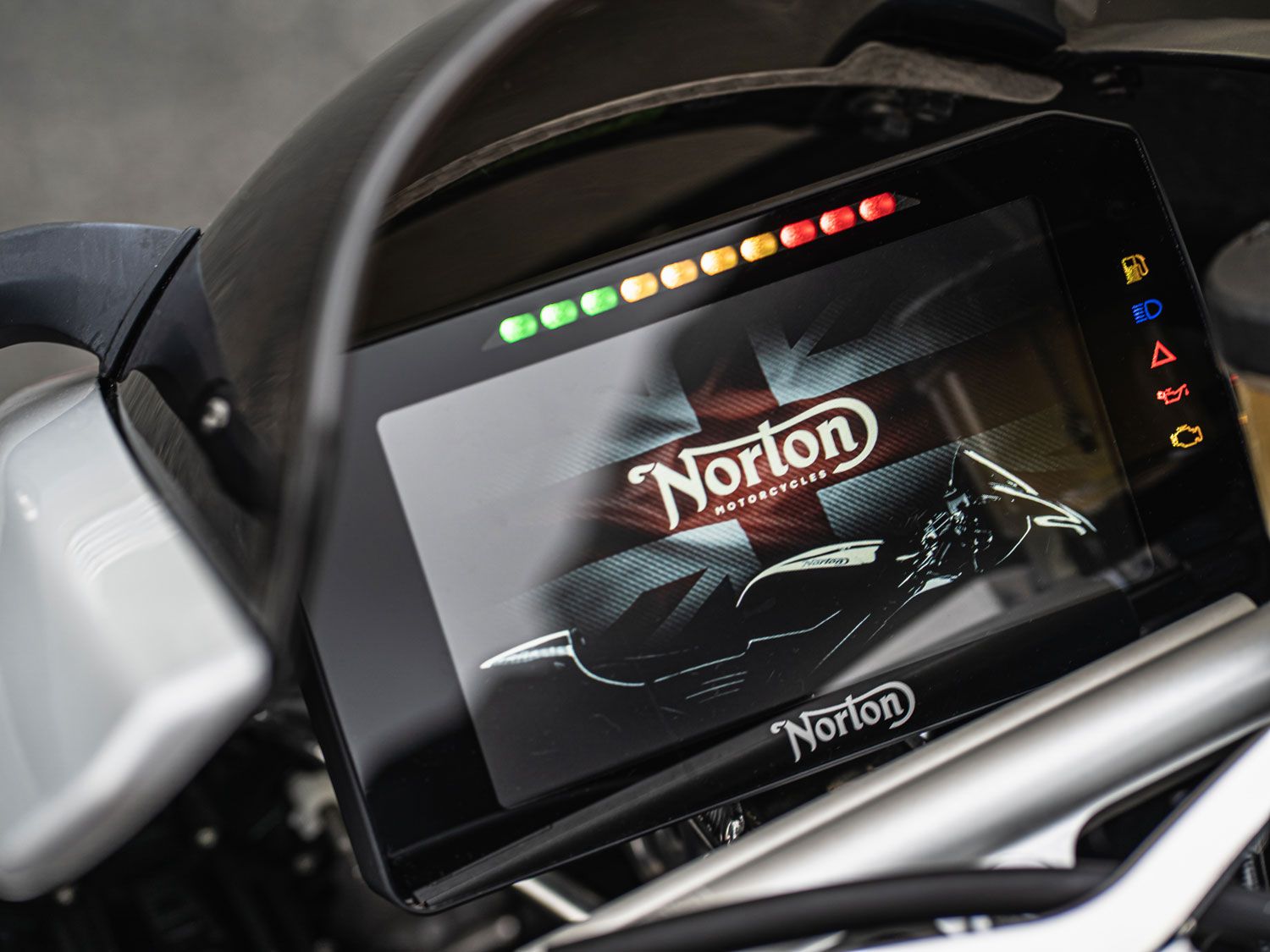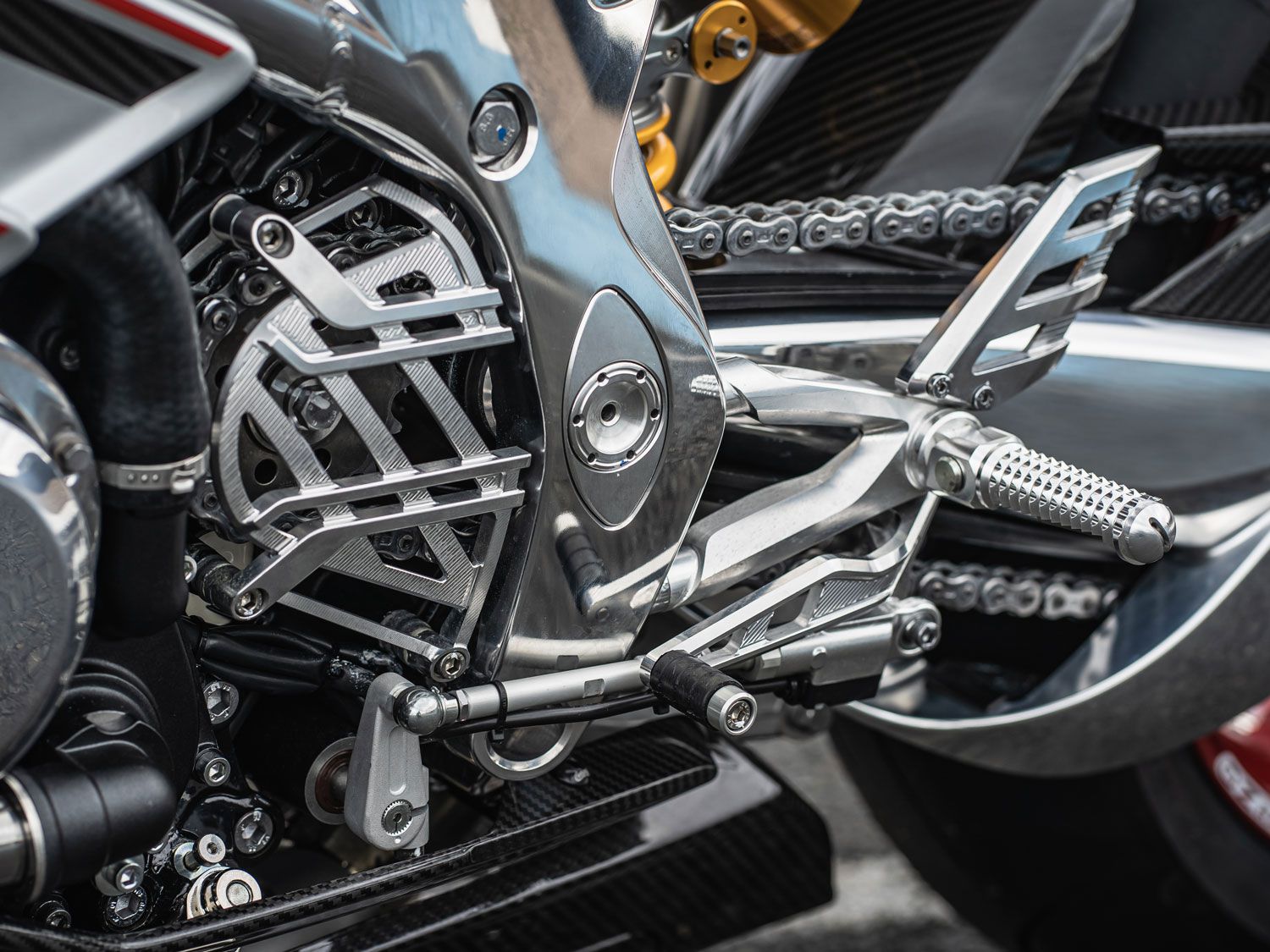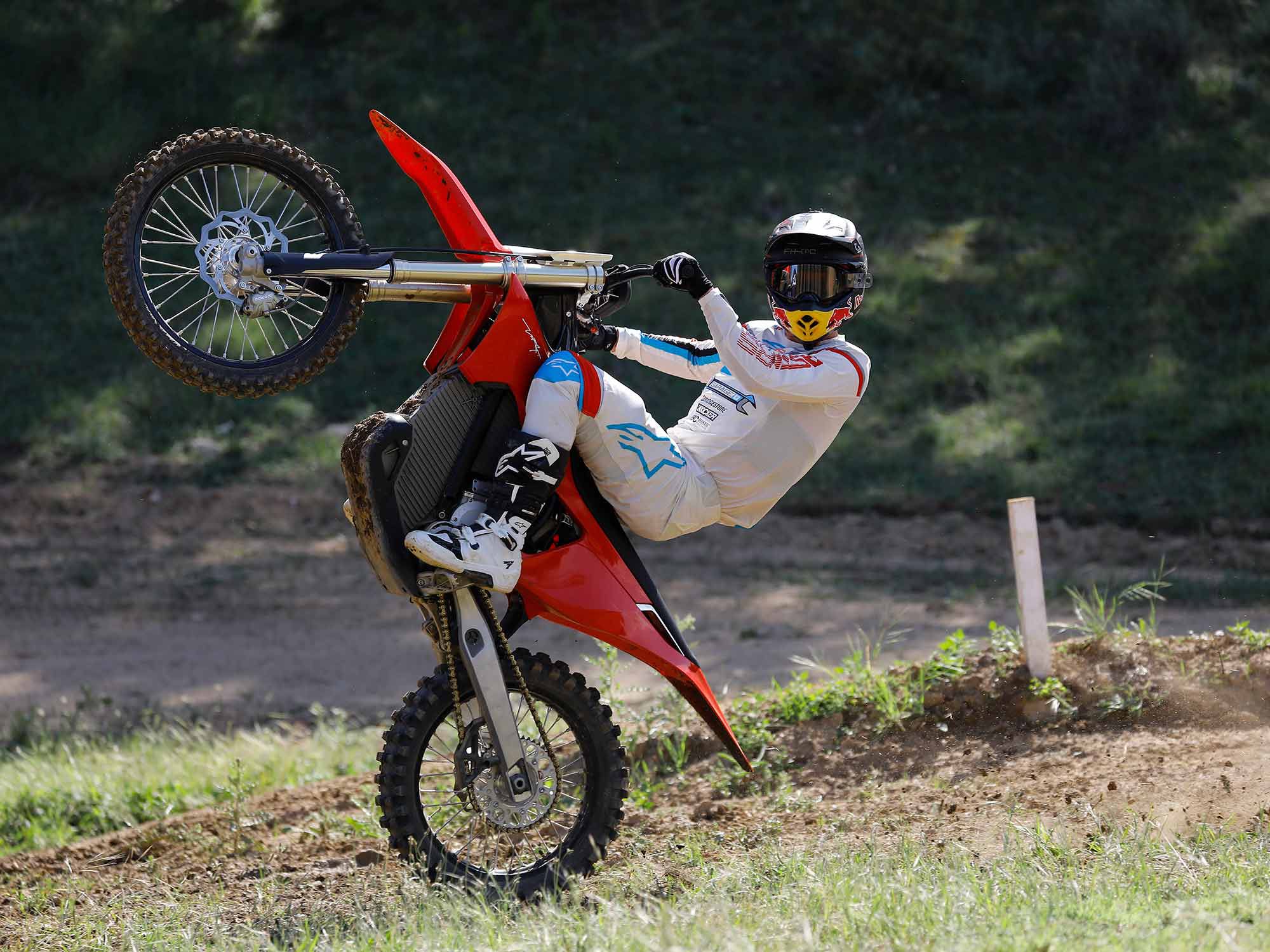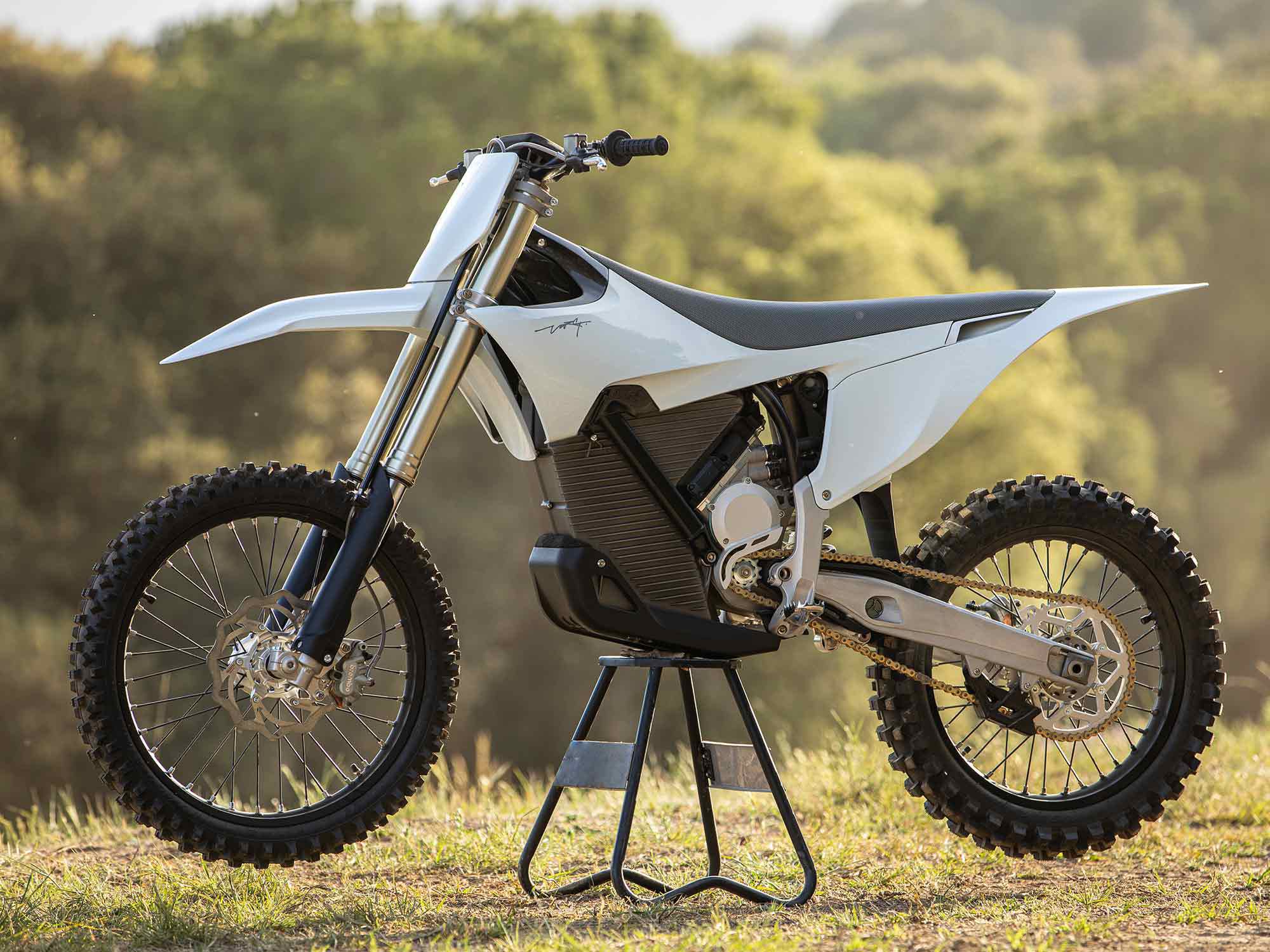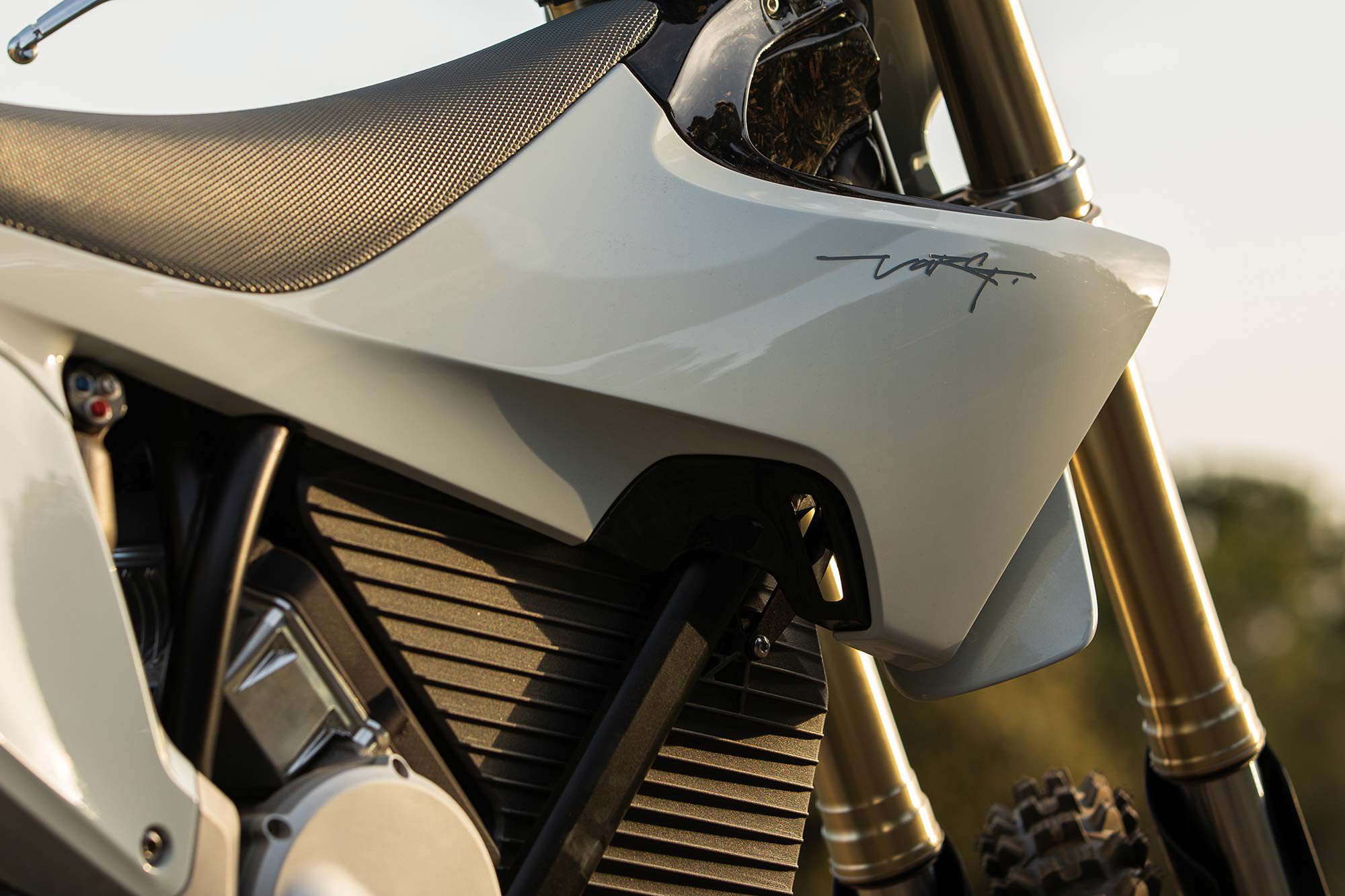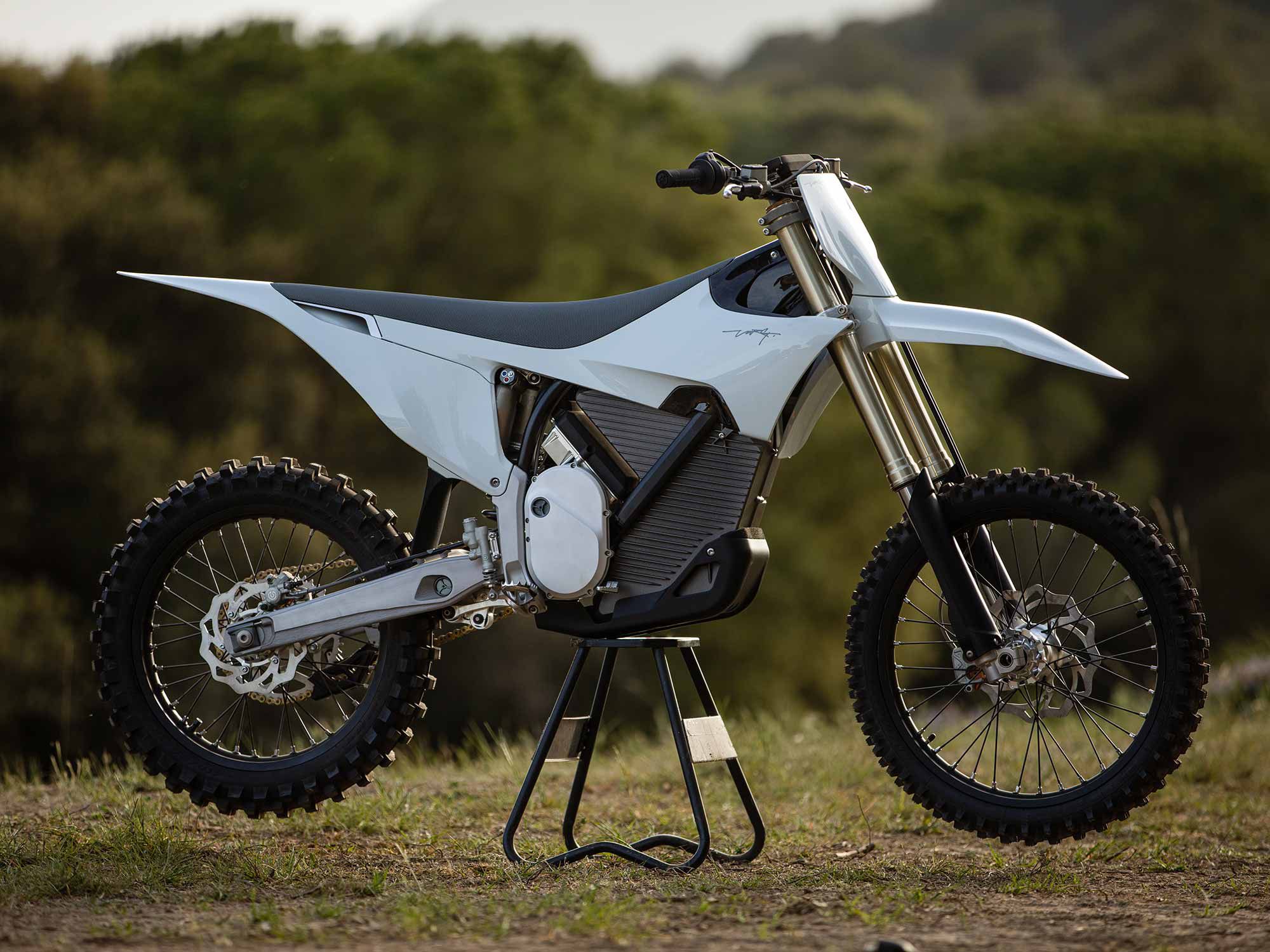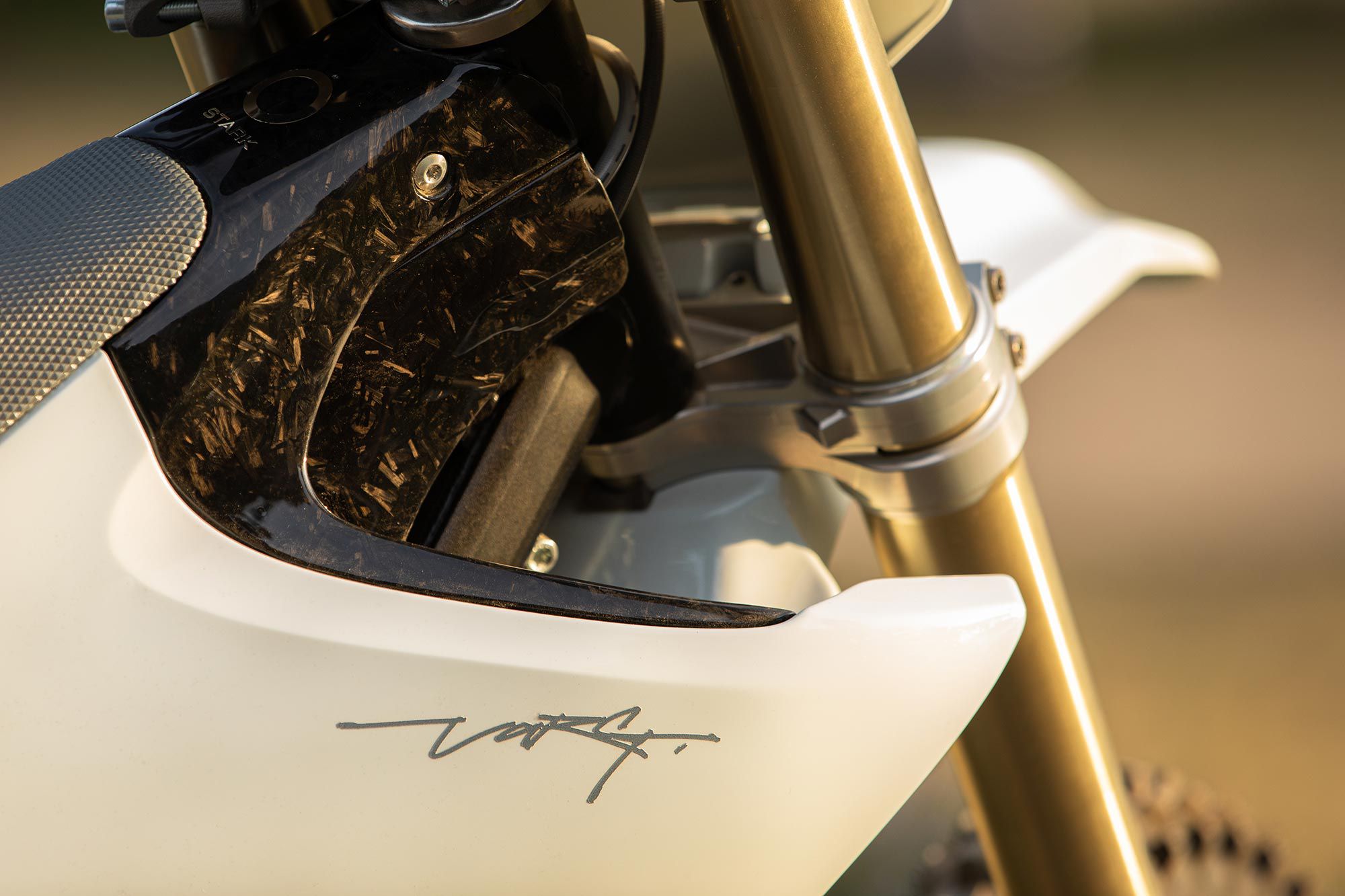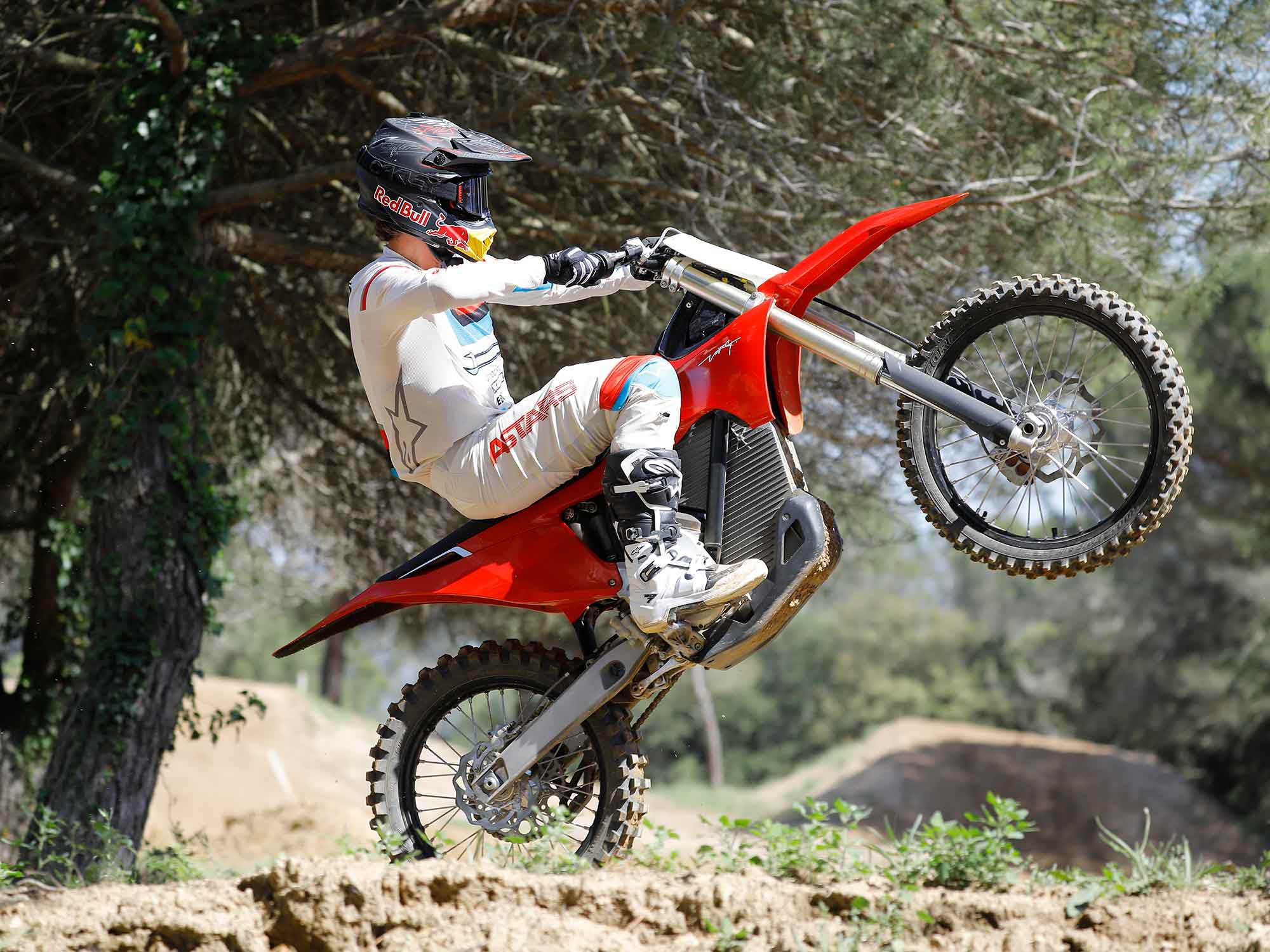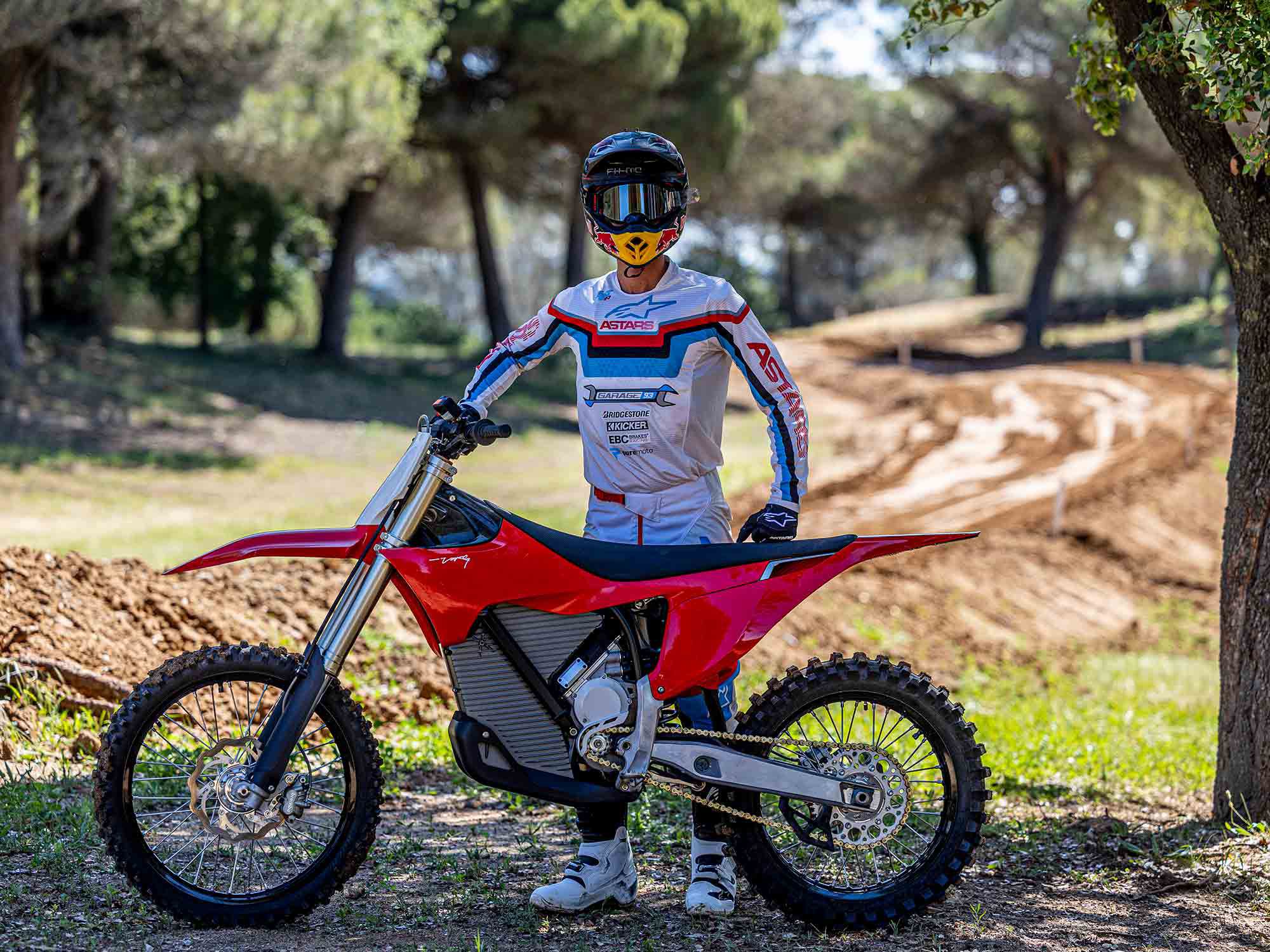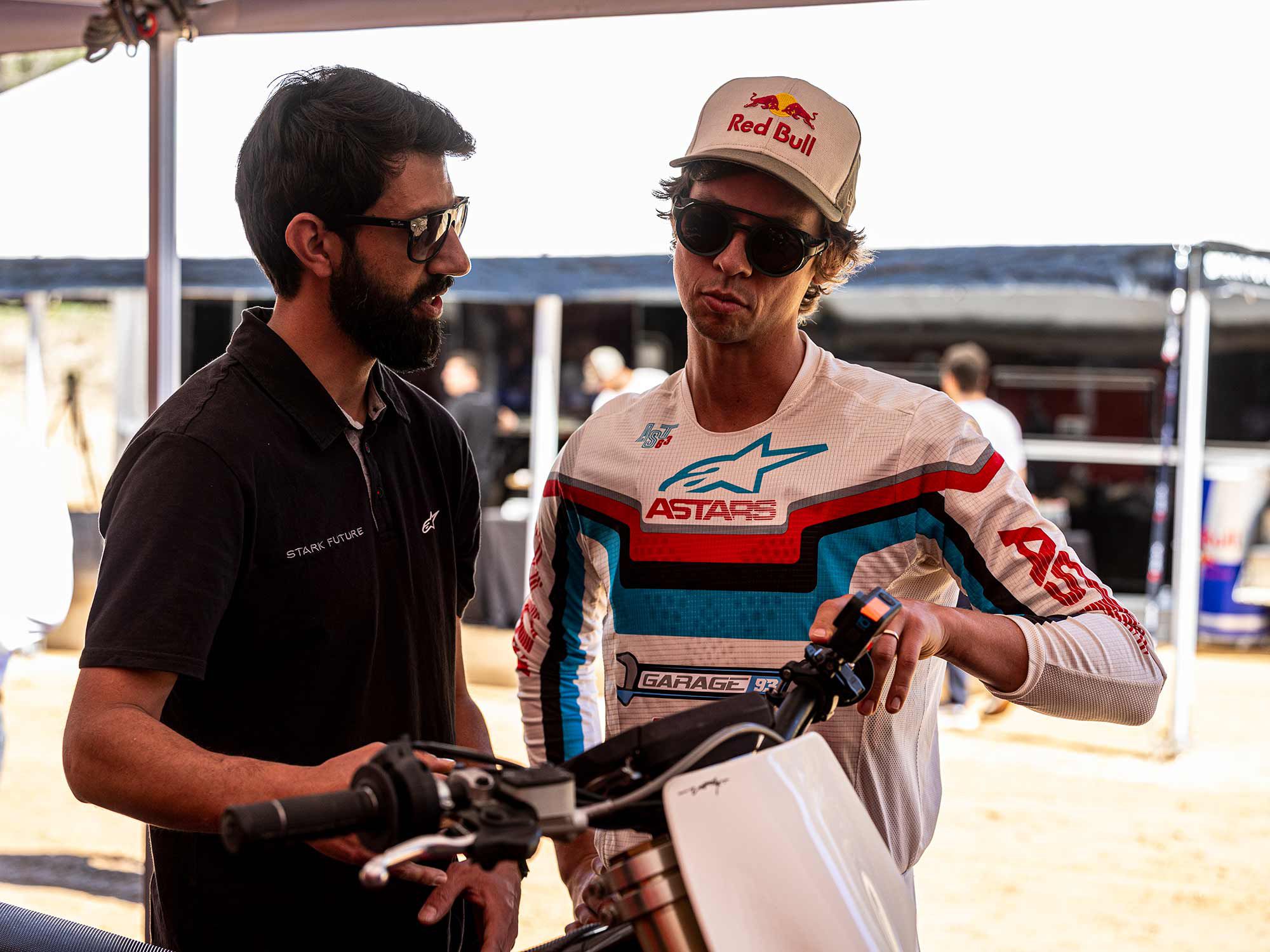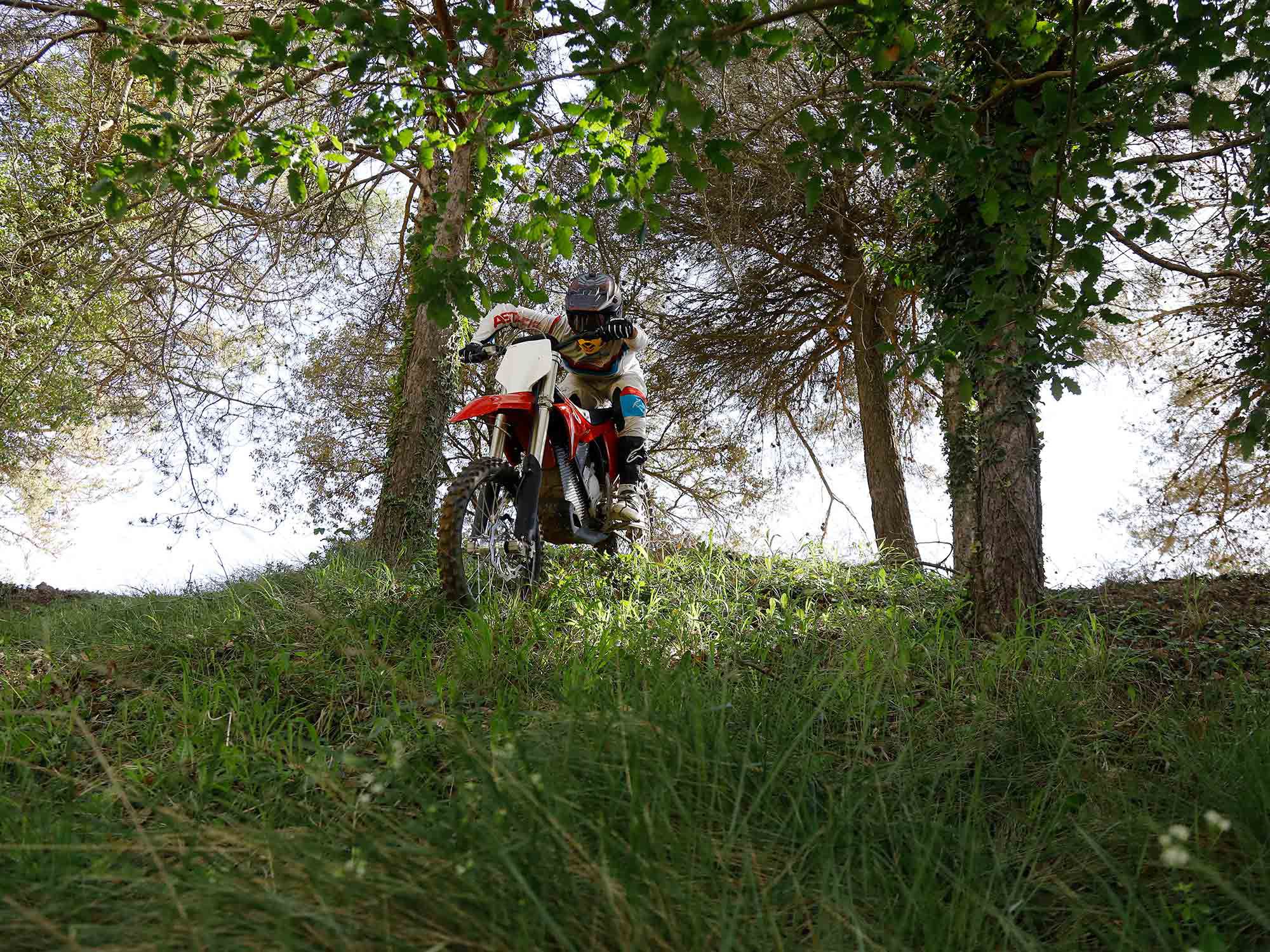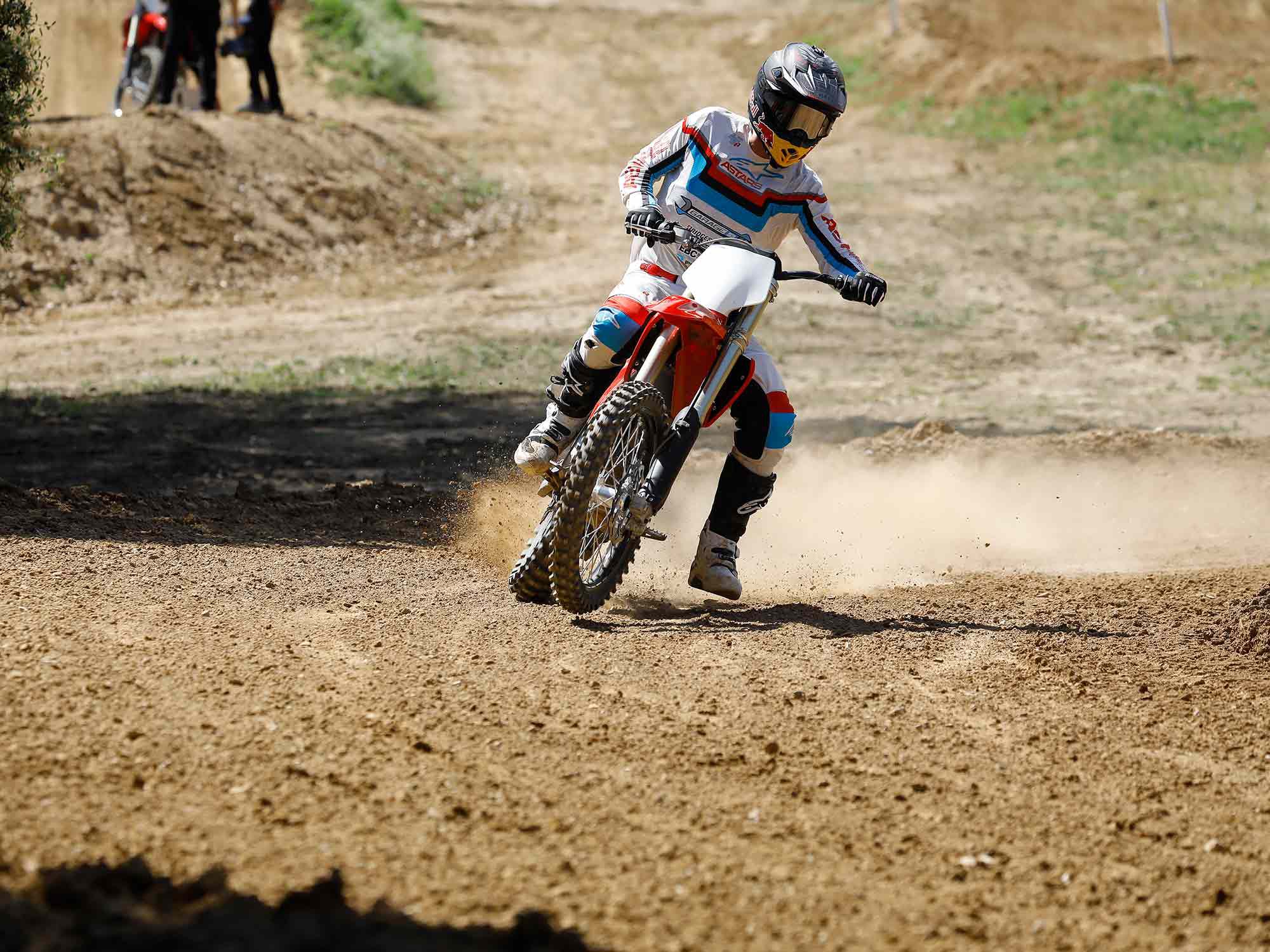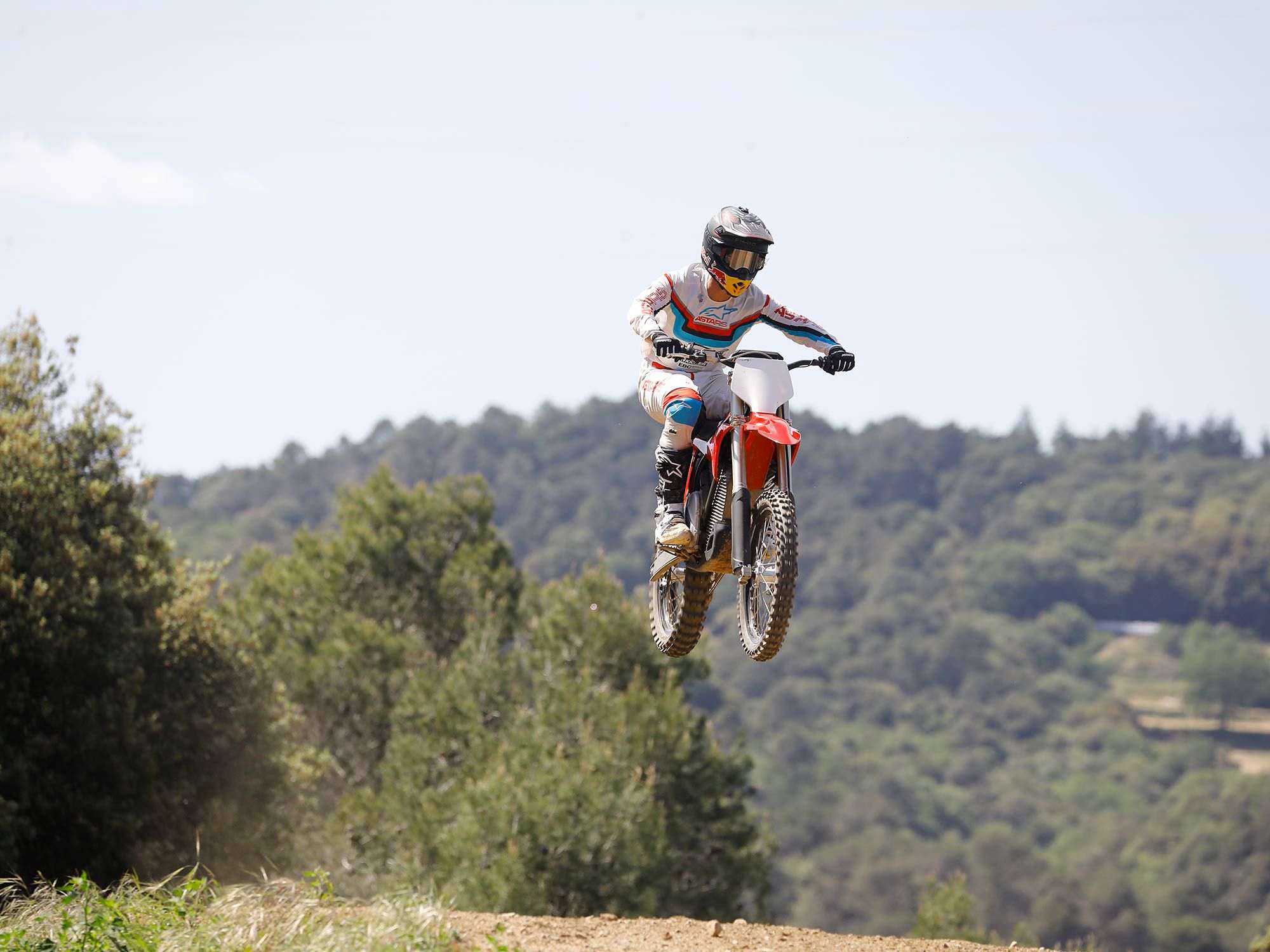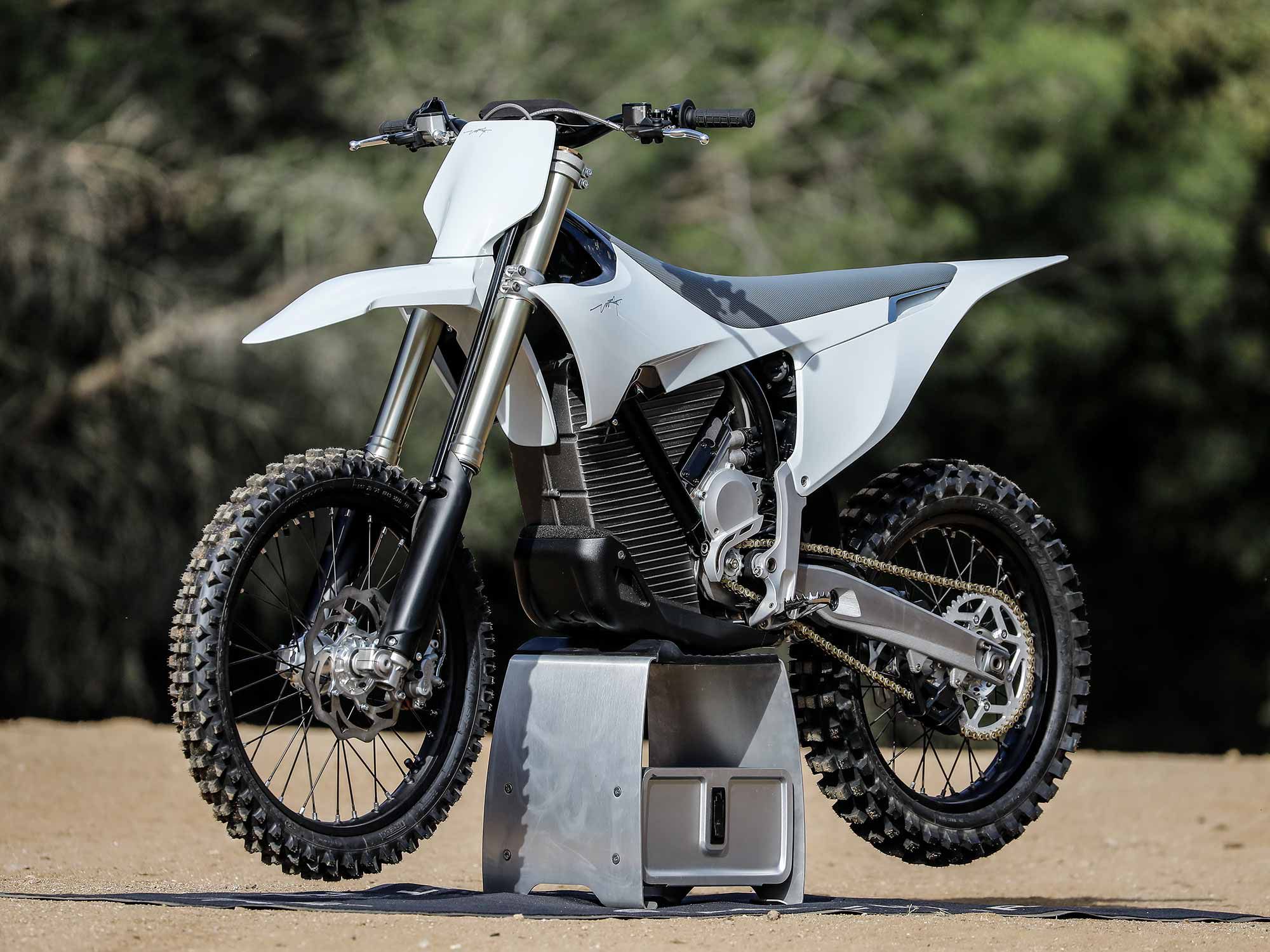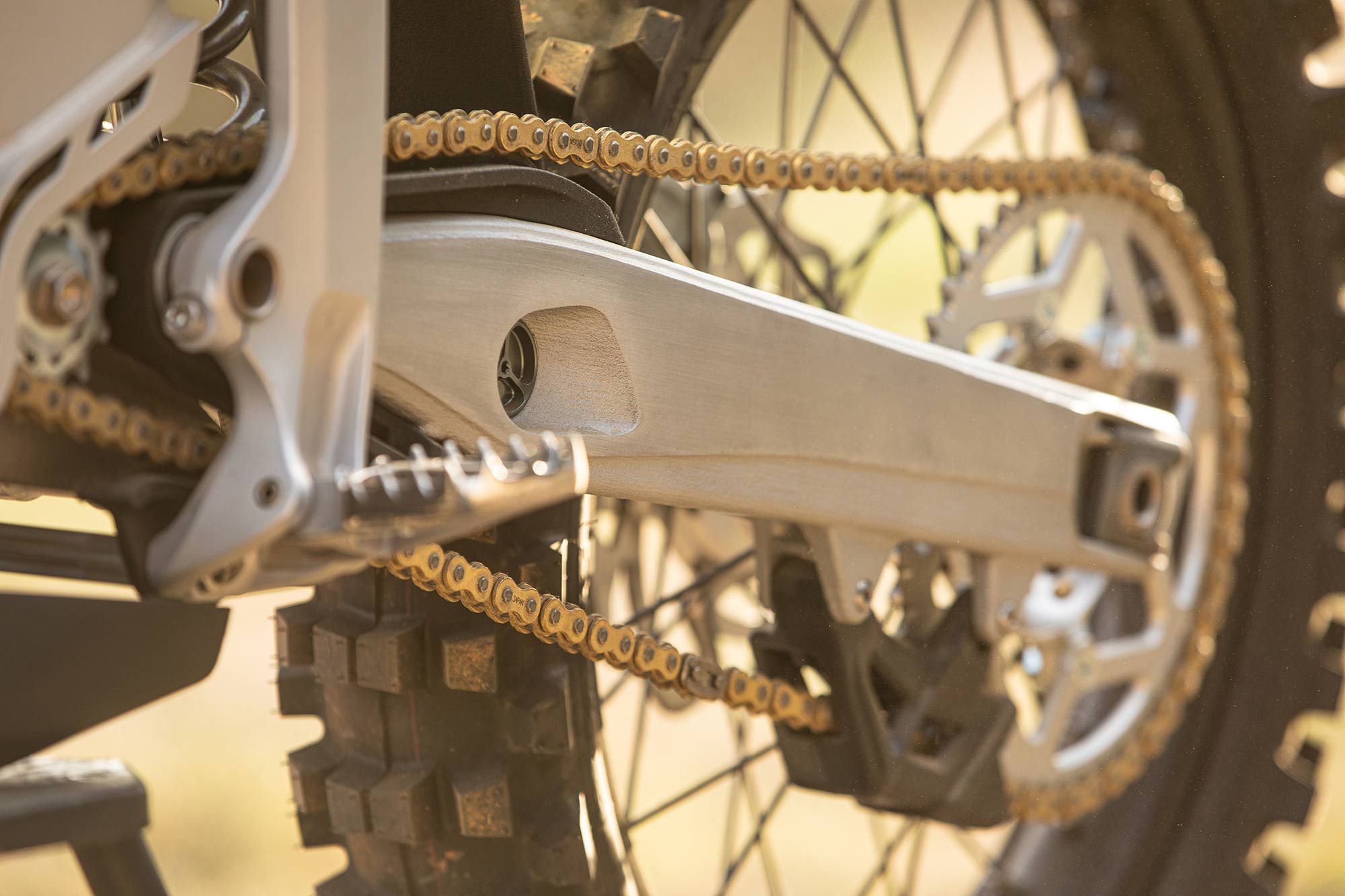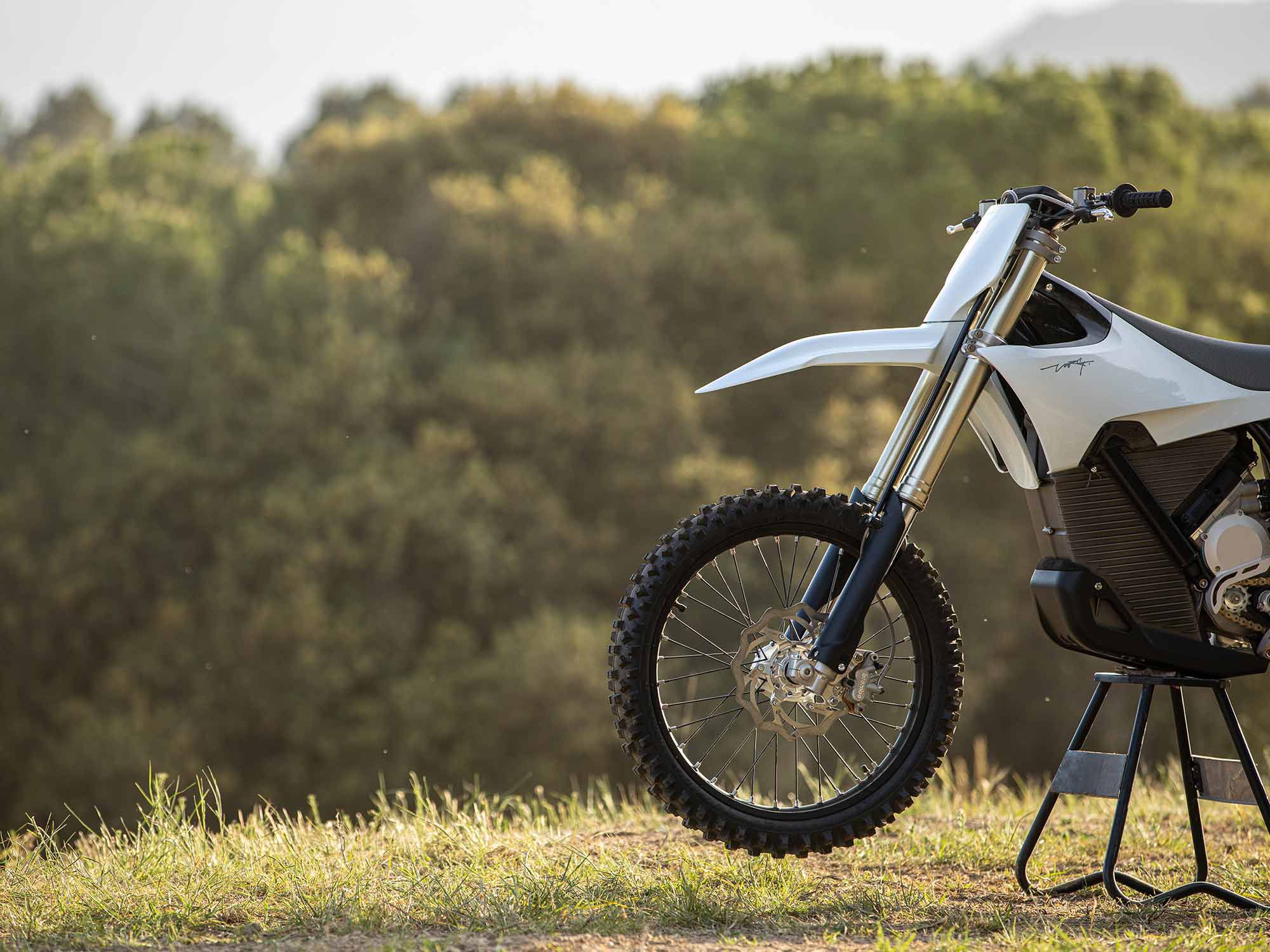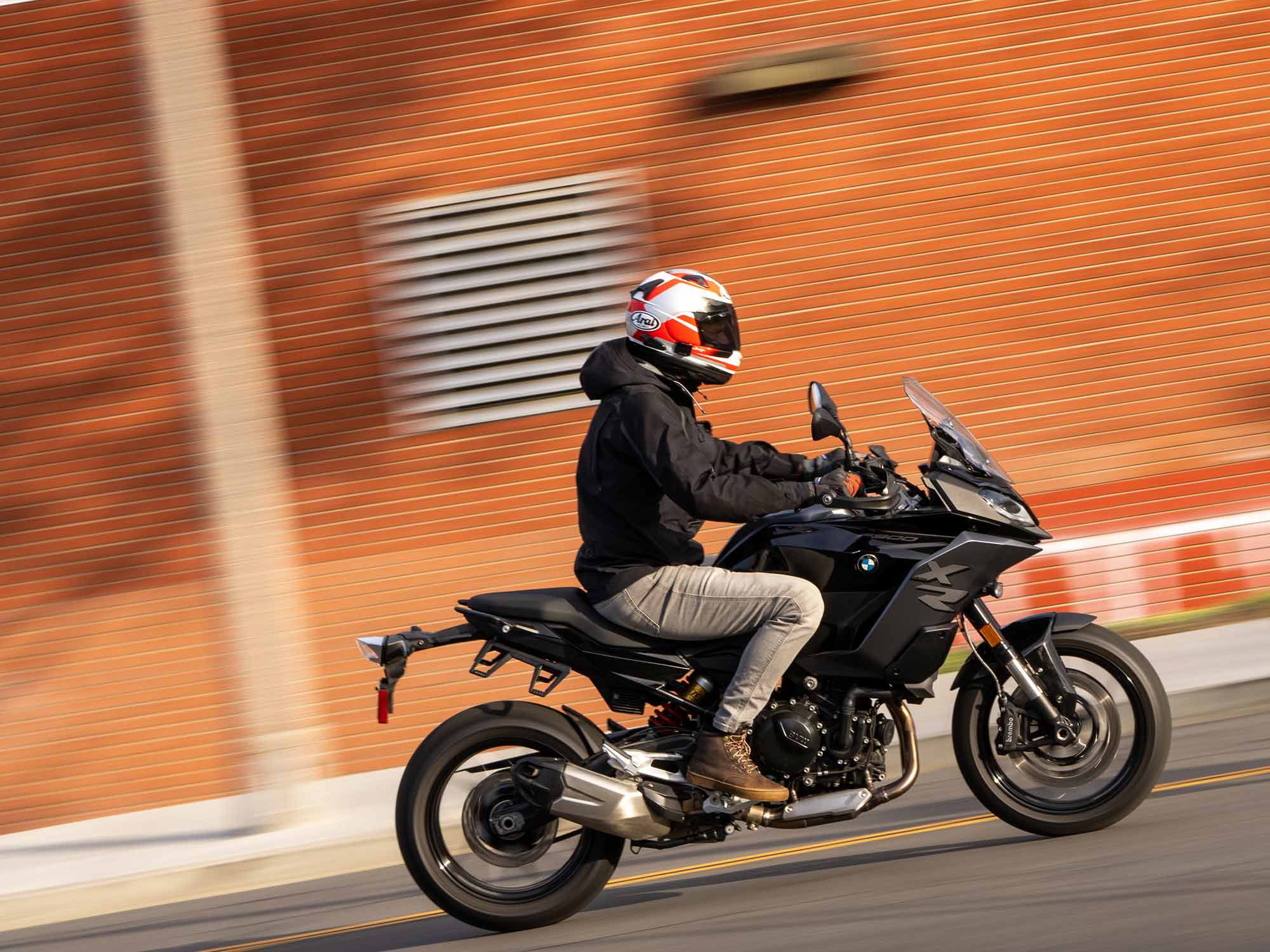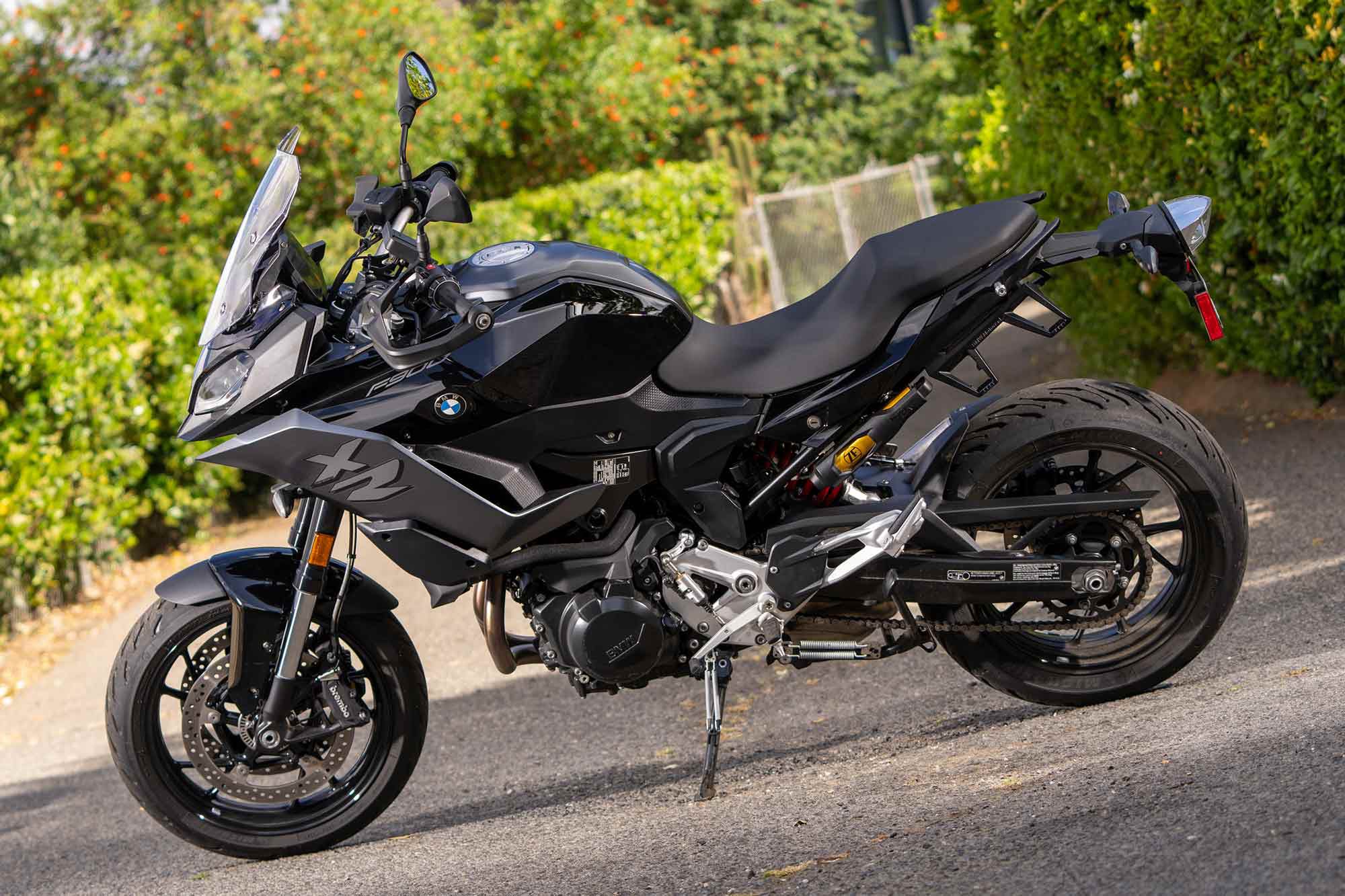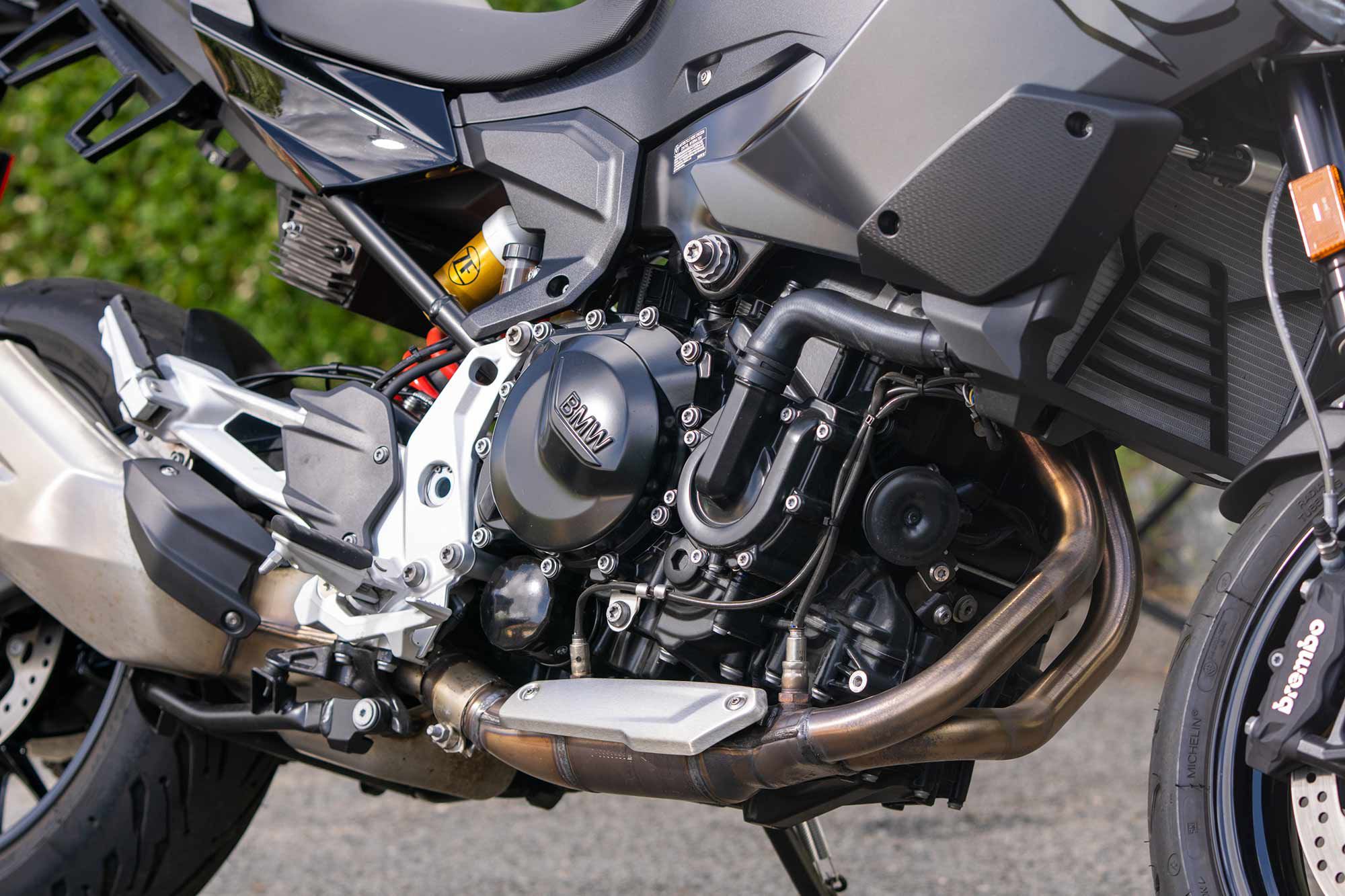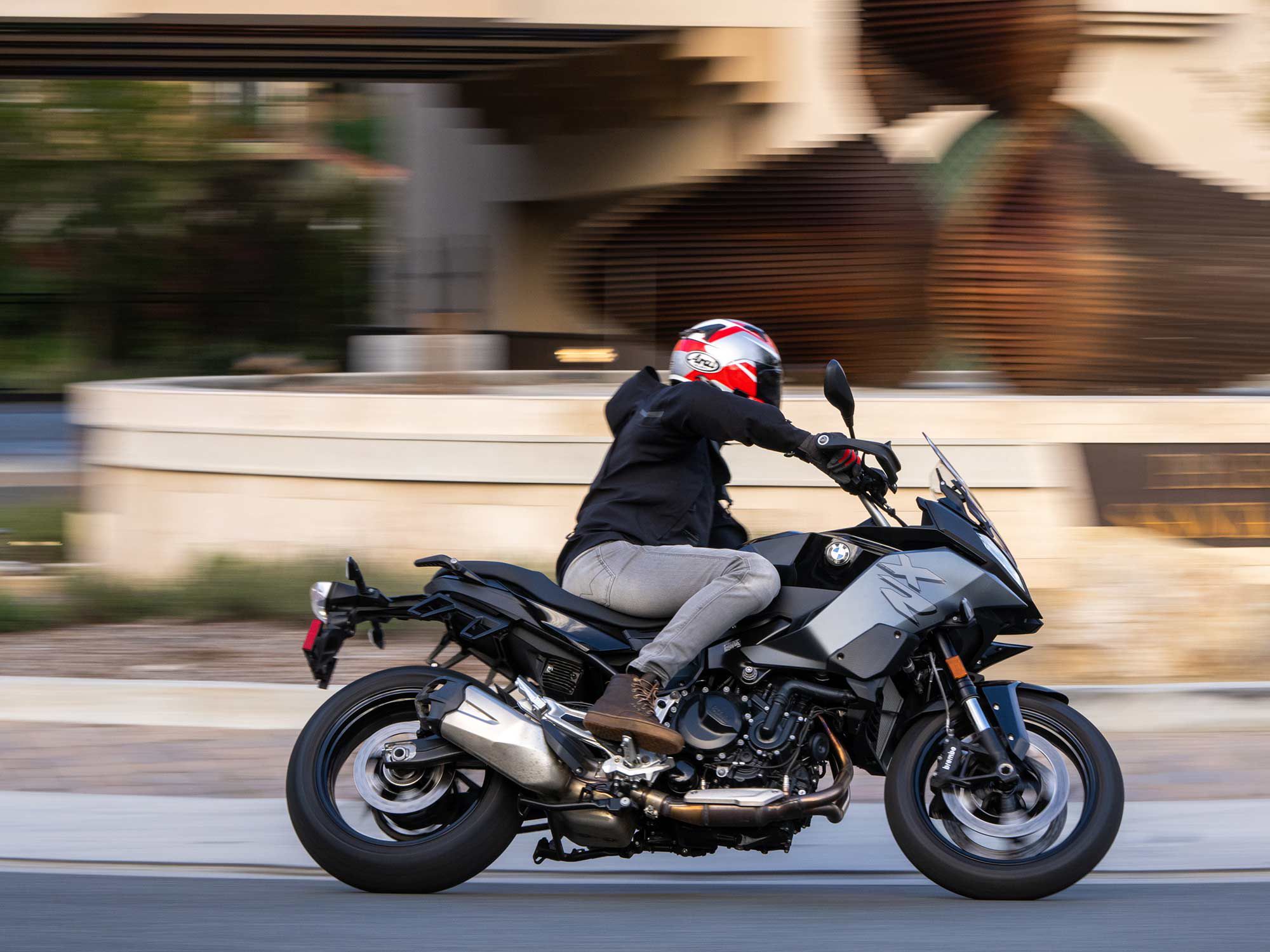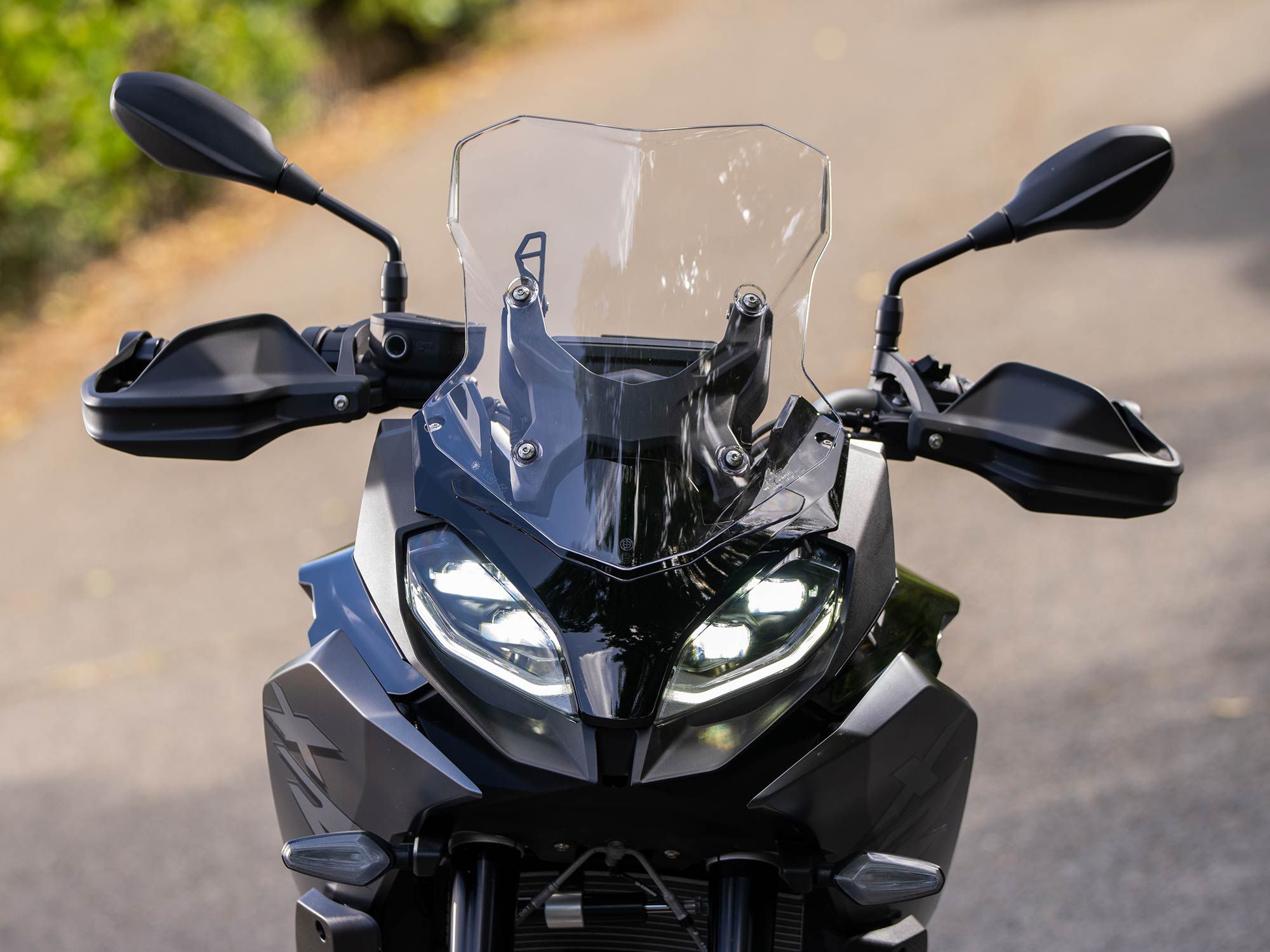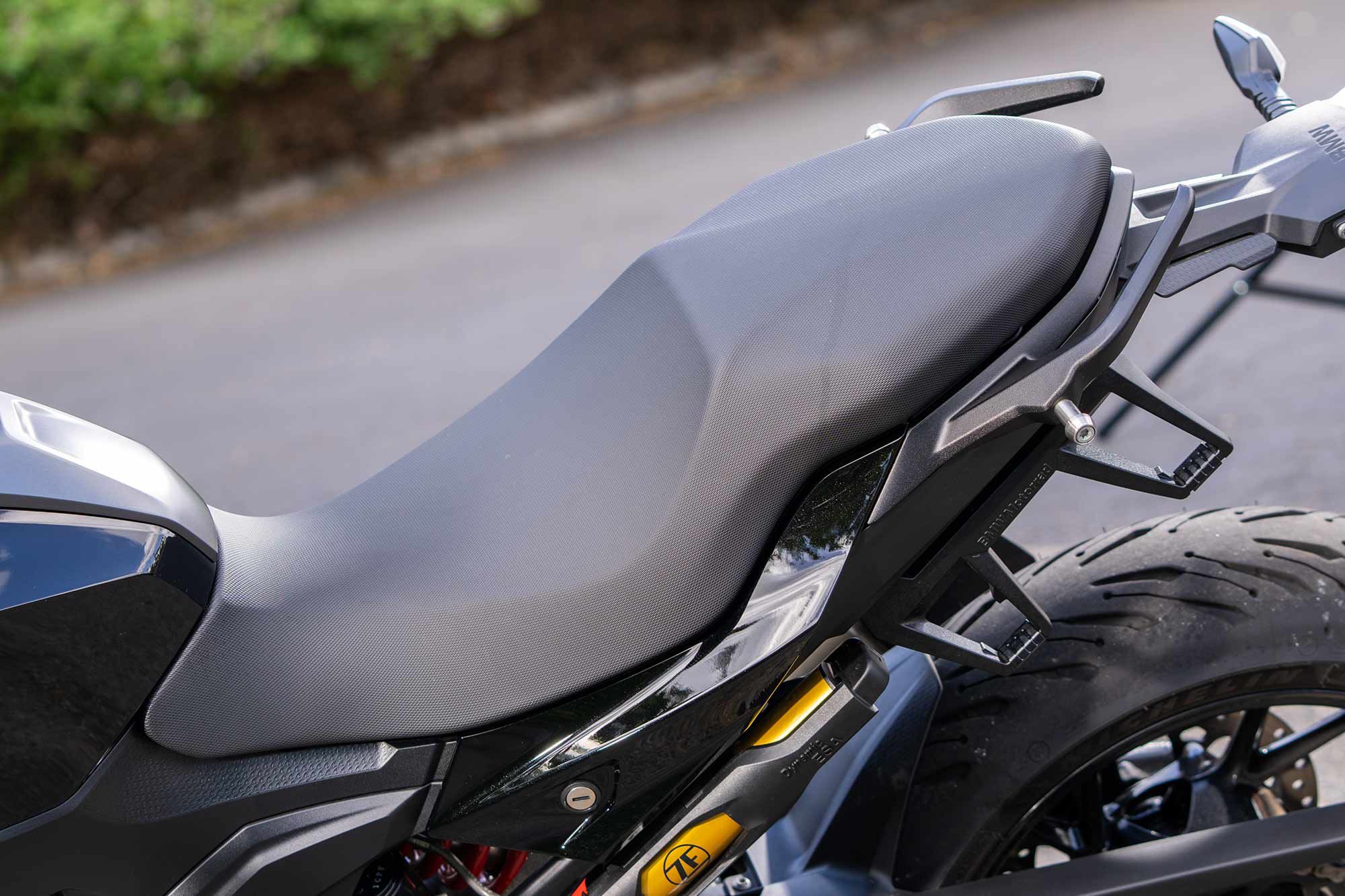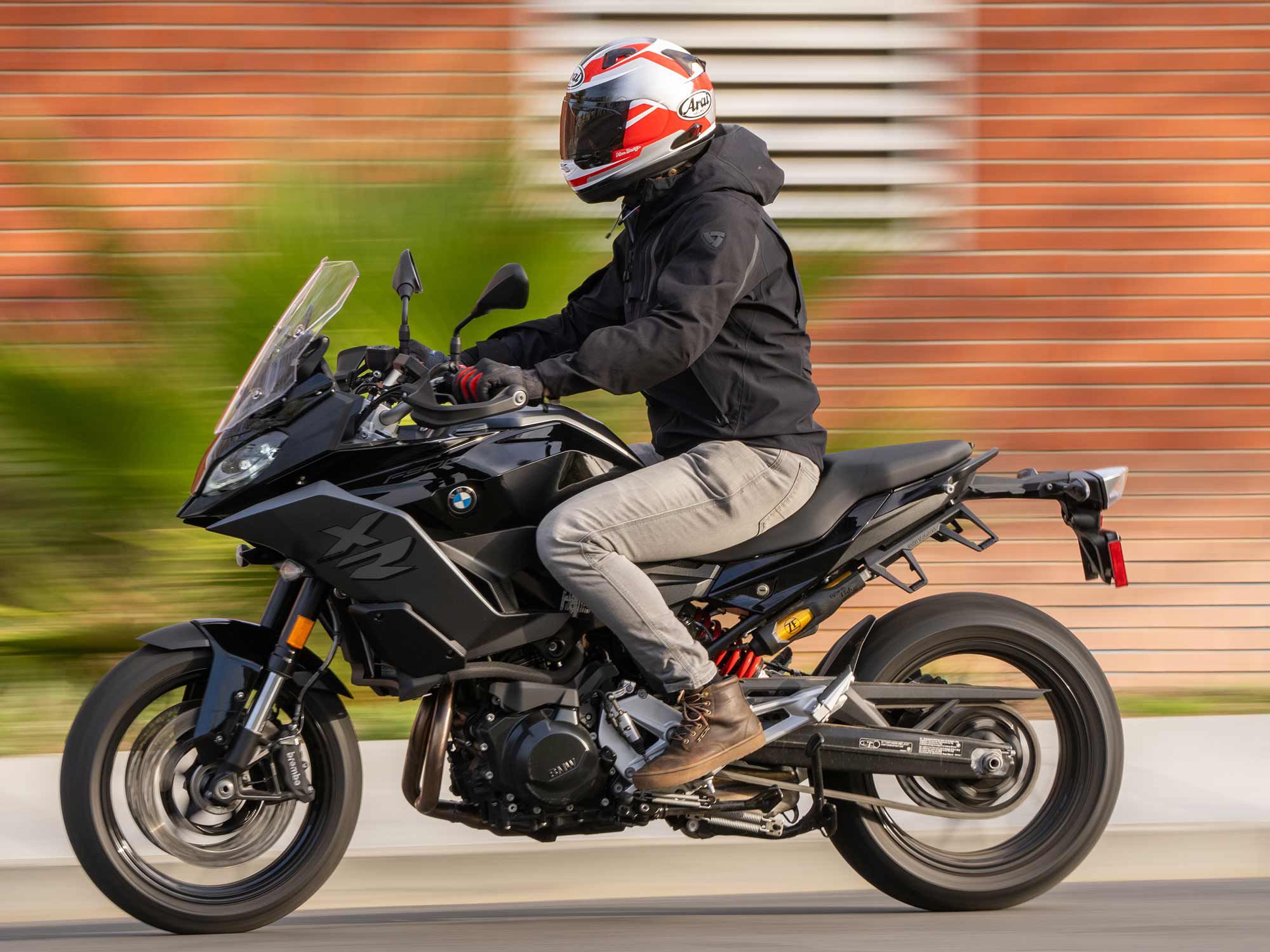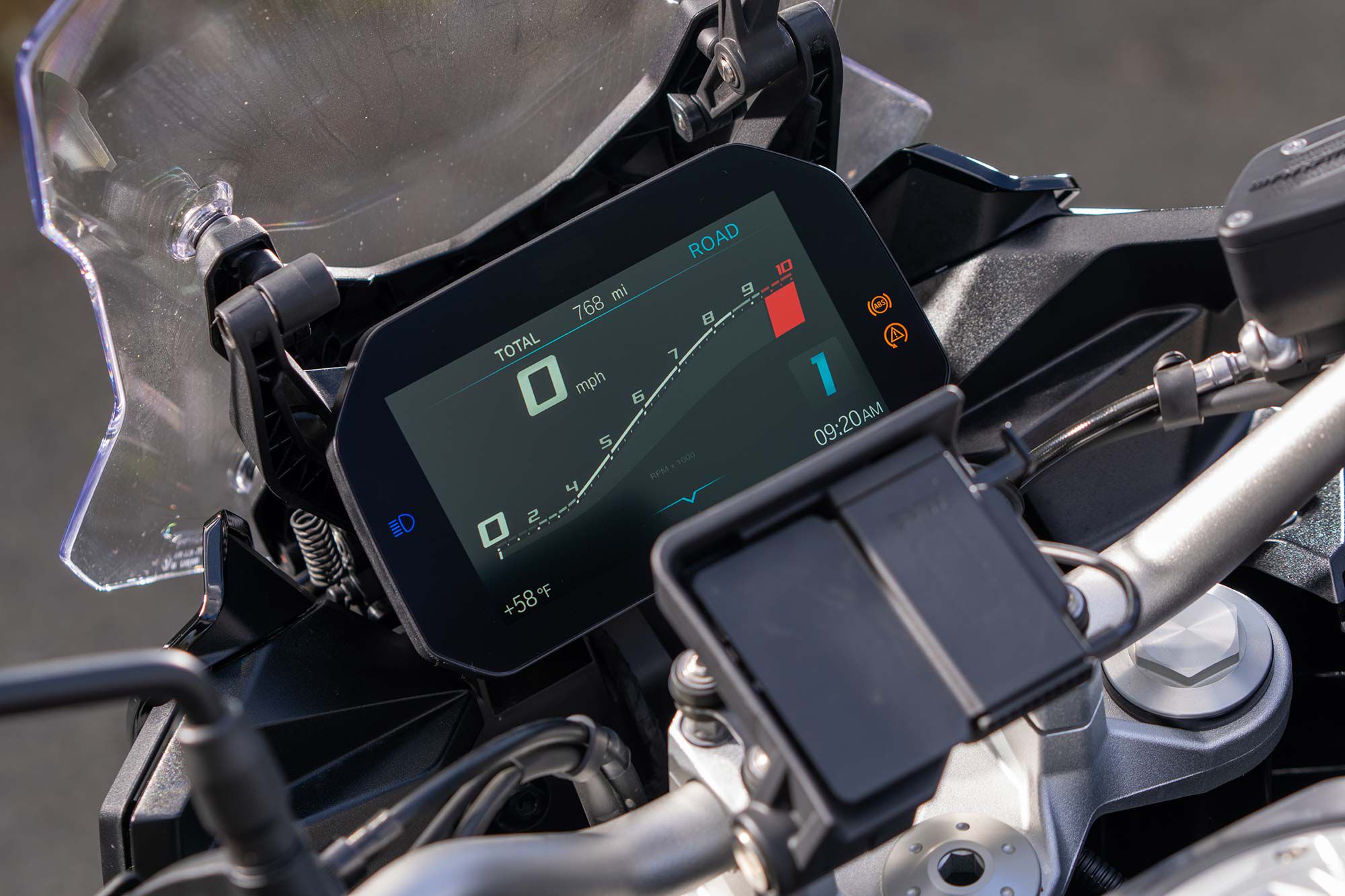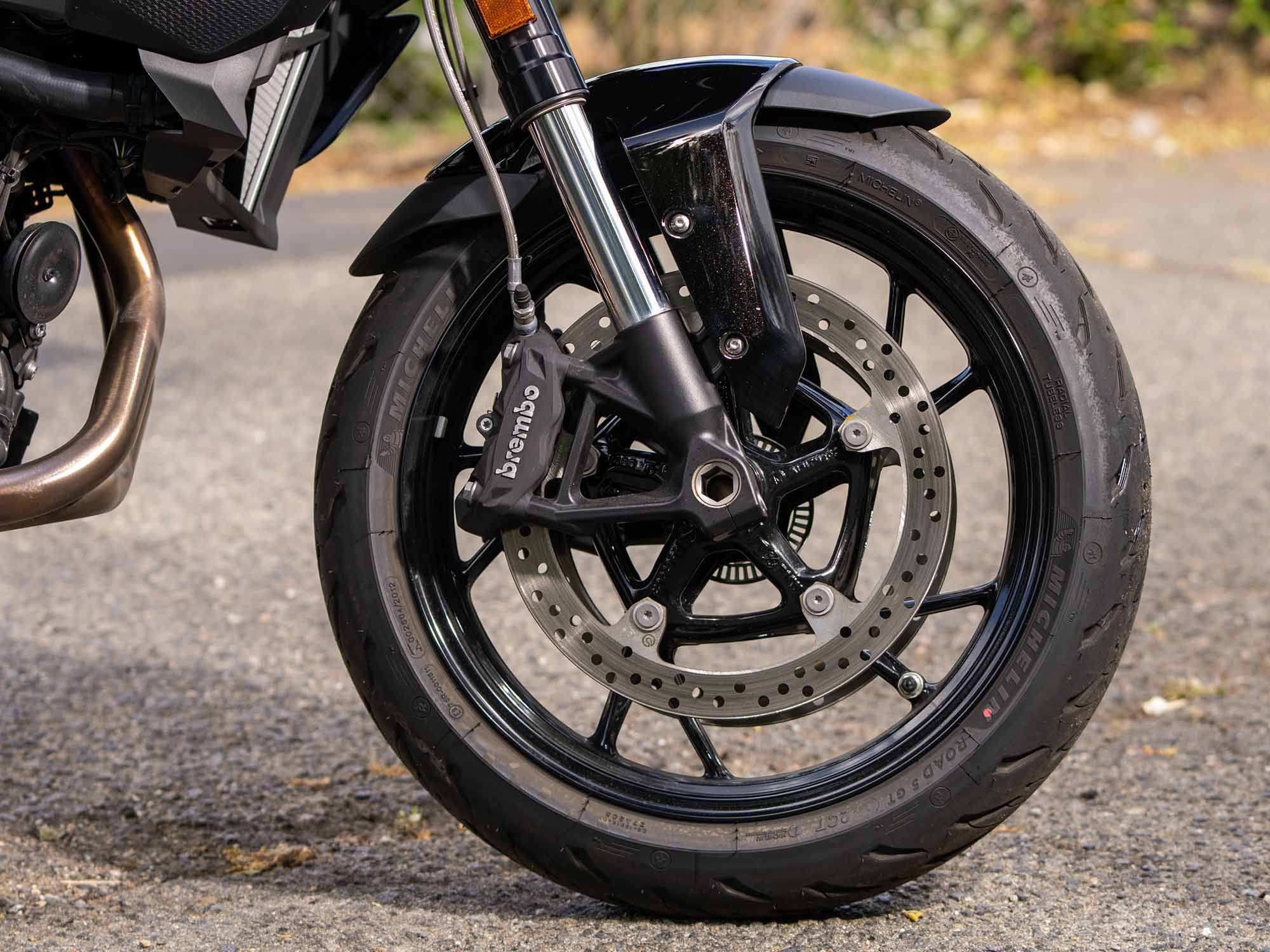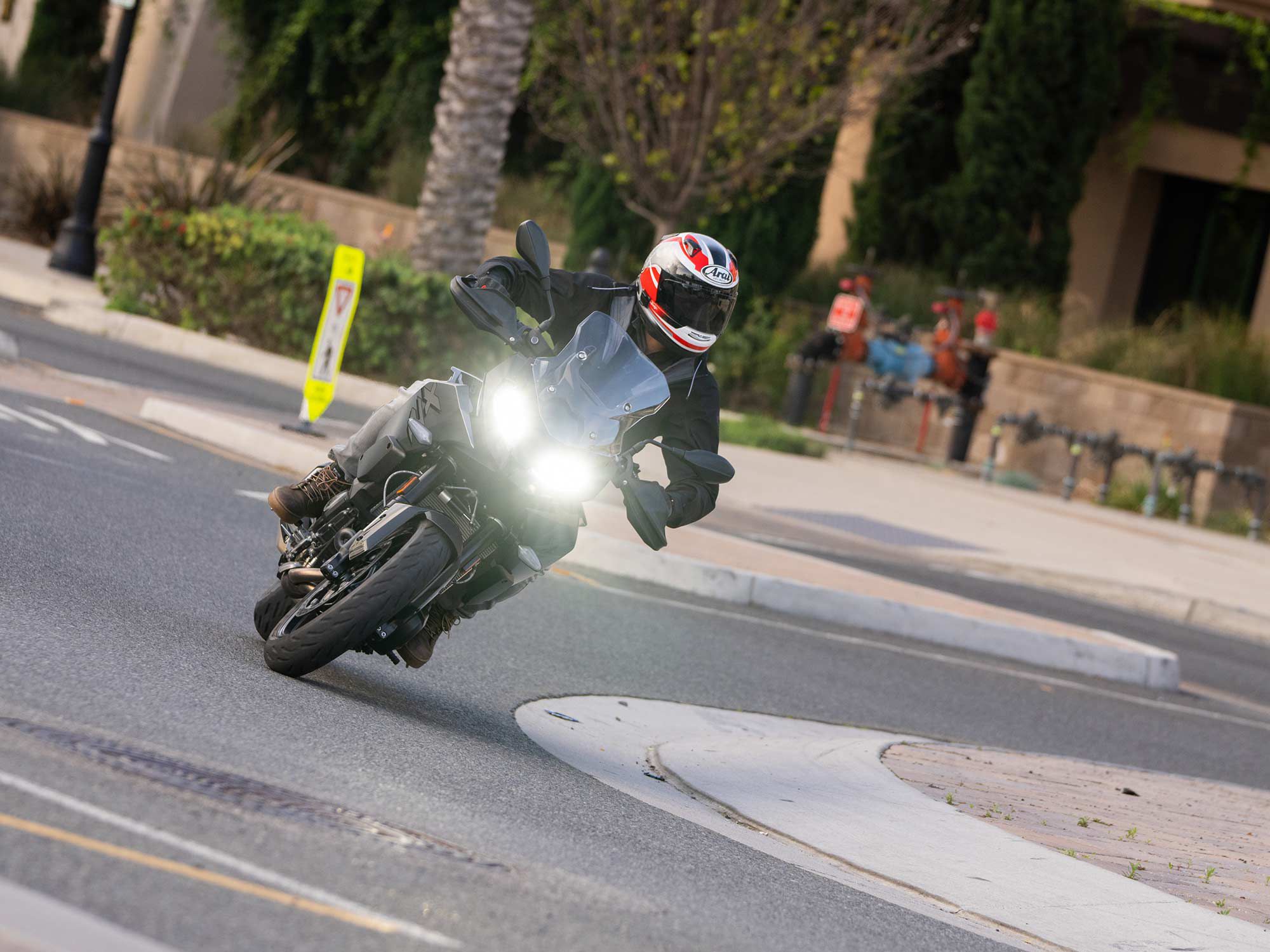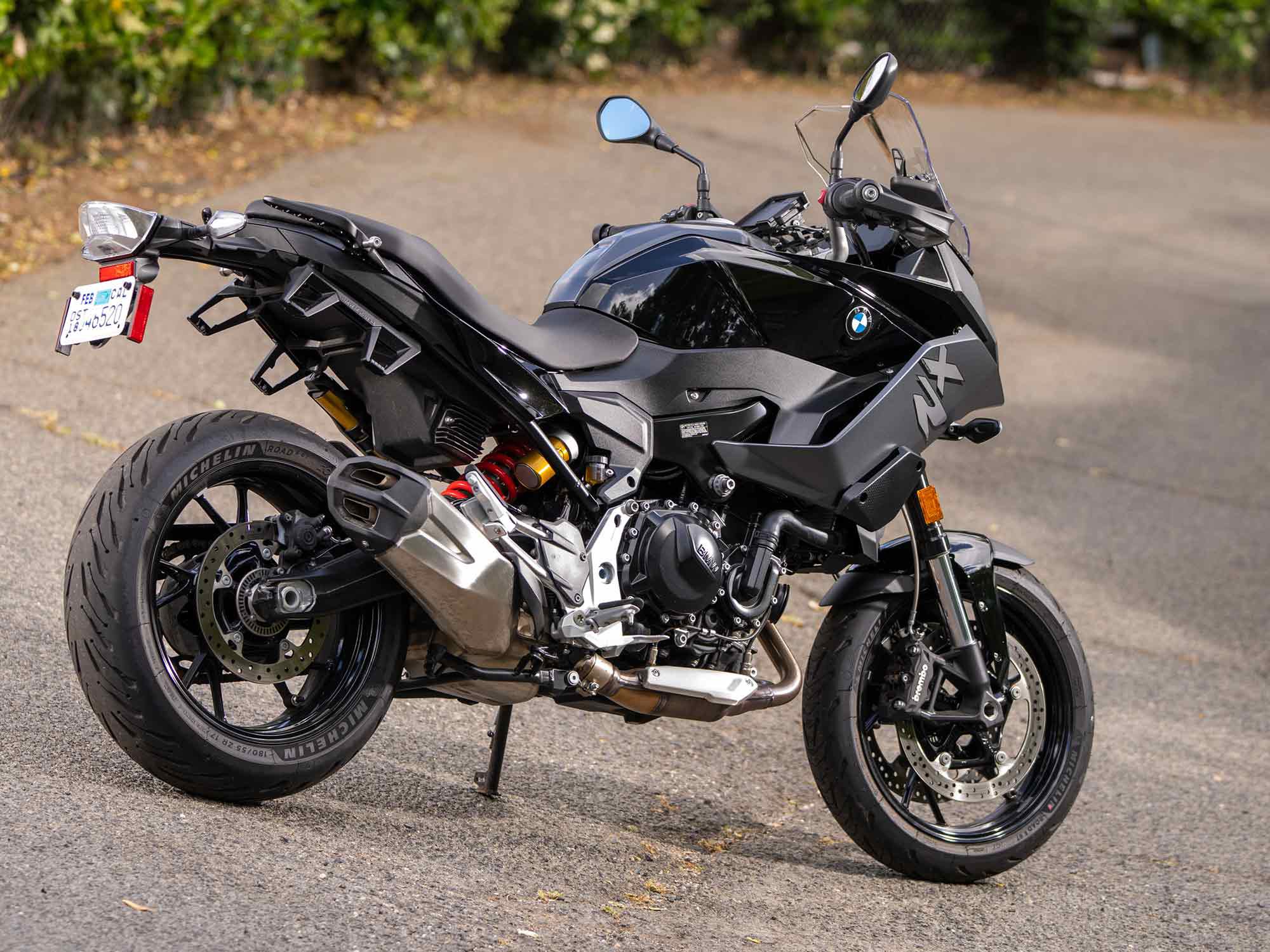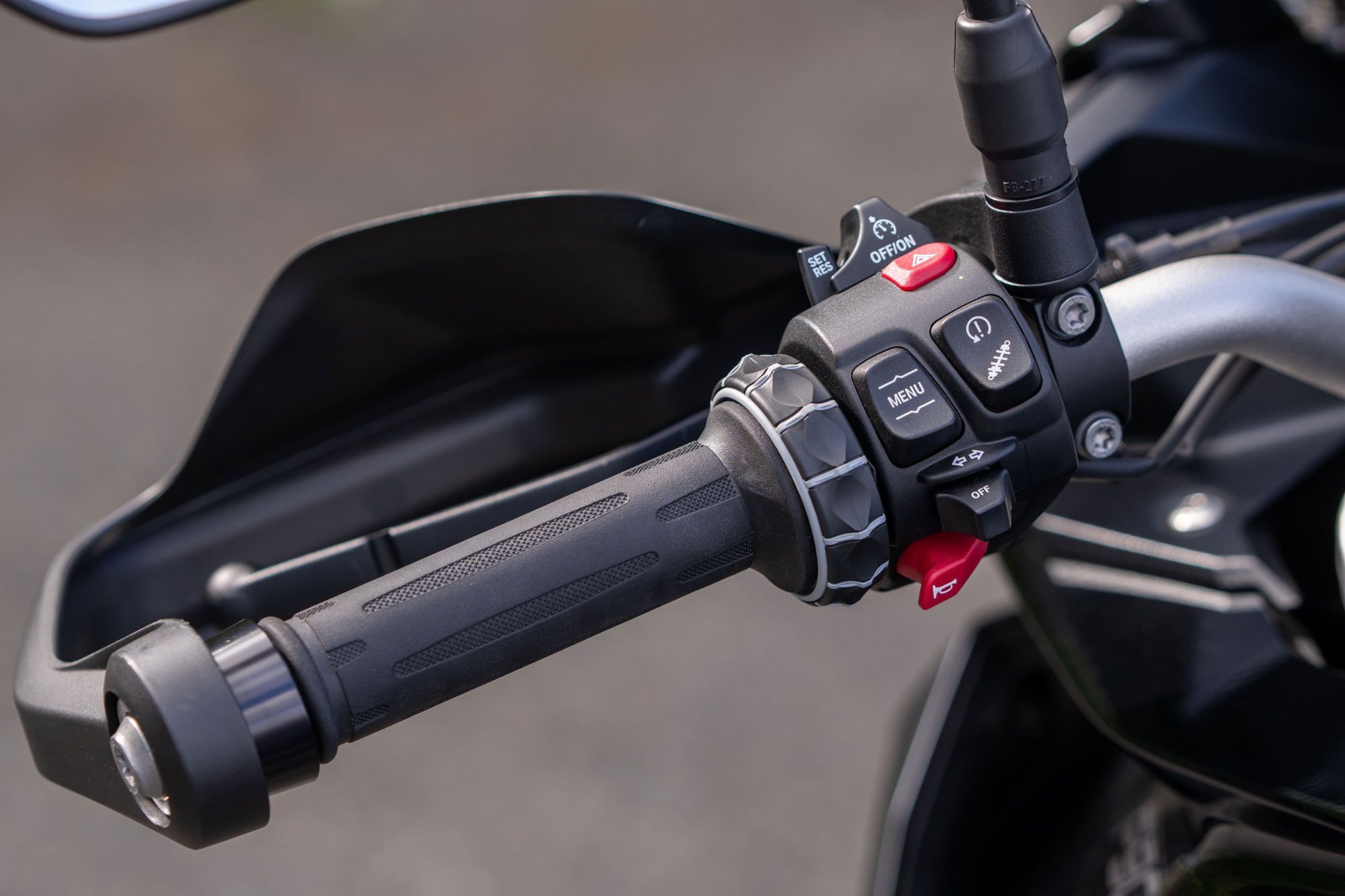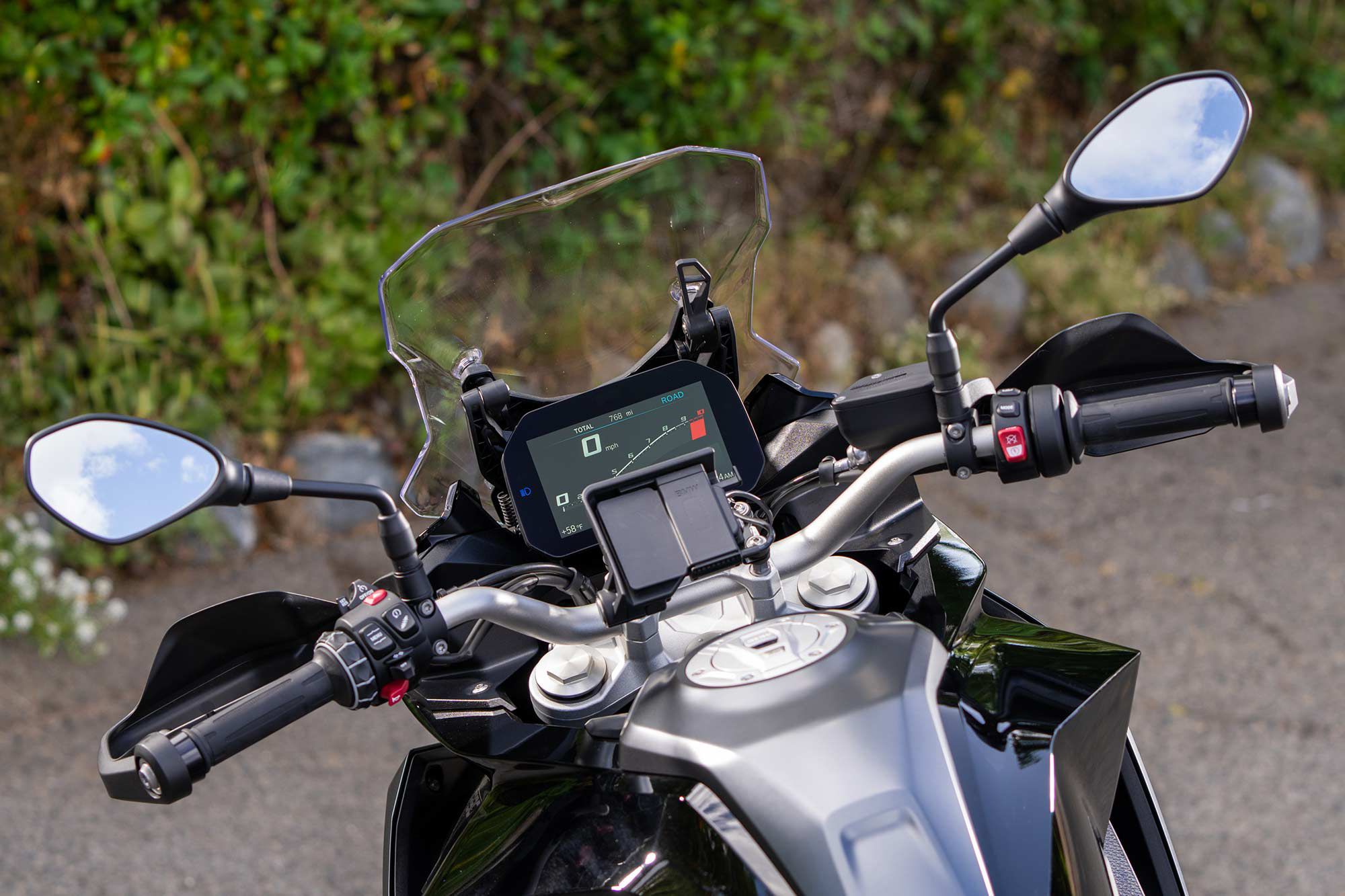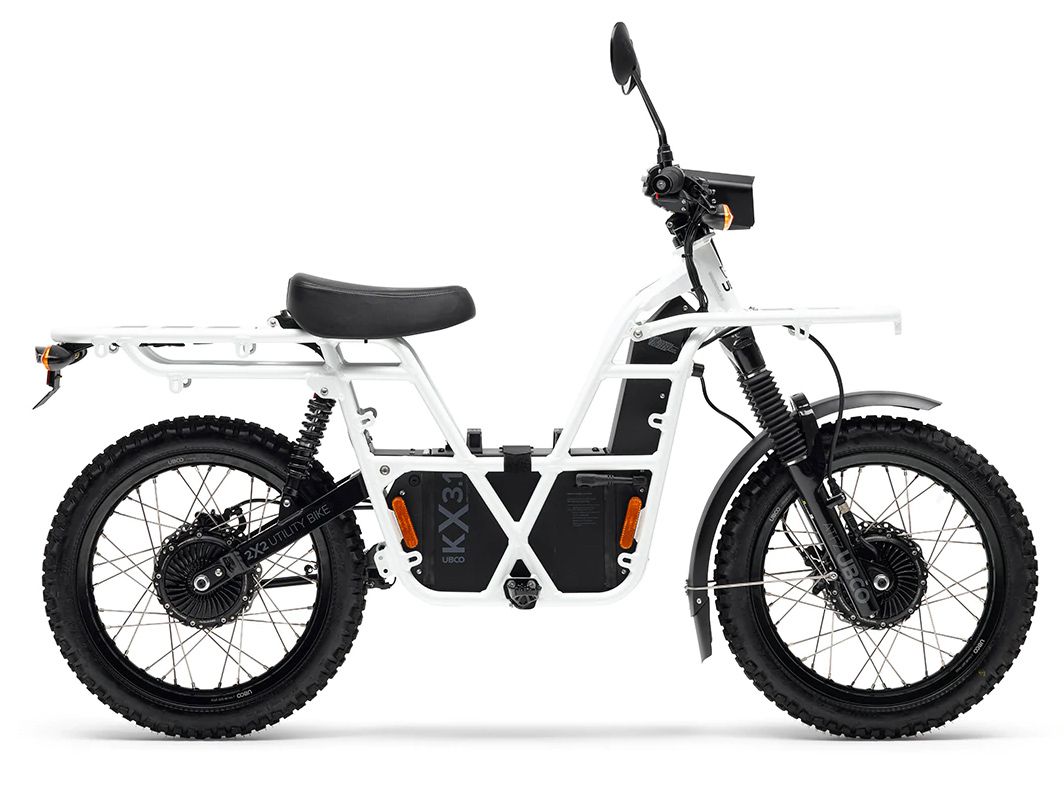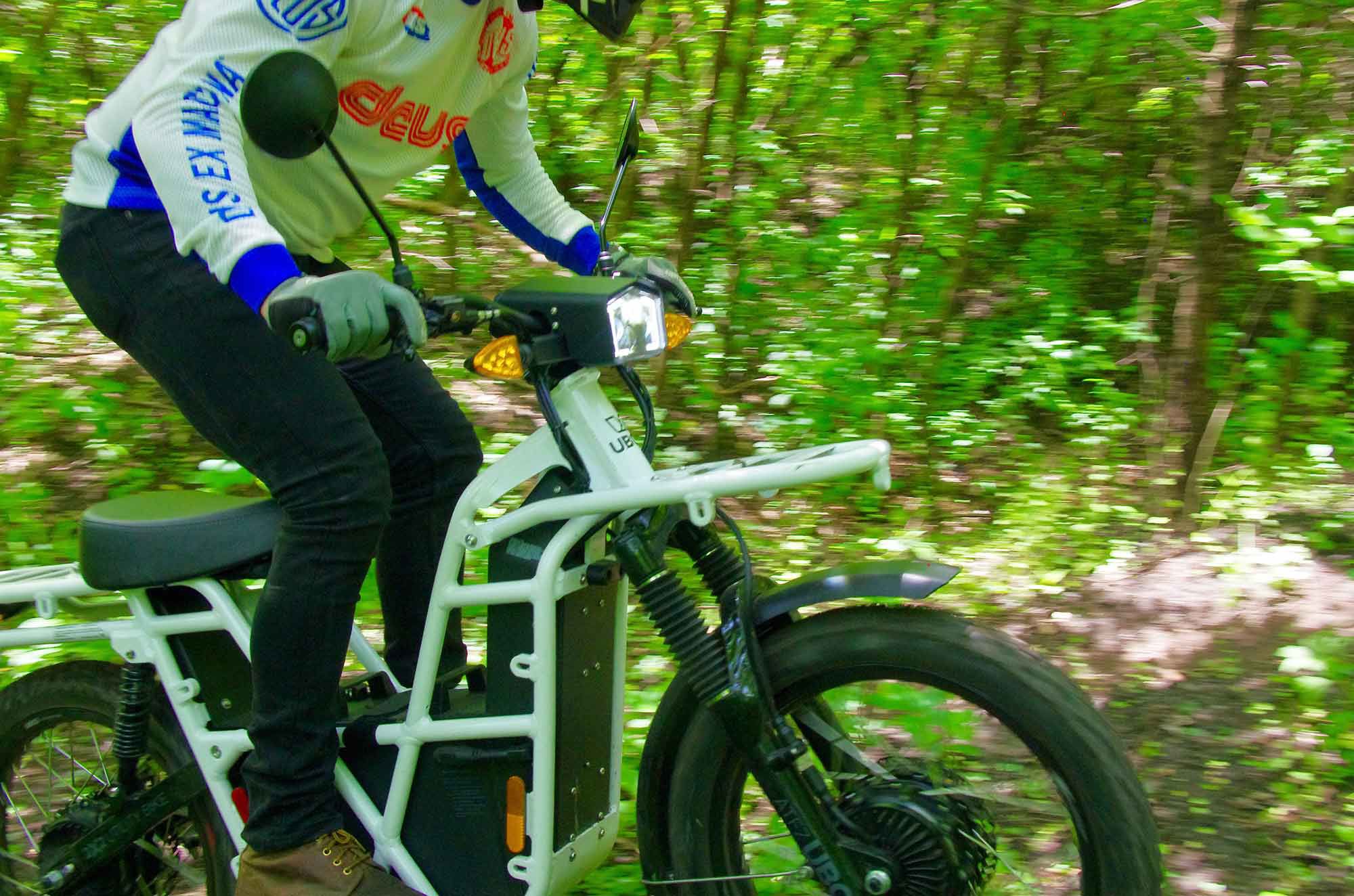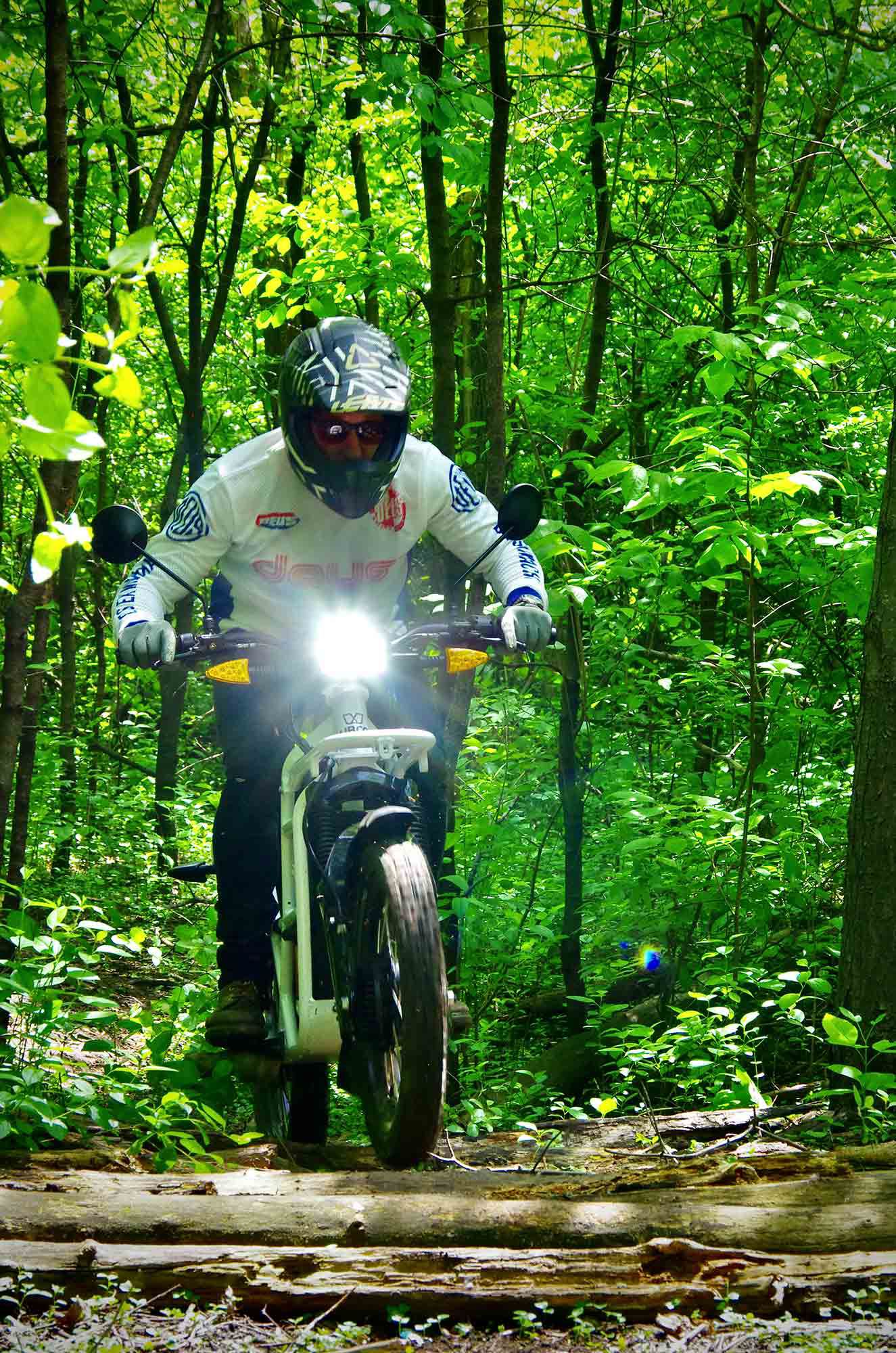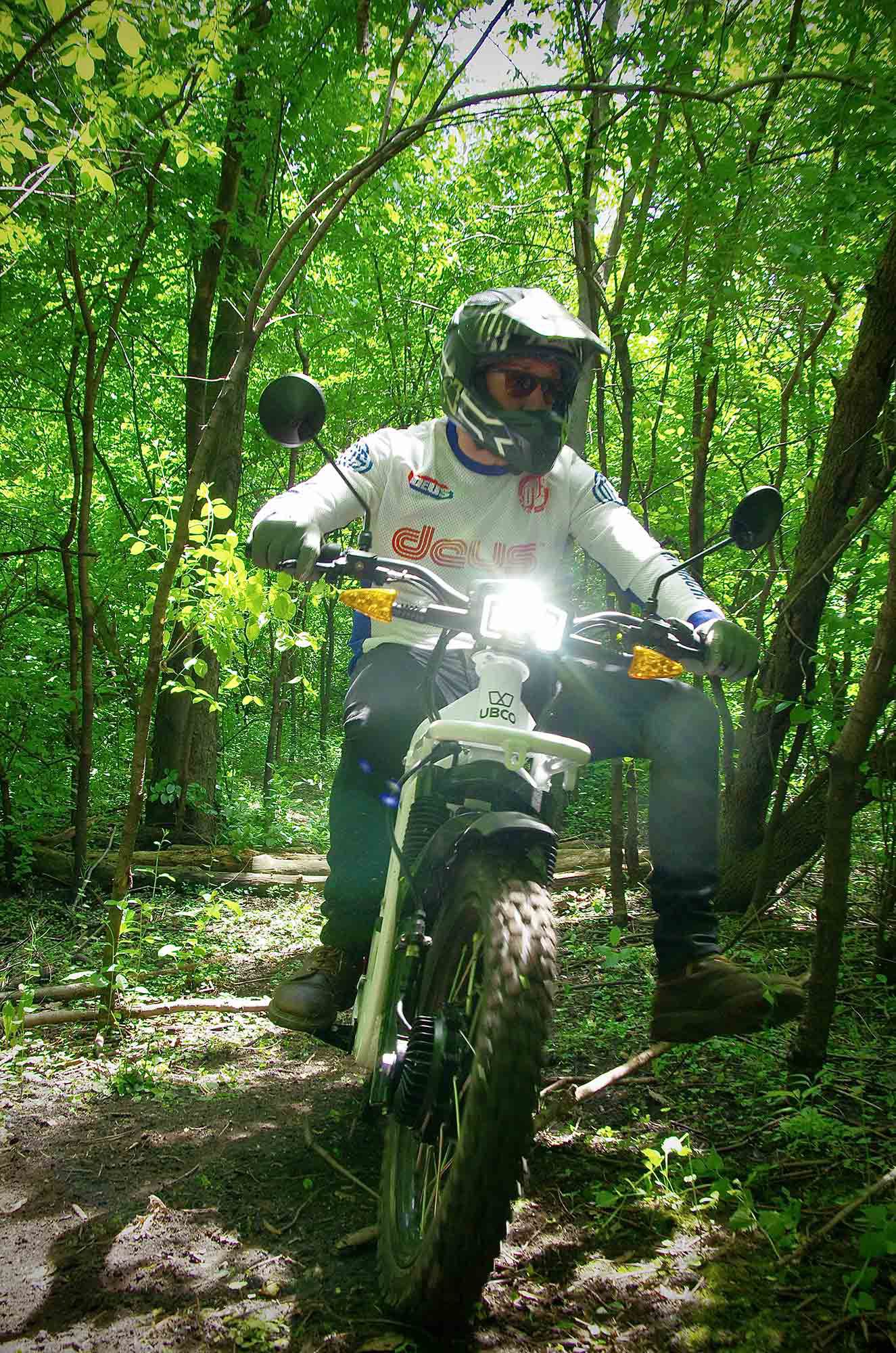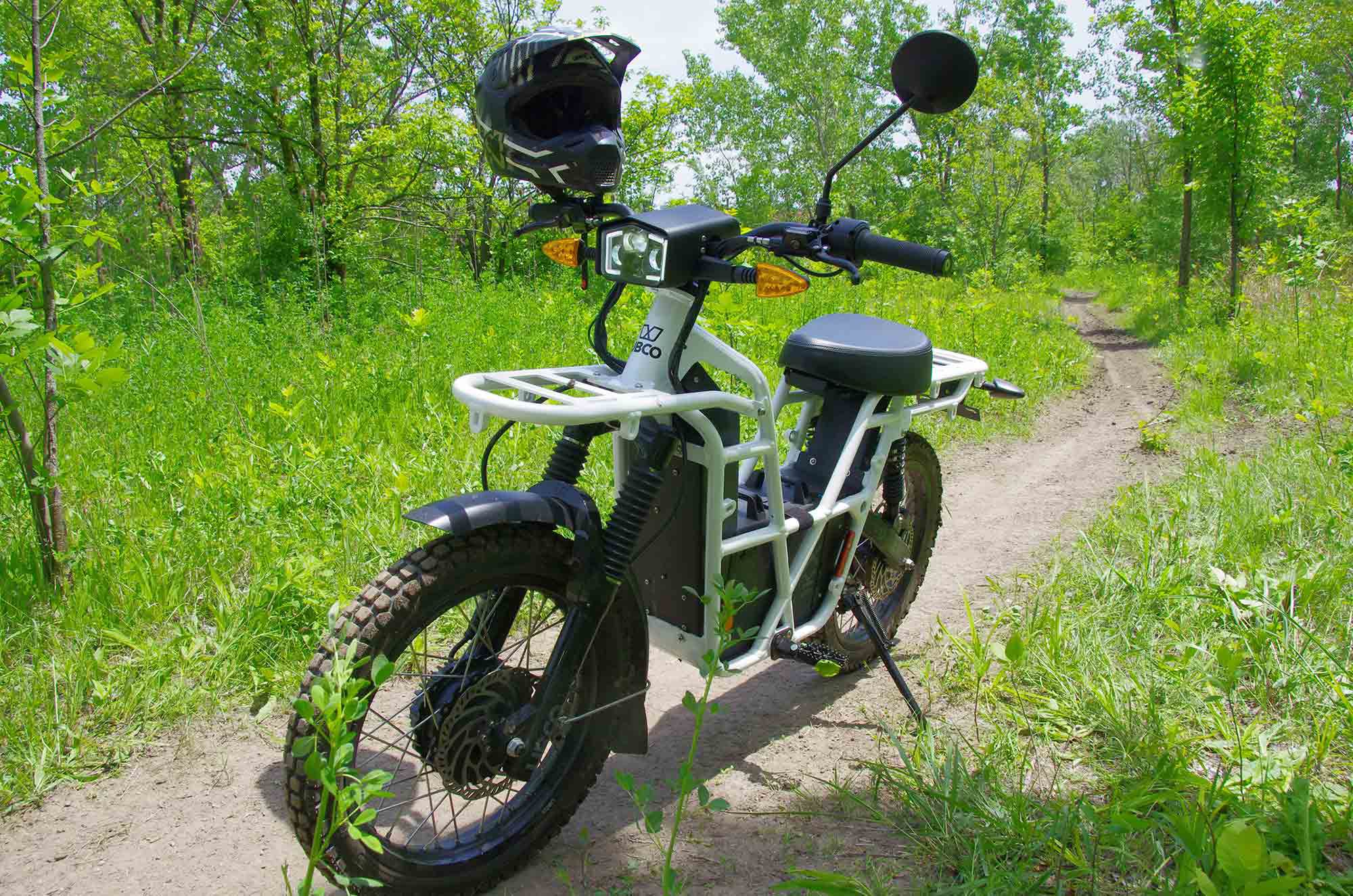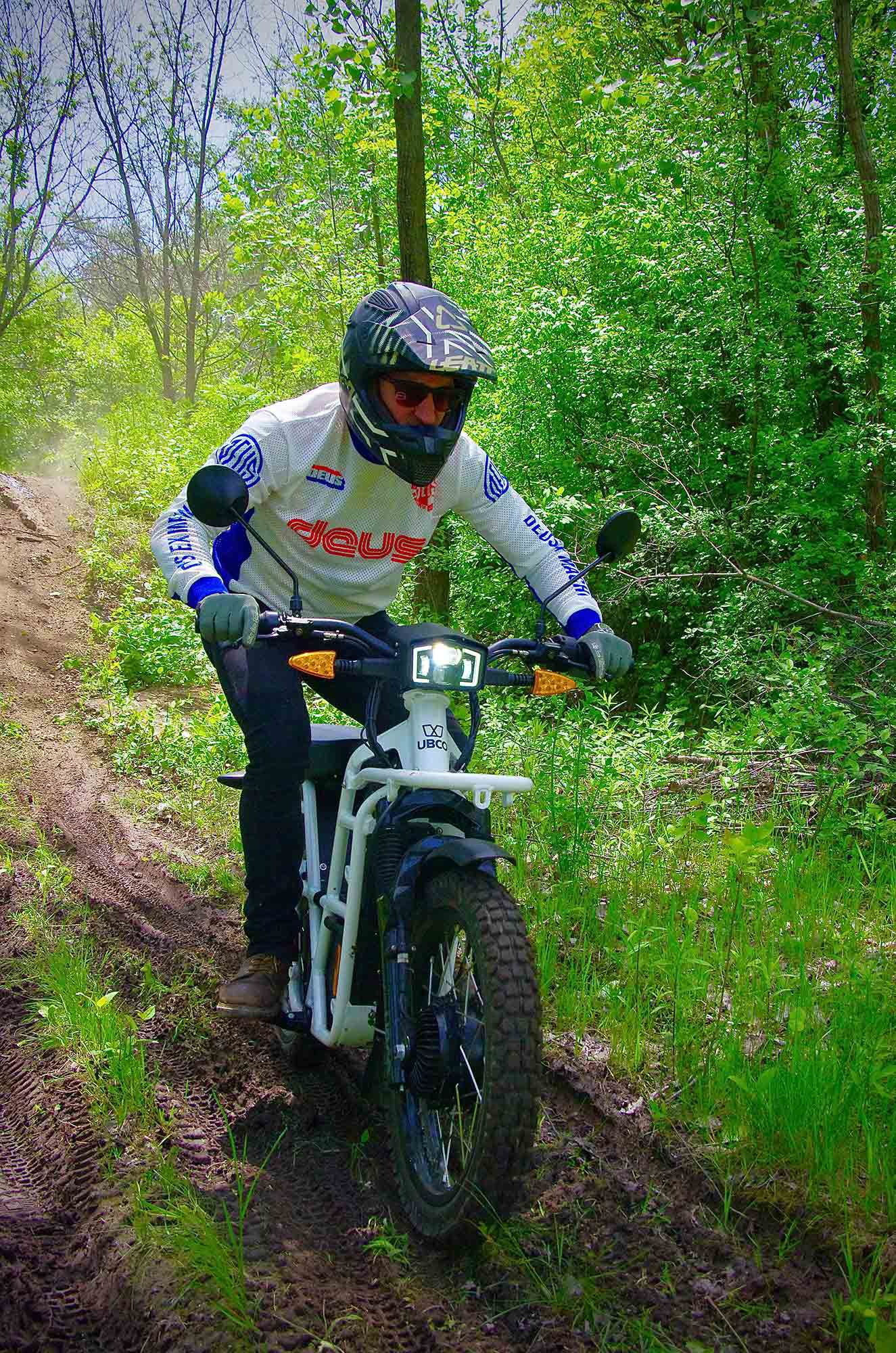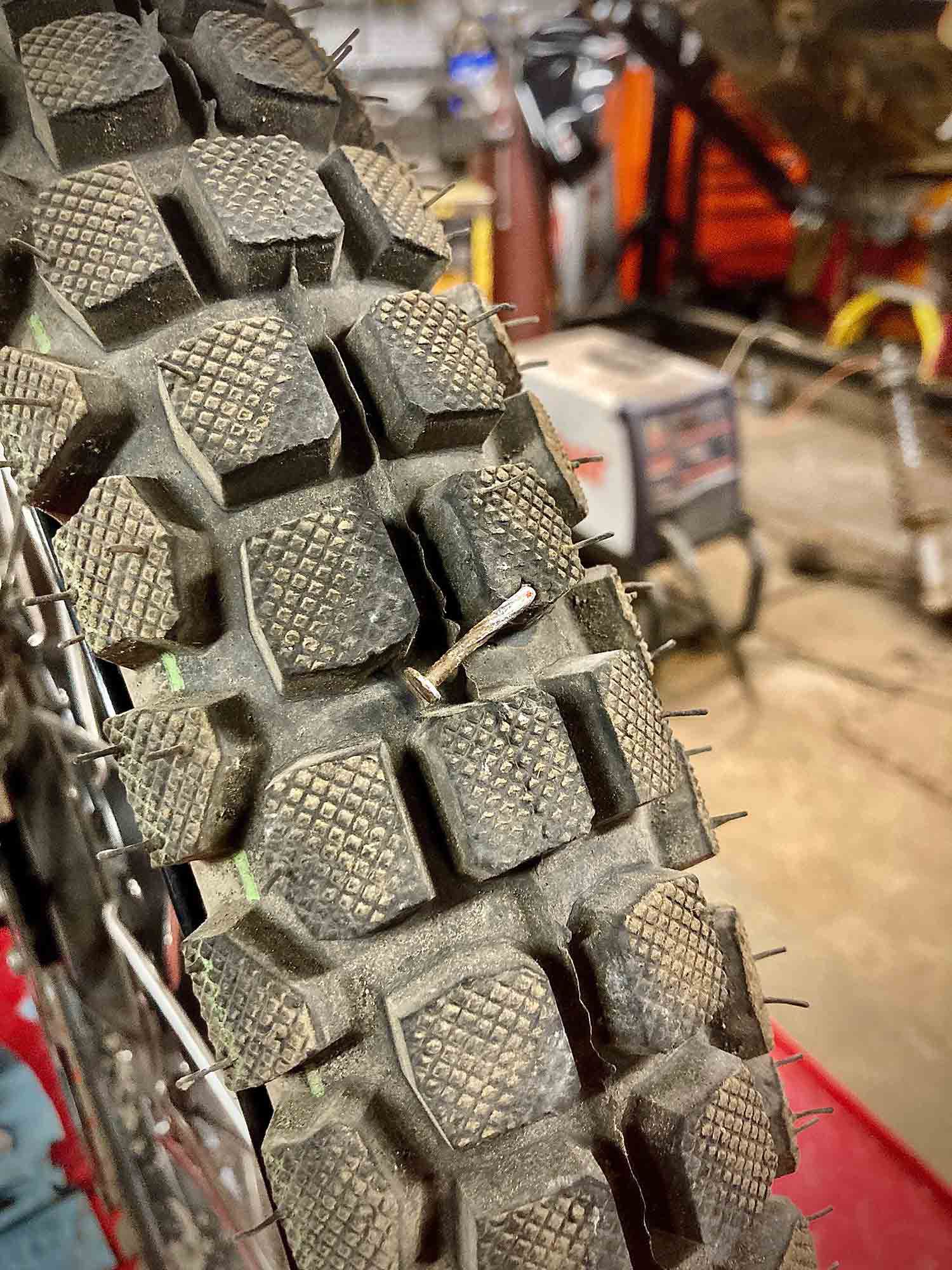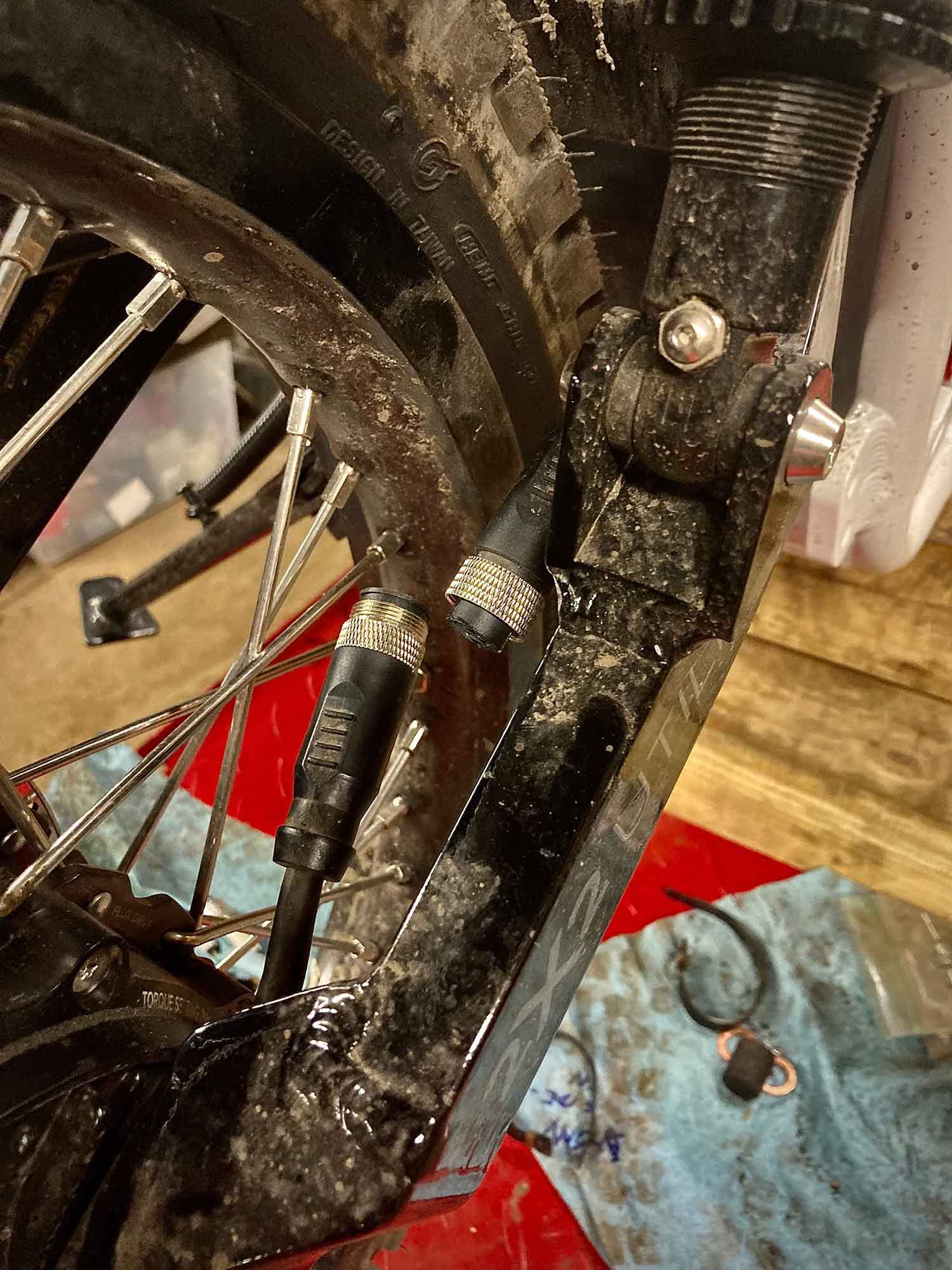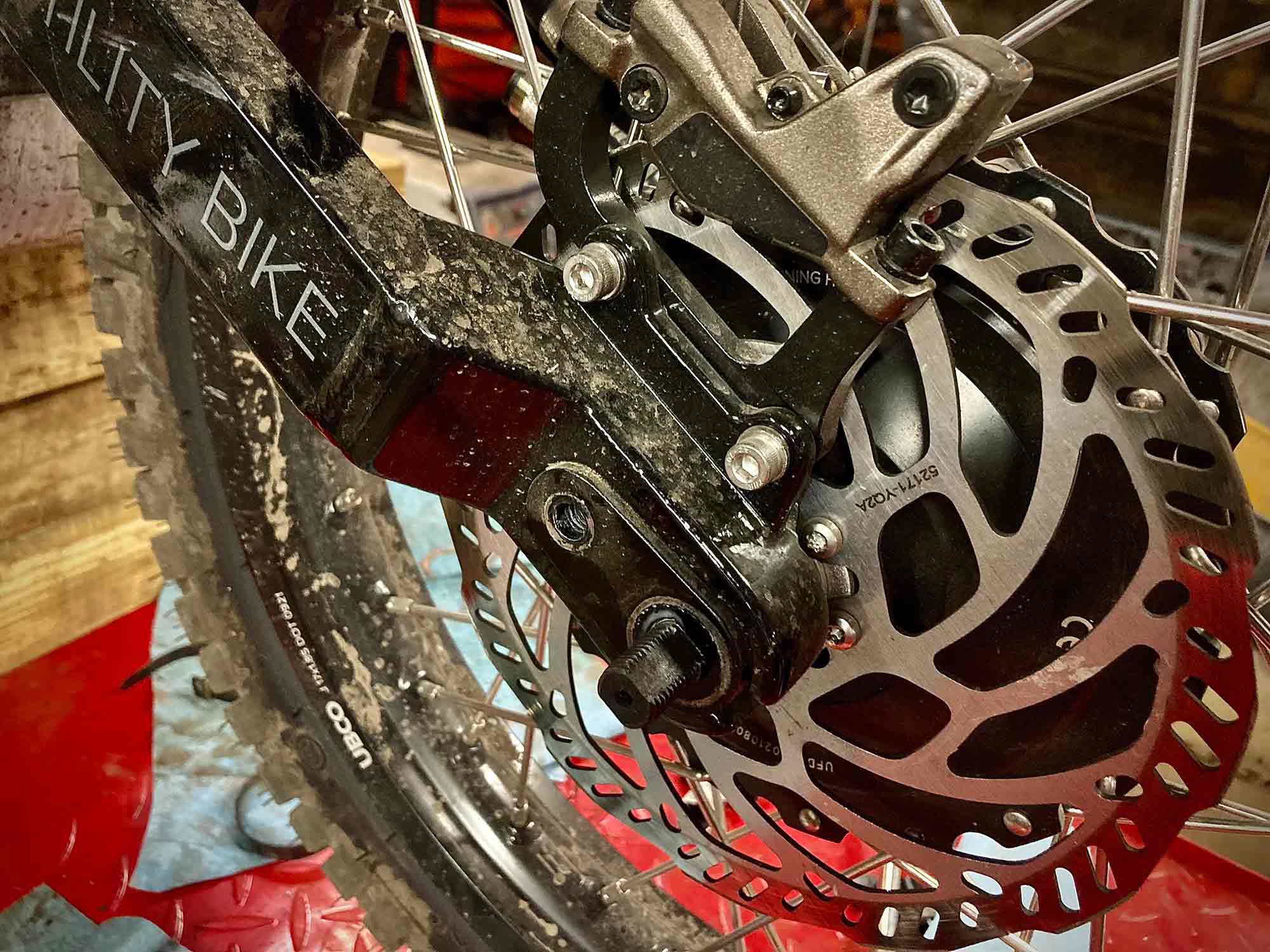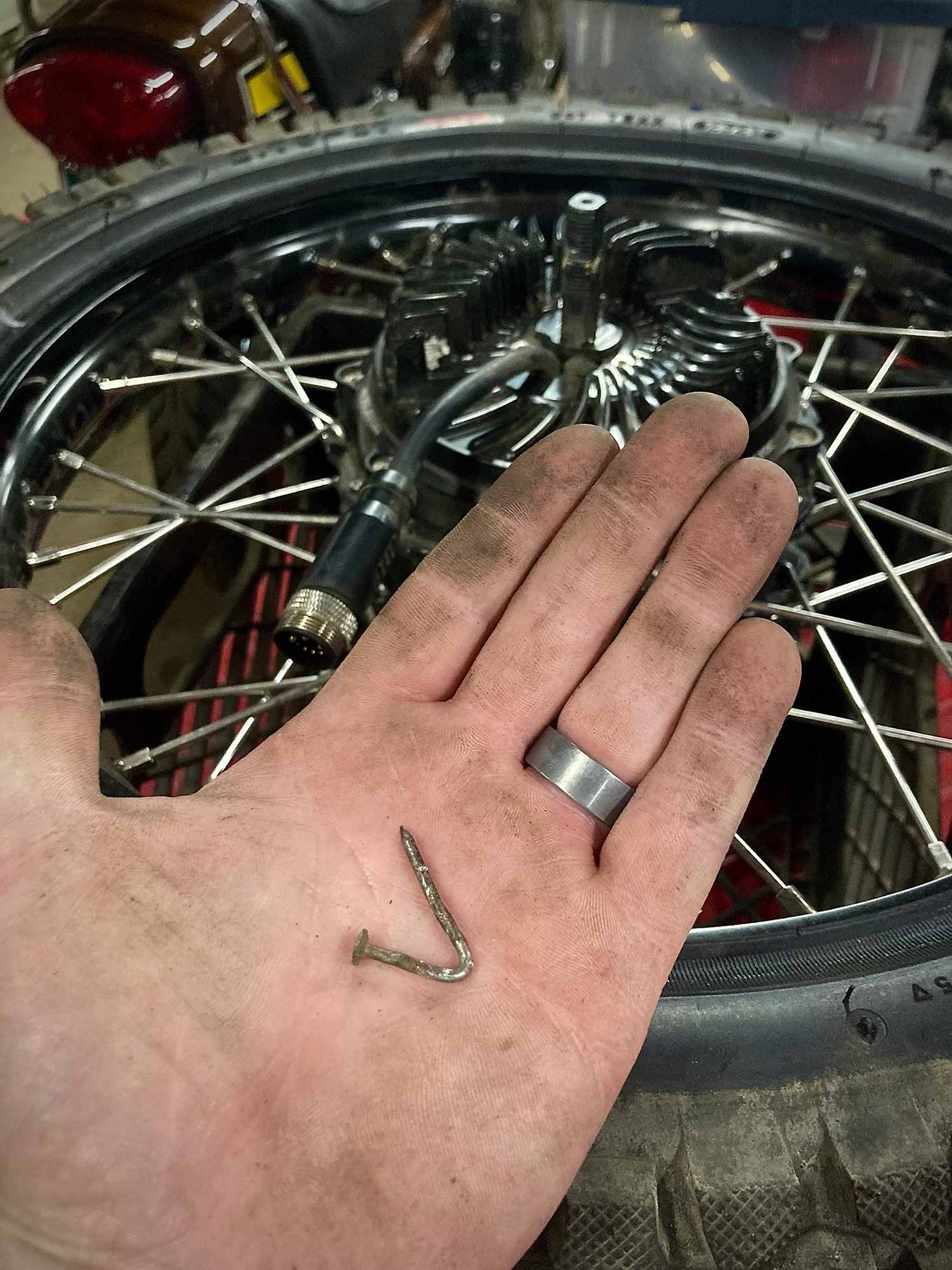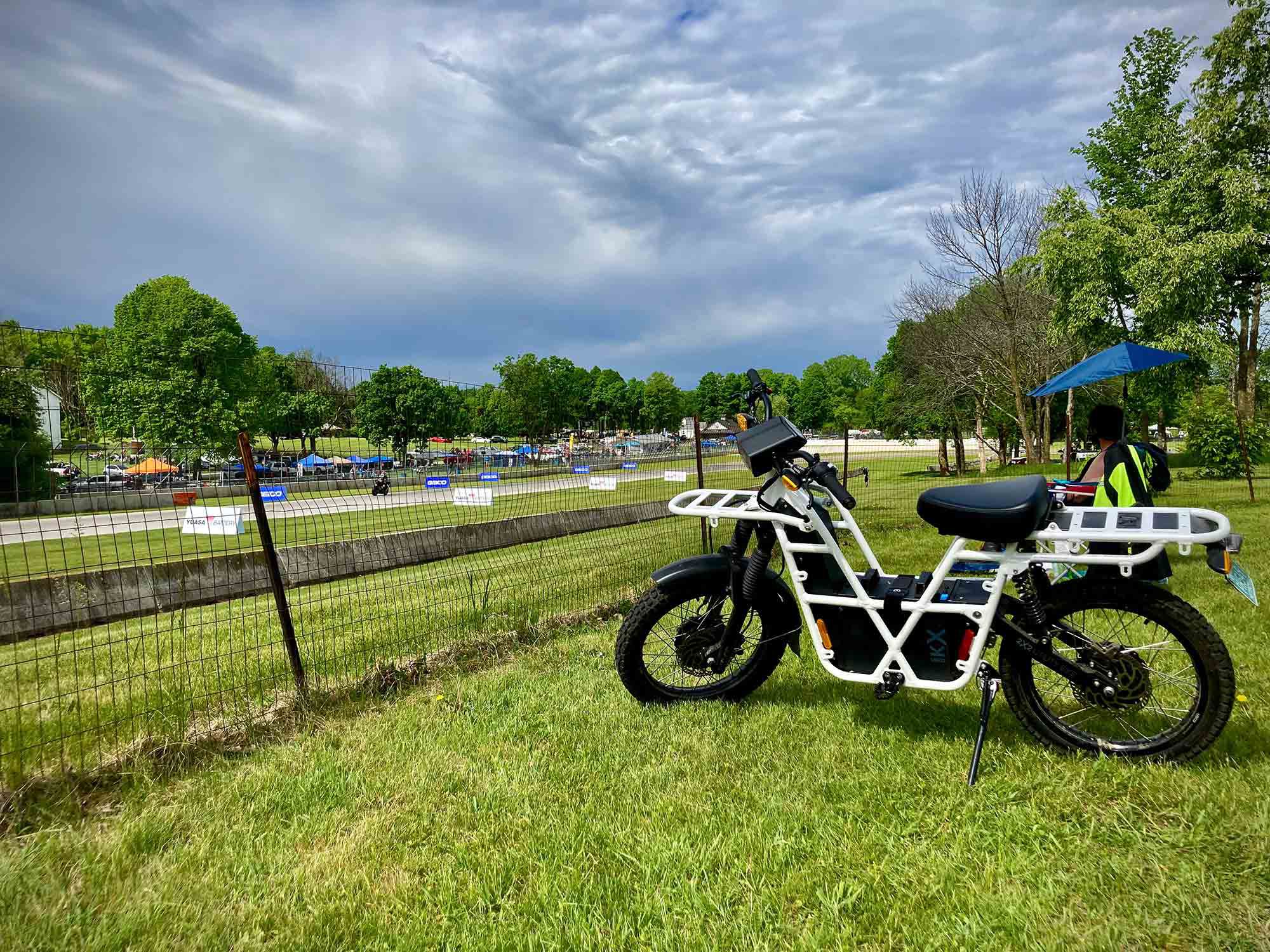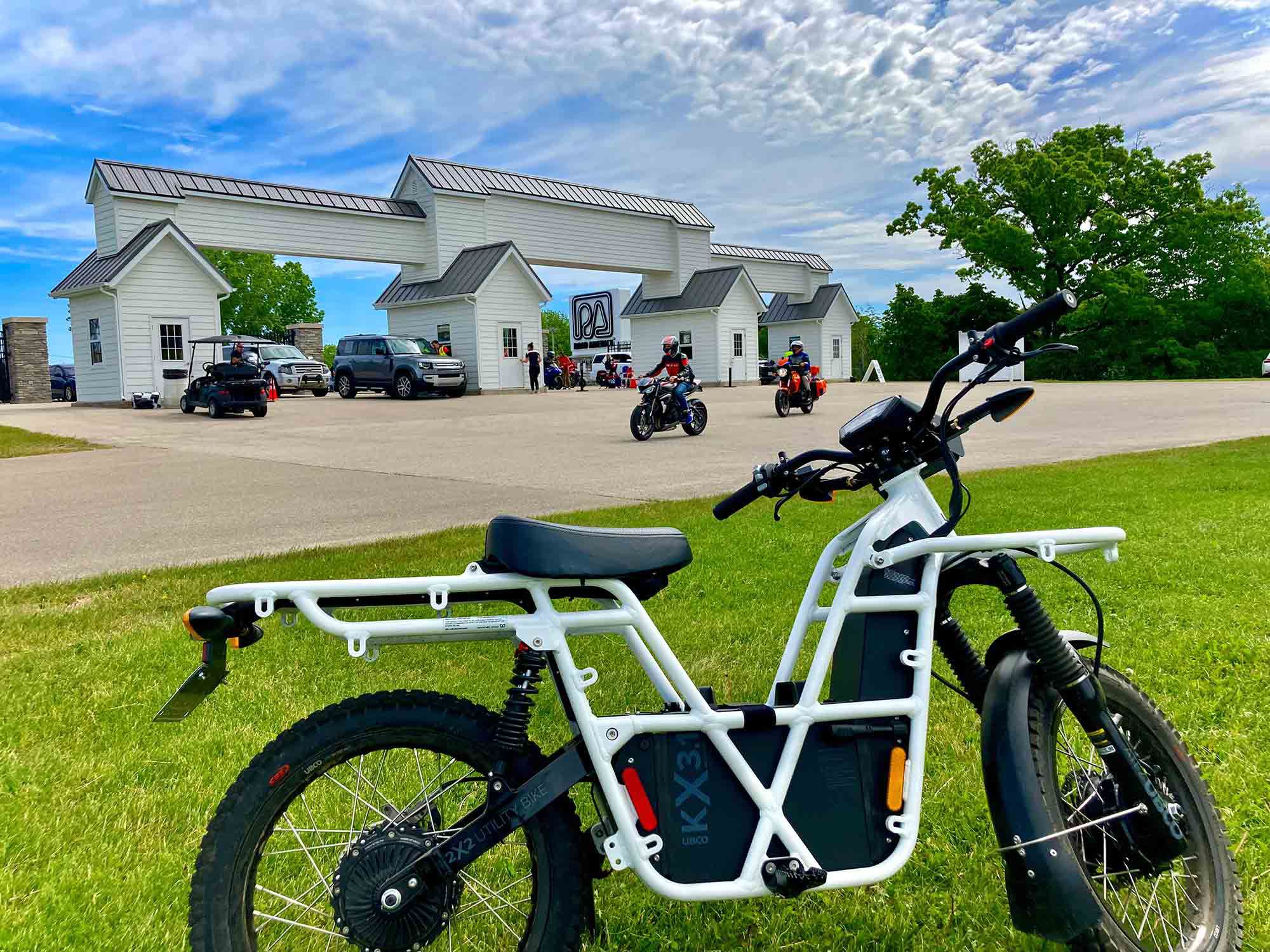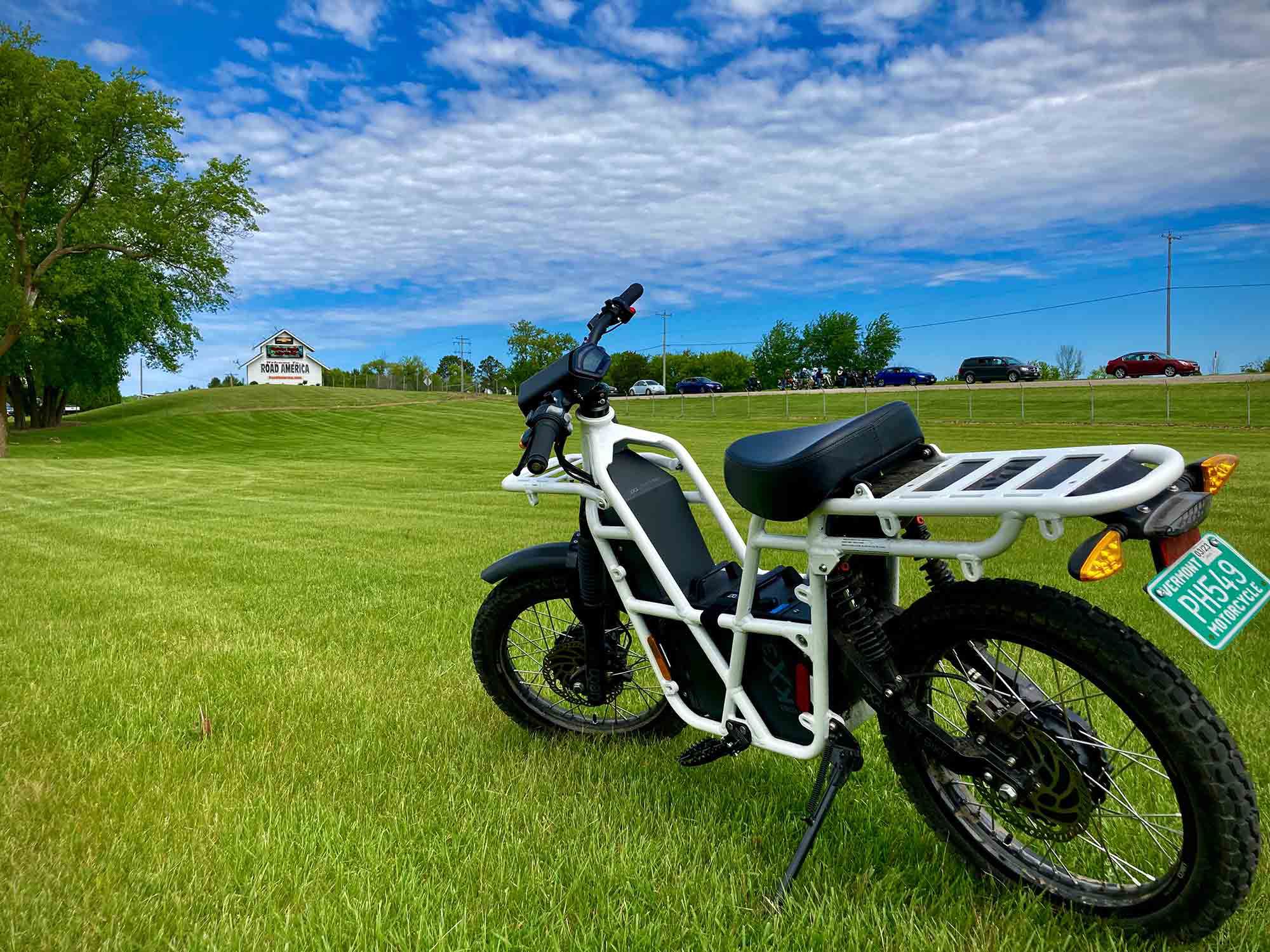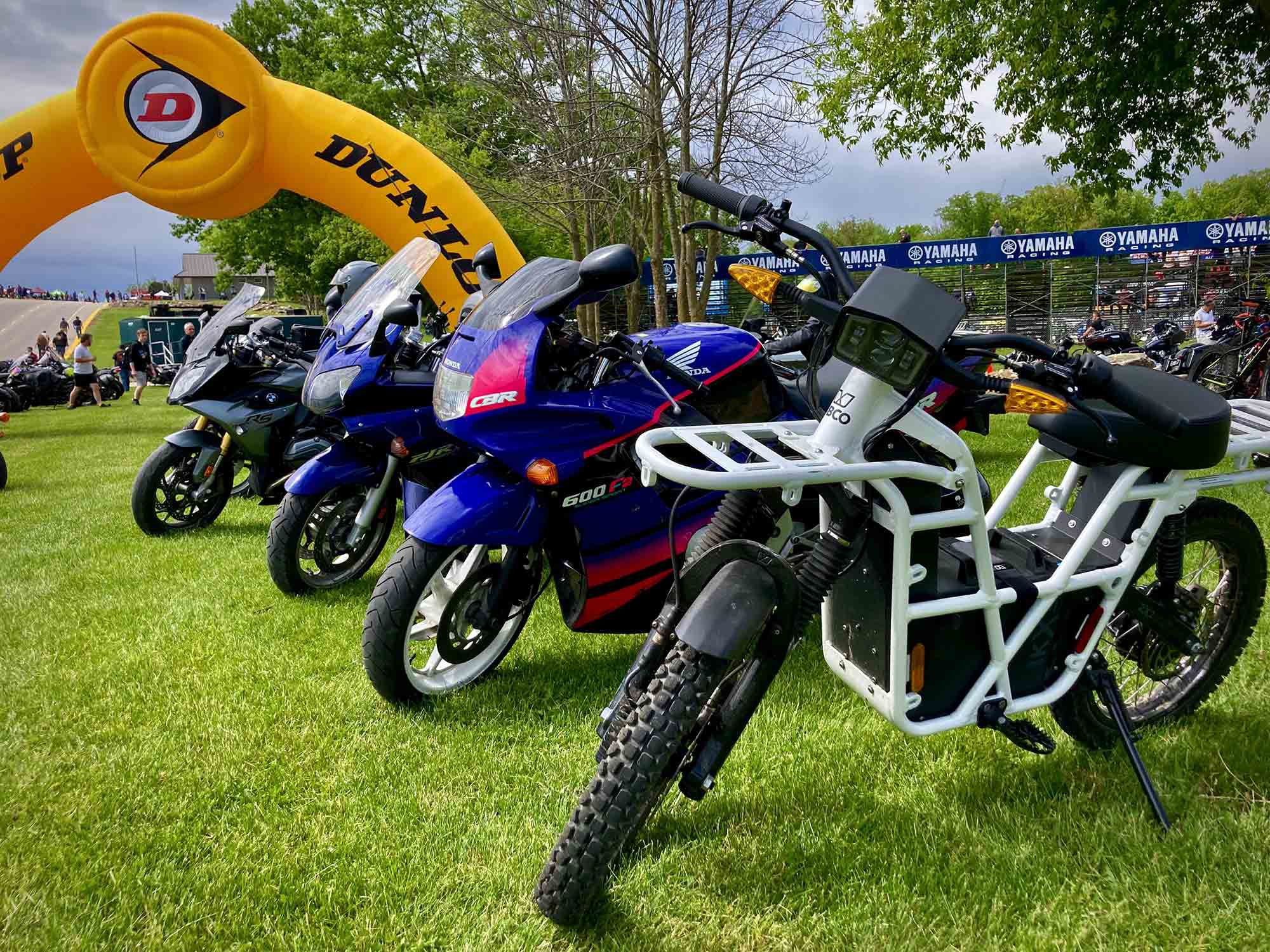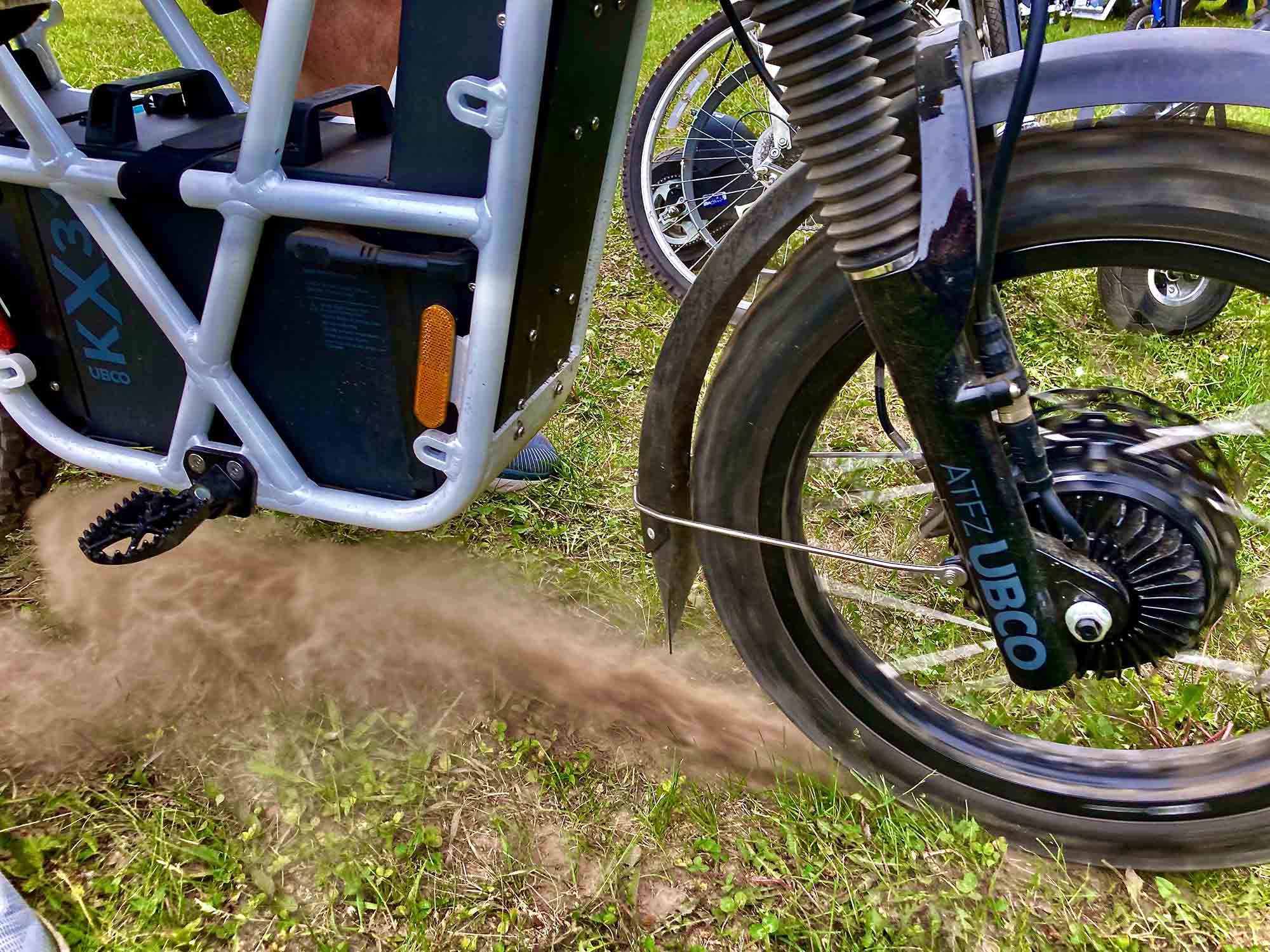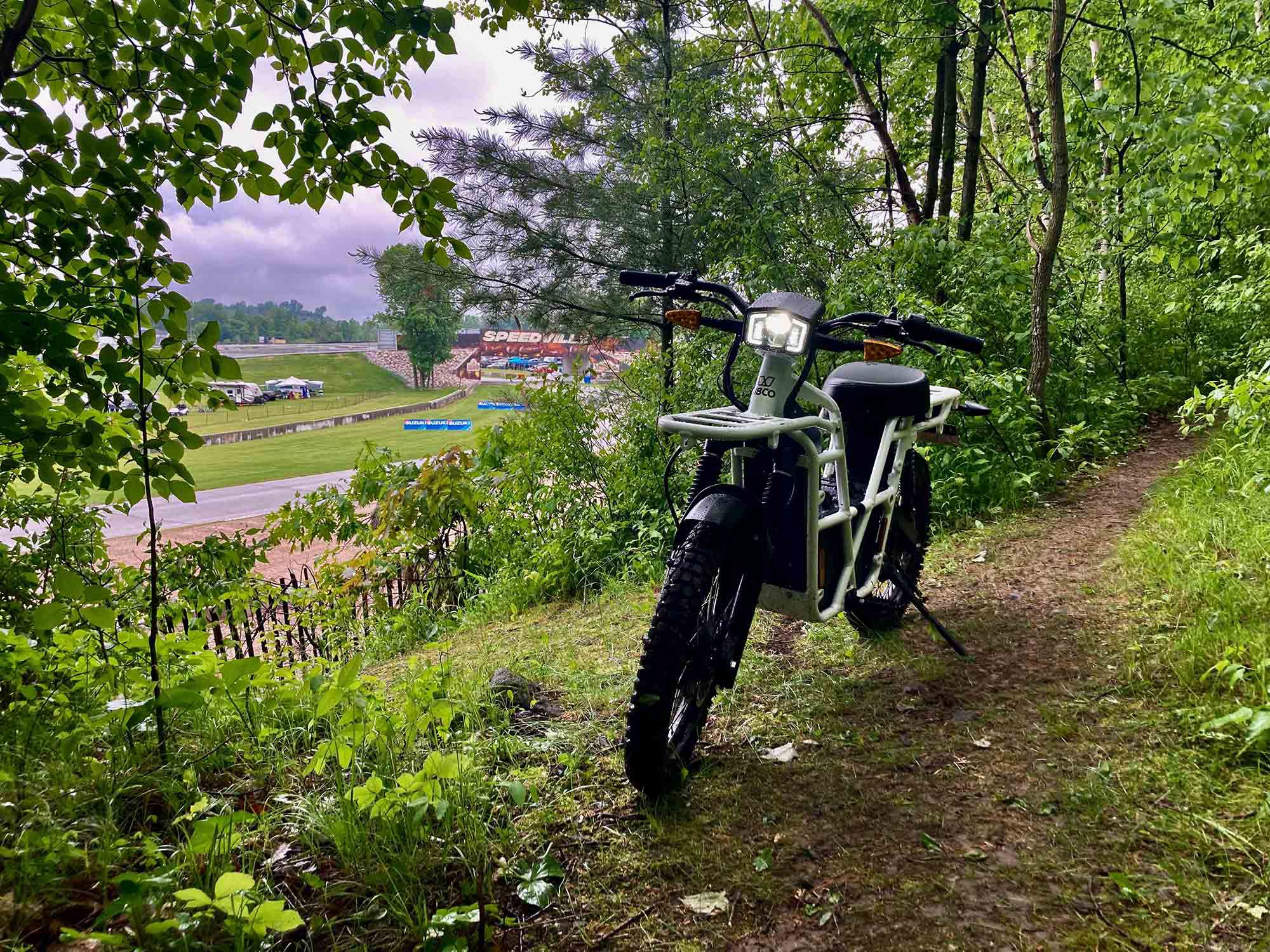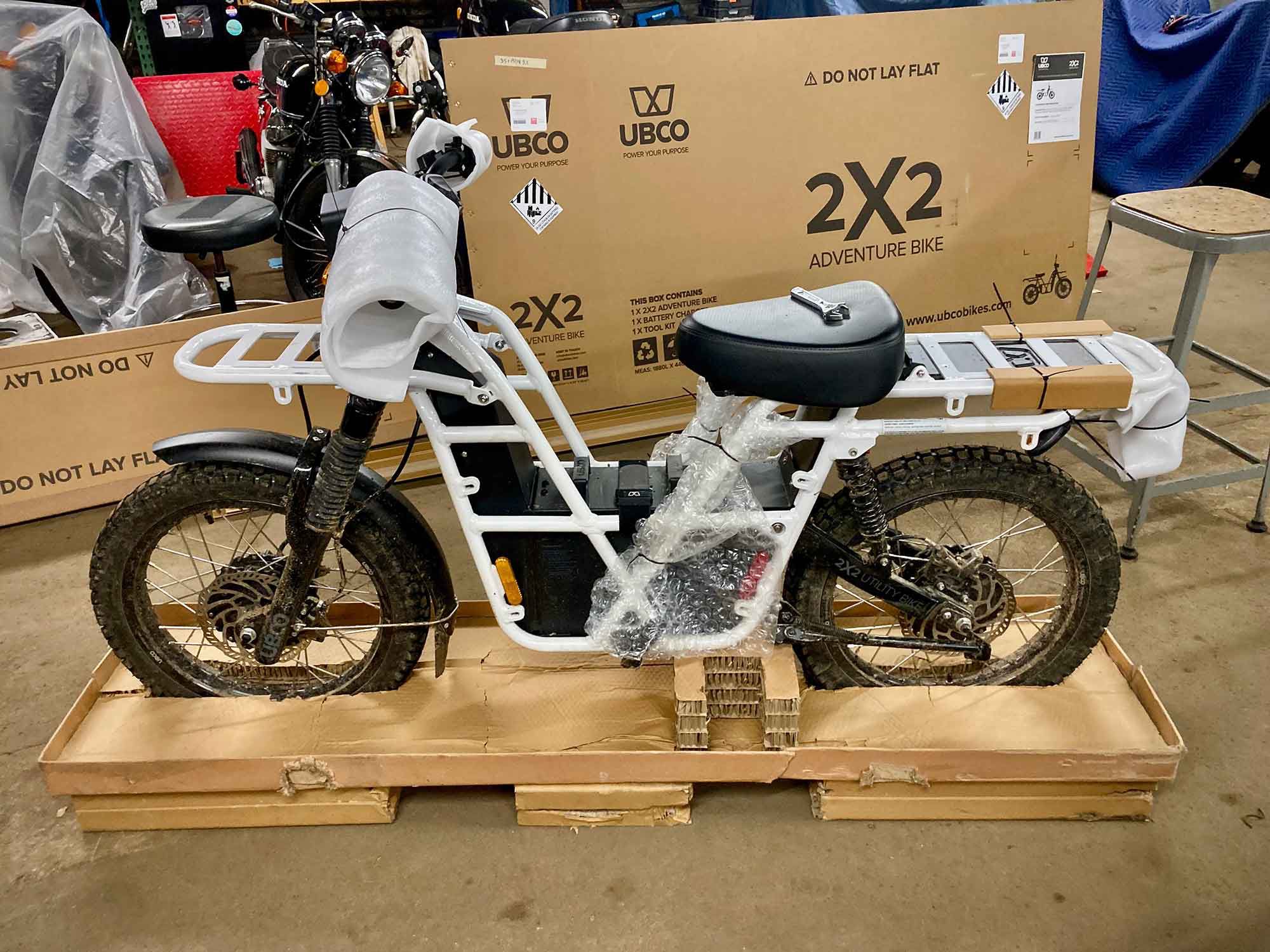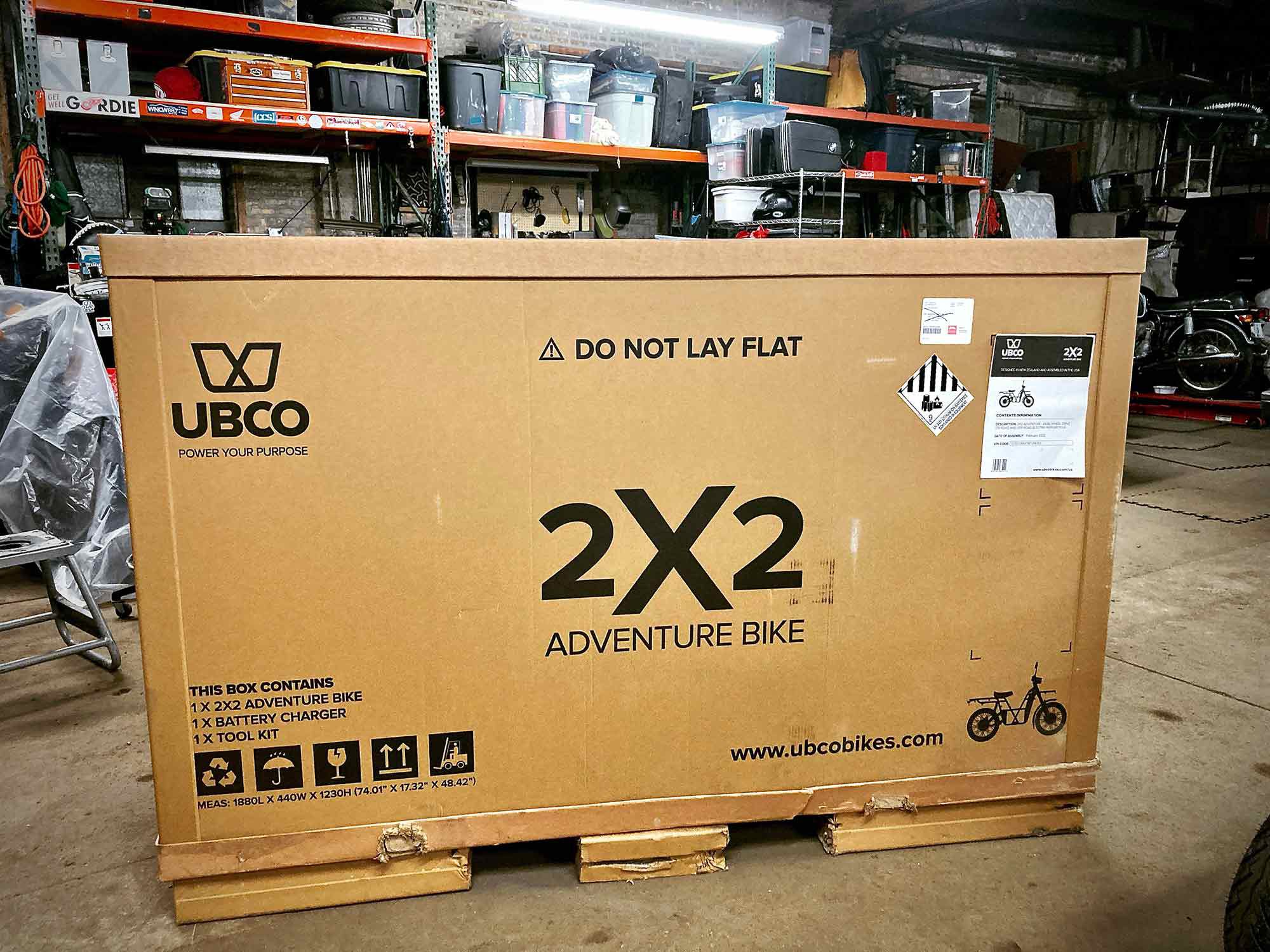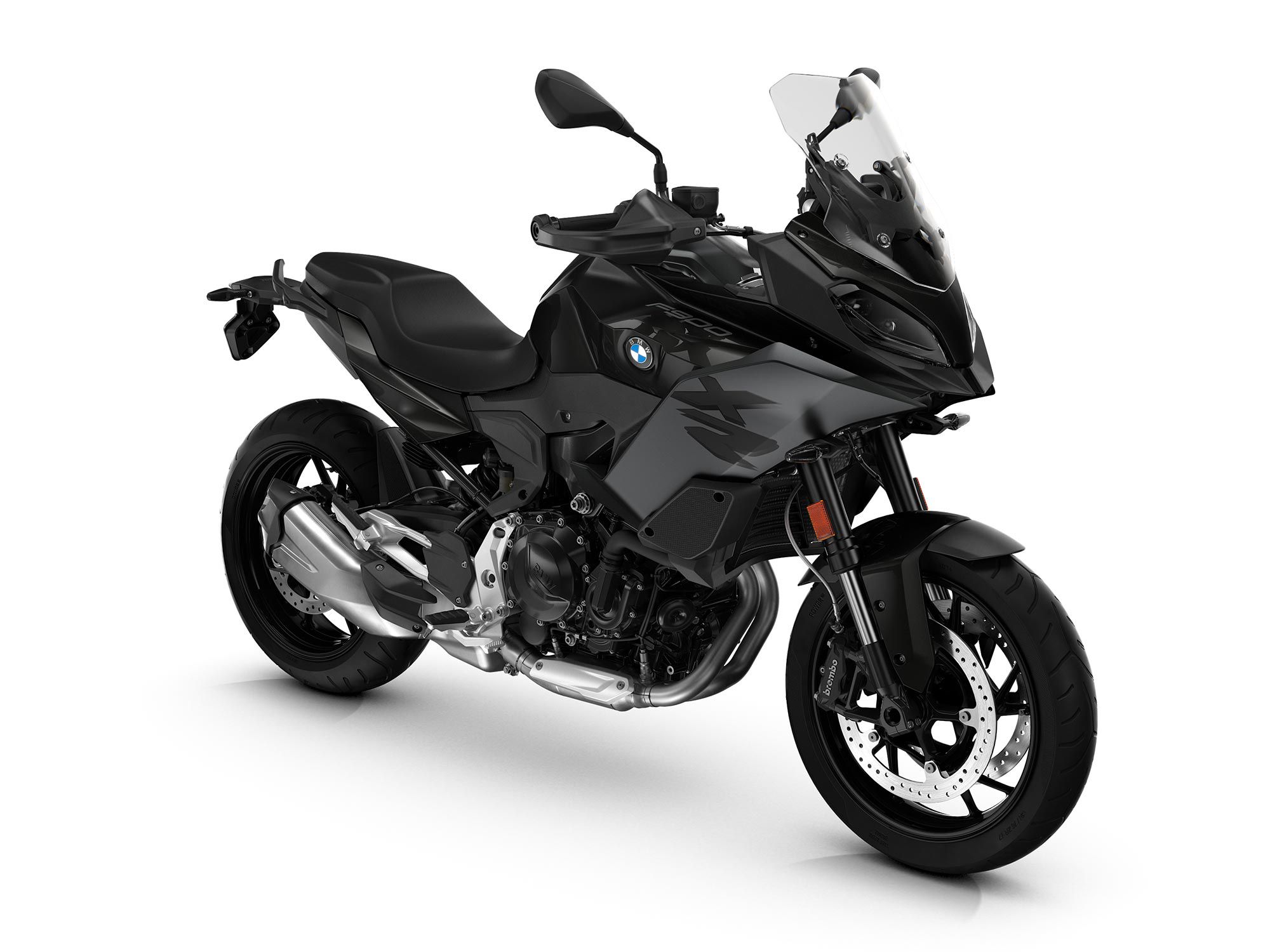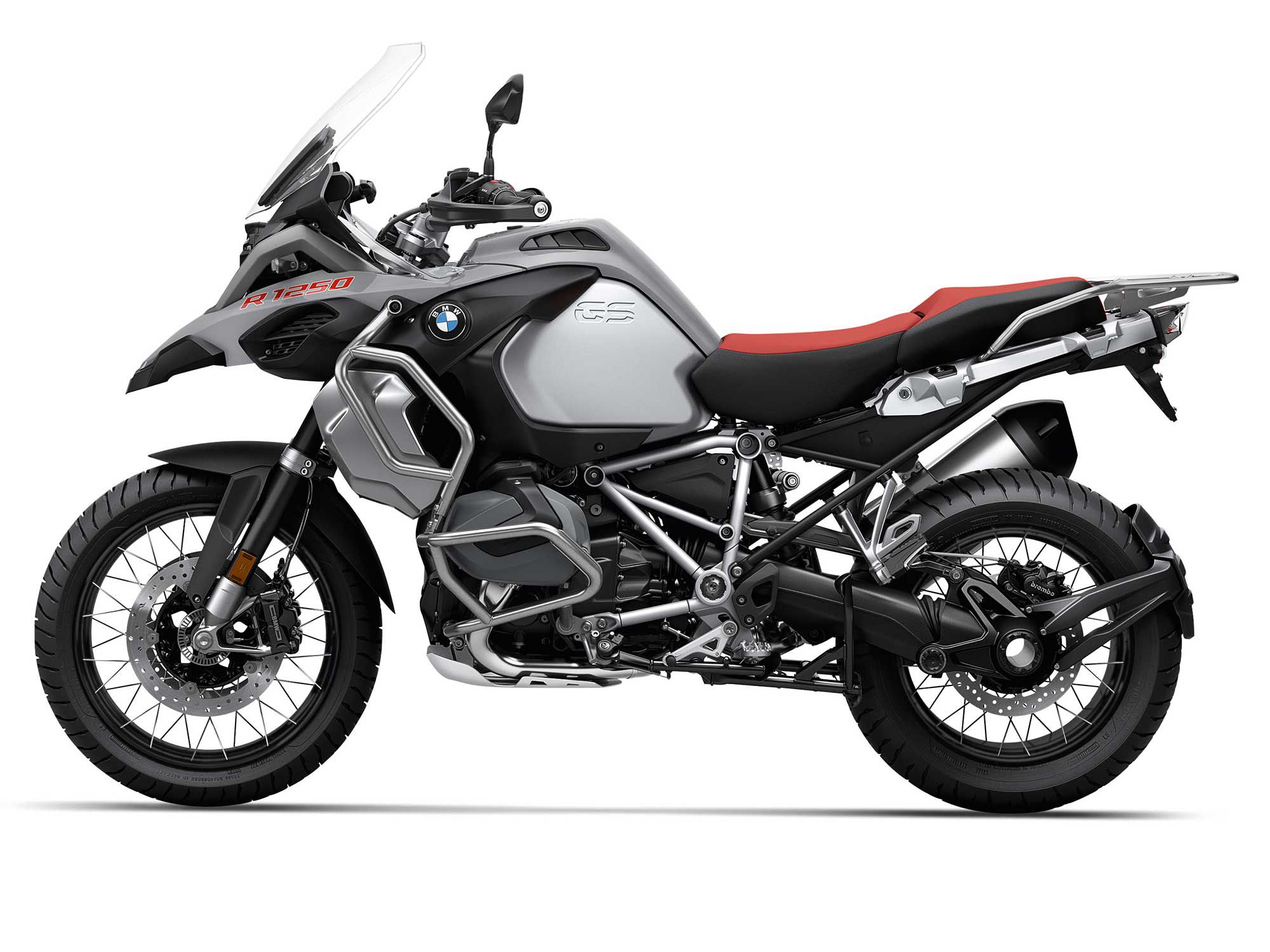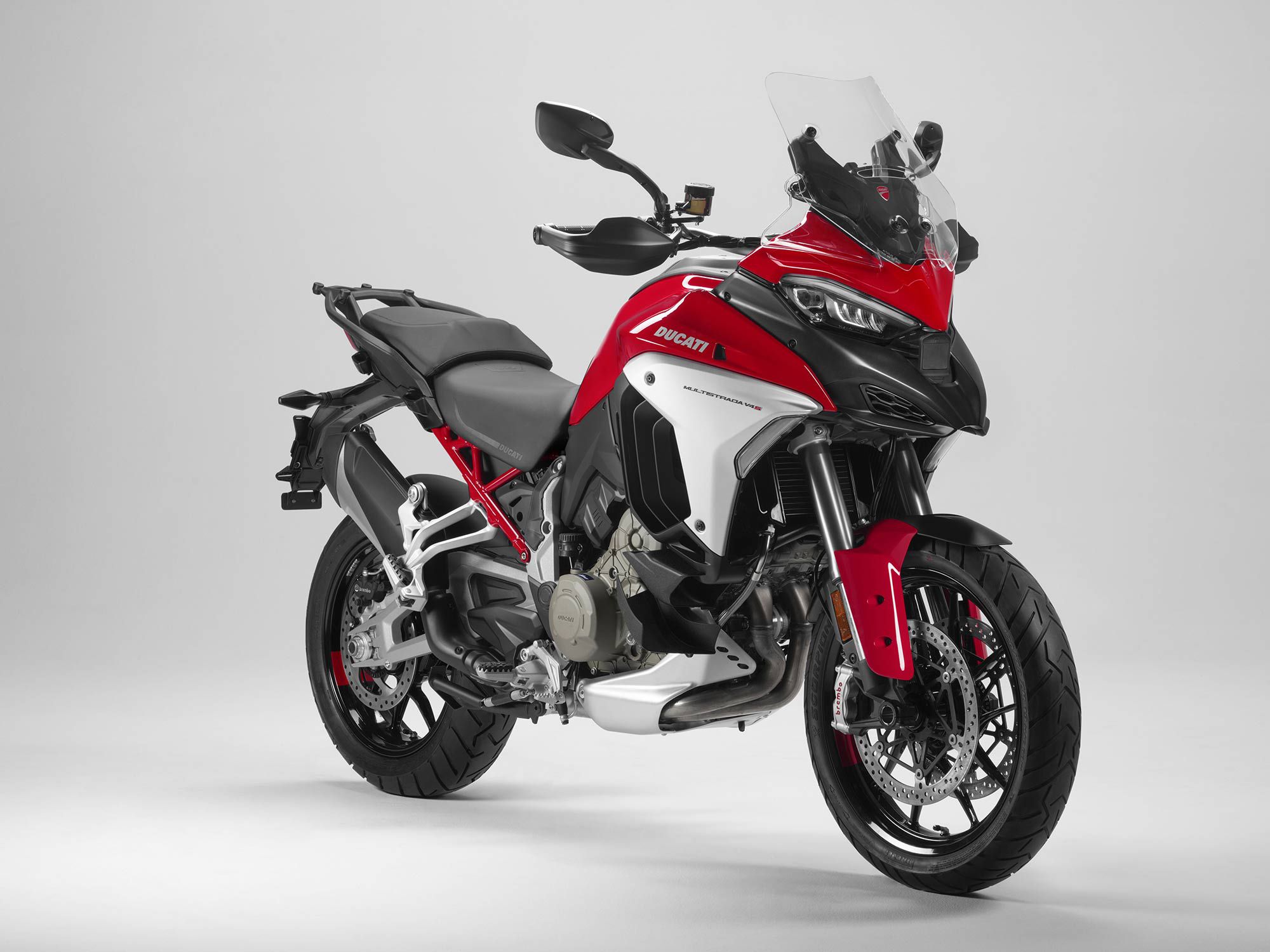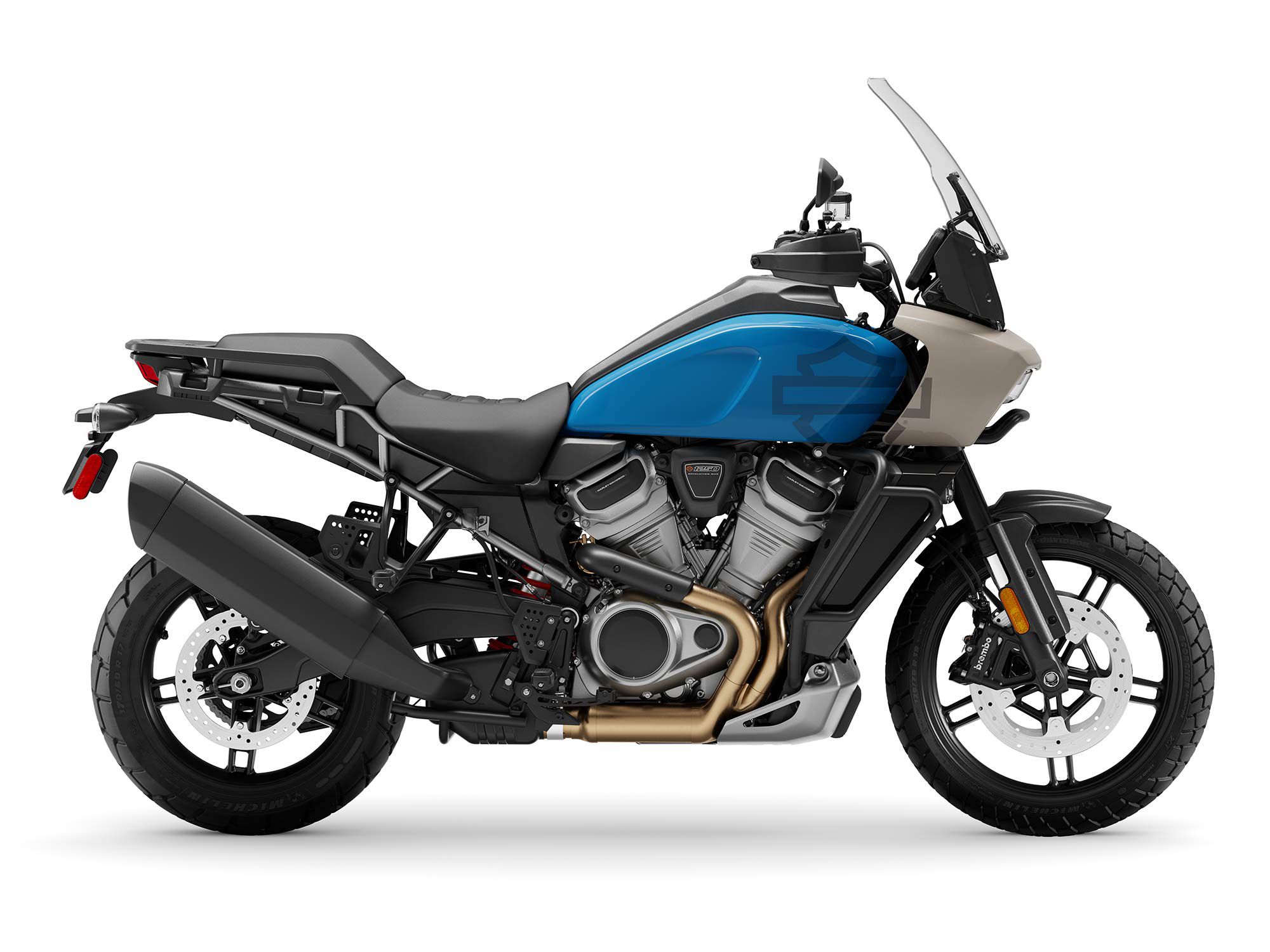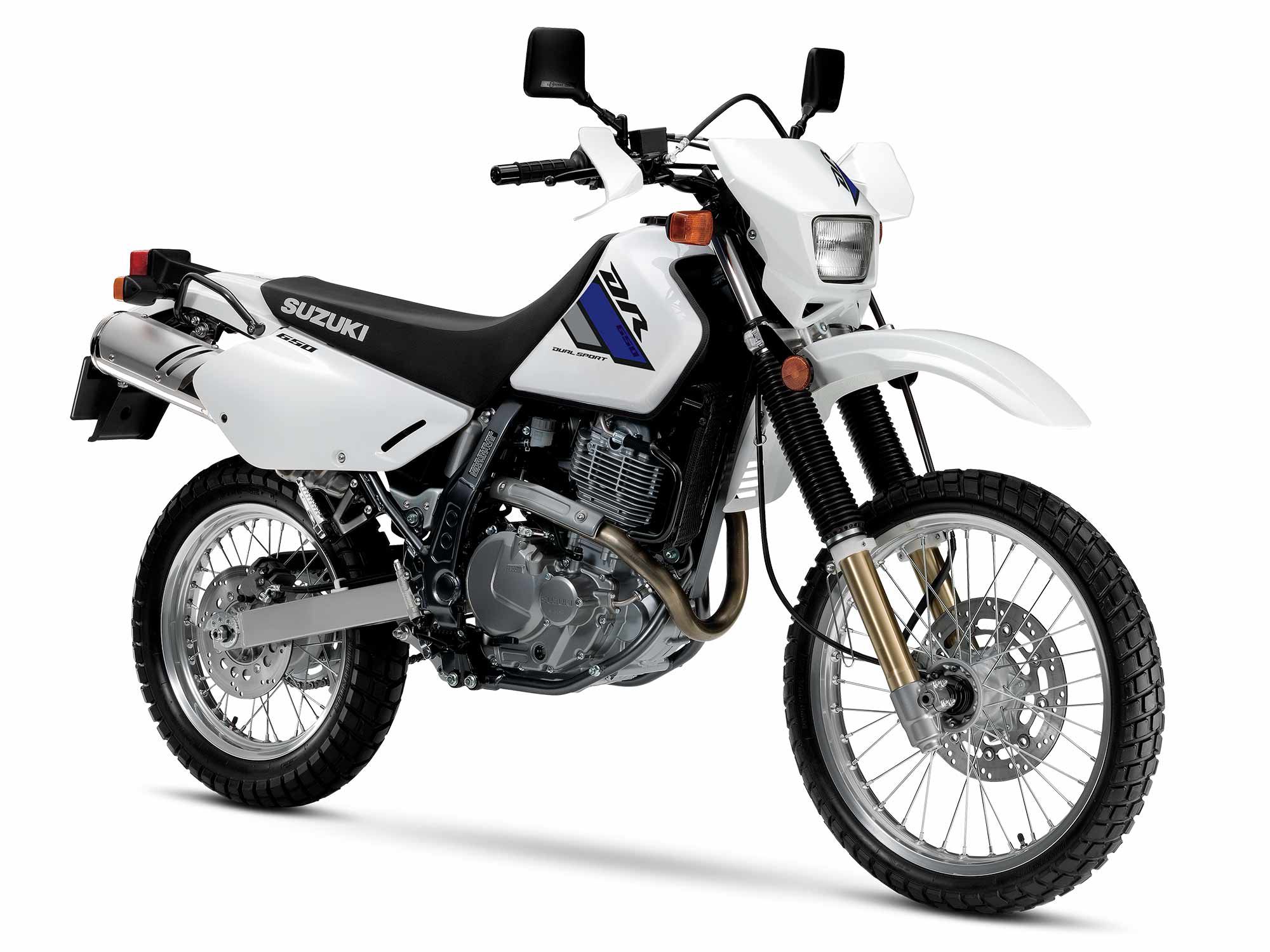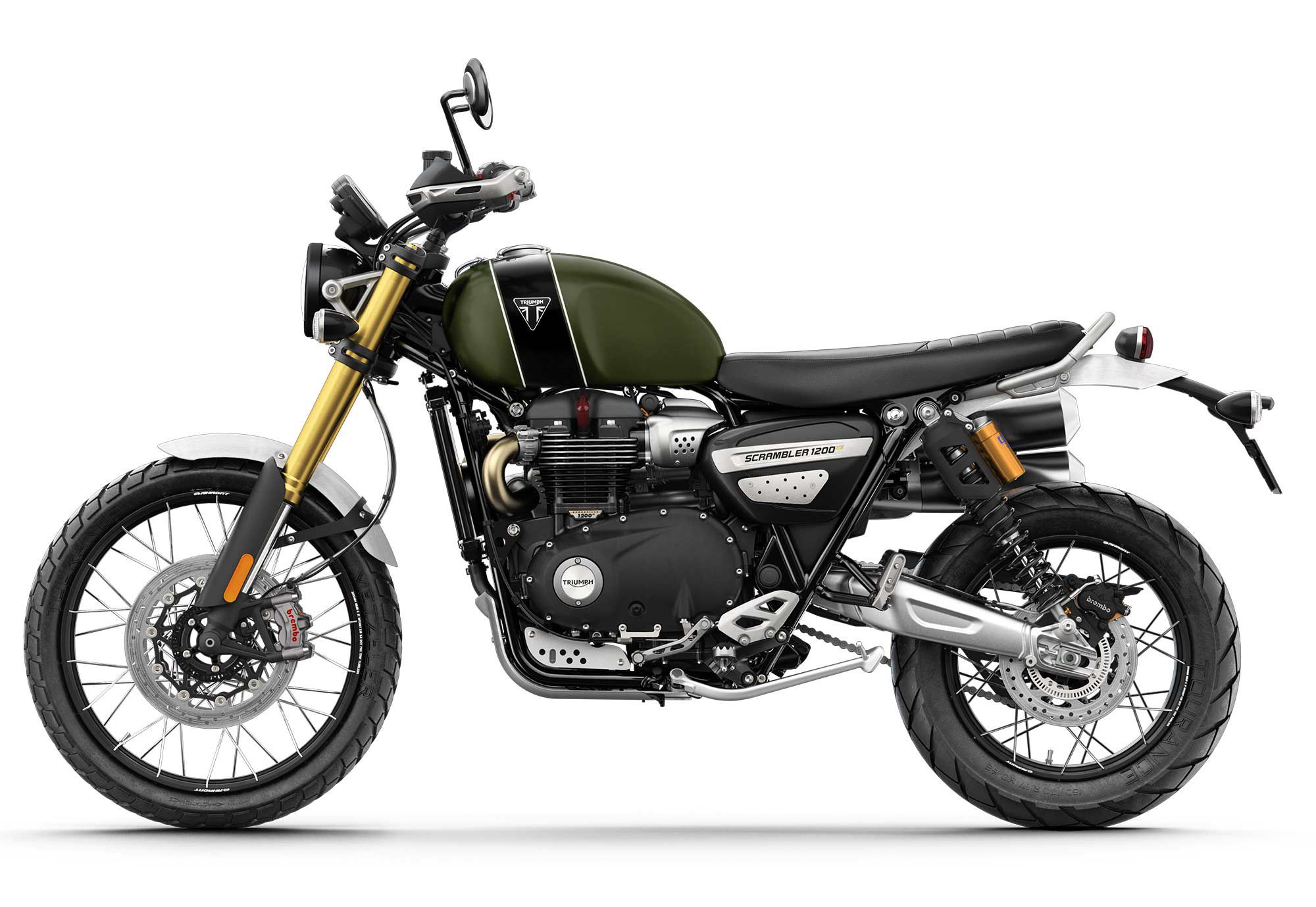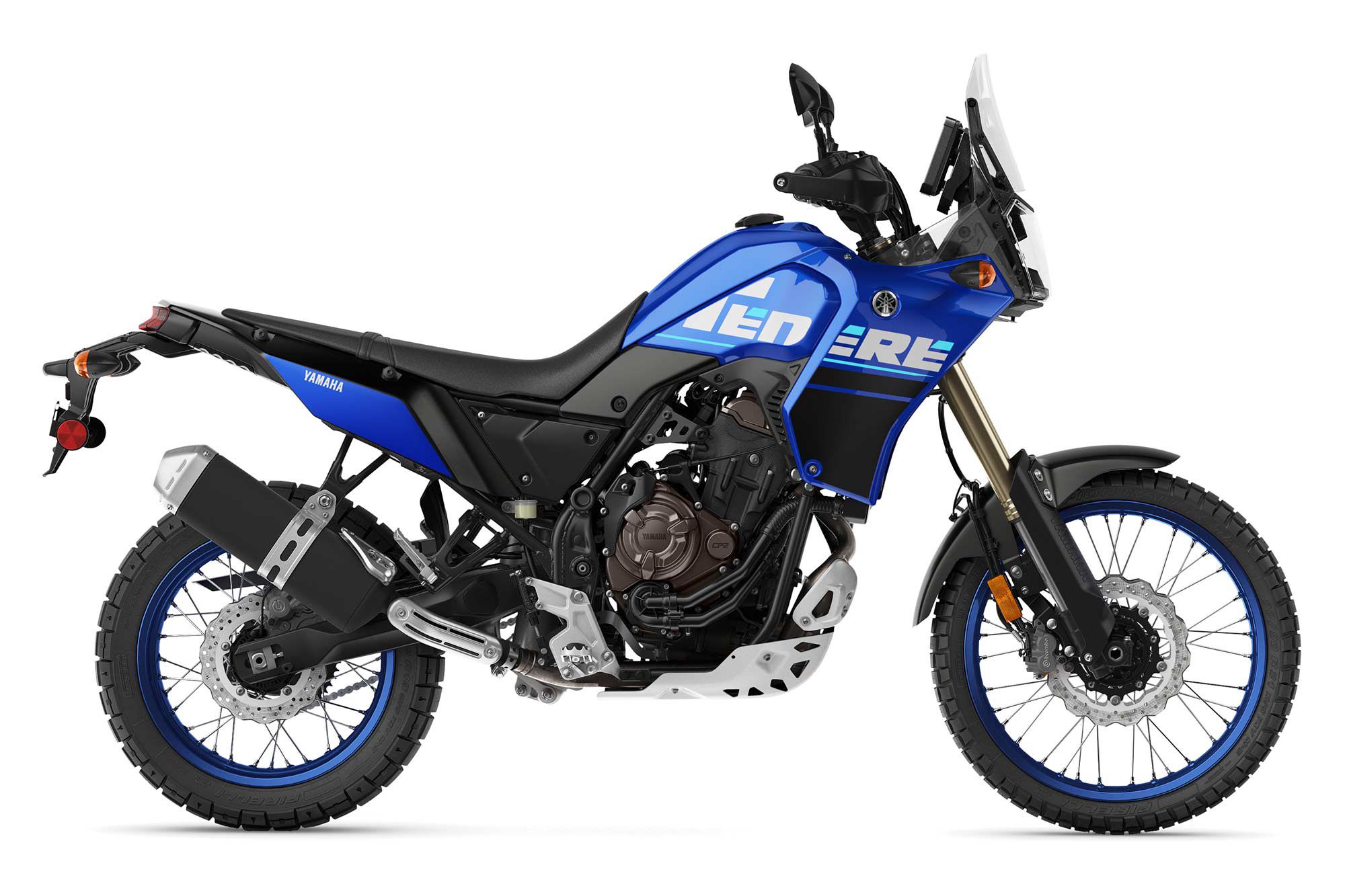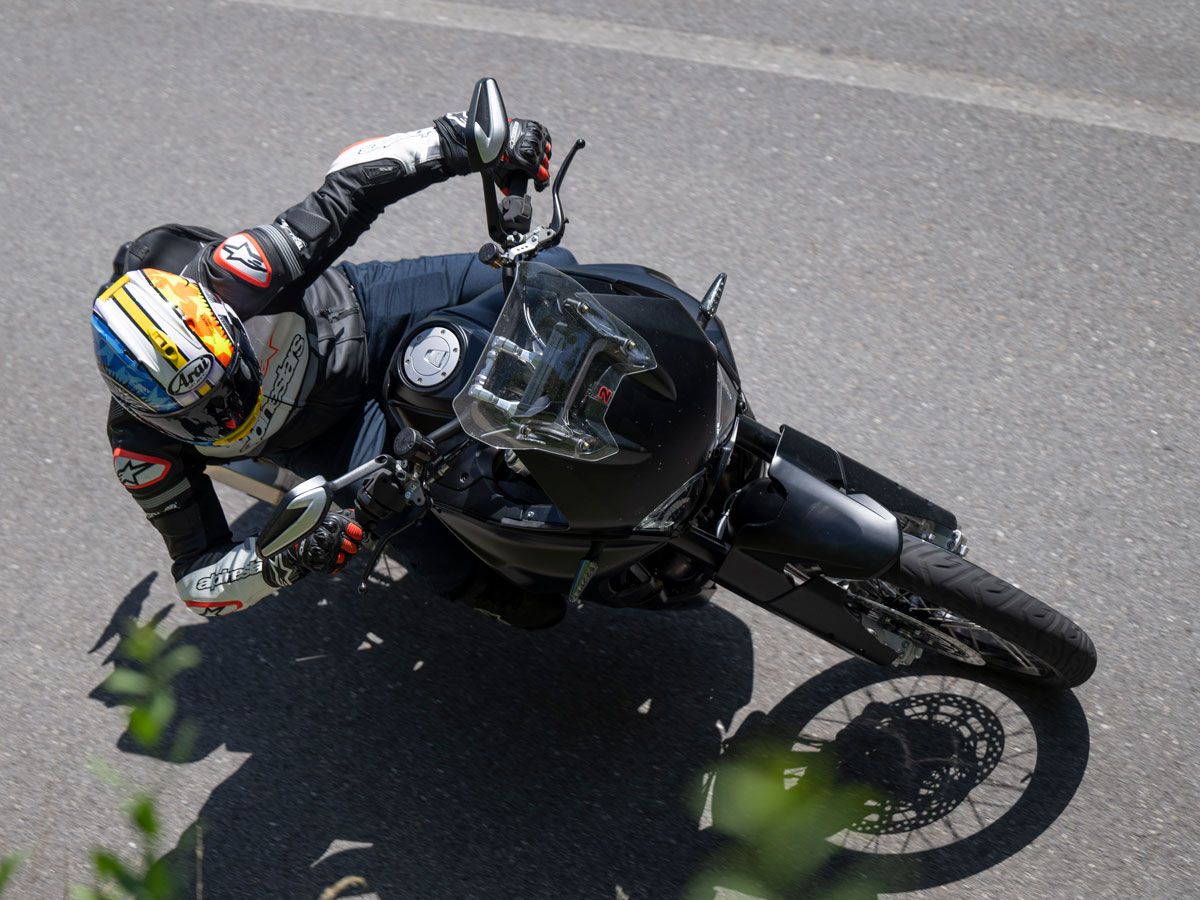
Imagine if MV Agusta, a dedicated manufacturer of insanely focused, ridiculously beautiful Italian sportbikes, decided to do something completely different. Imagine if, just for once, it decided to build a bike devoid of 17-inch wheels, razor-sharp geometry, and uncompromising short-stroke suspension, replacing them with a seriously dirty 21-inch/18-inch front/back wheel combination, mile-crunching comfort, and genuine off-road ambition. What kind of motorcycle would that be?
We still don’t know exactly, but we have a fair idea. We spent a day in northern Italy riding a prototype machine of what, when it goes on sale in 2023, will be known as simply the Lucky Explorer 9.5, emphatically not the MV Lucky Explorer. This is the prestigious company’s first production adventure bike and a completely new direction for the Varese factory.
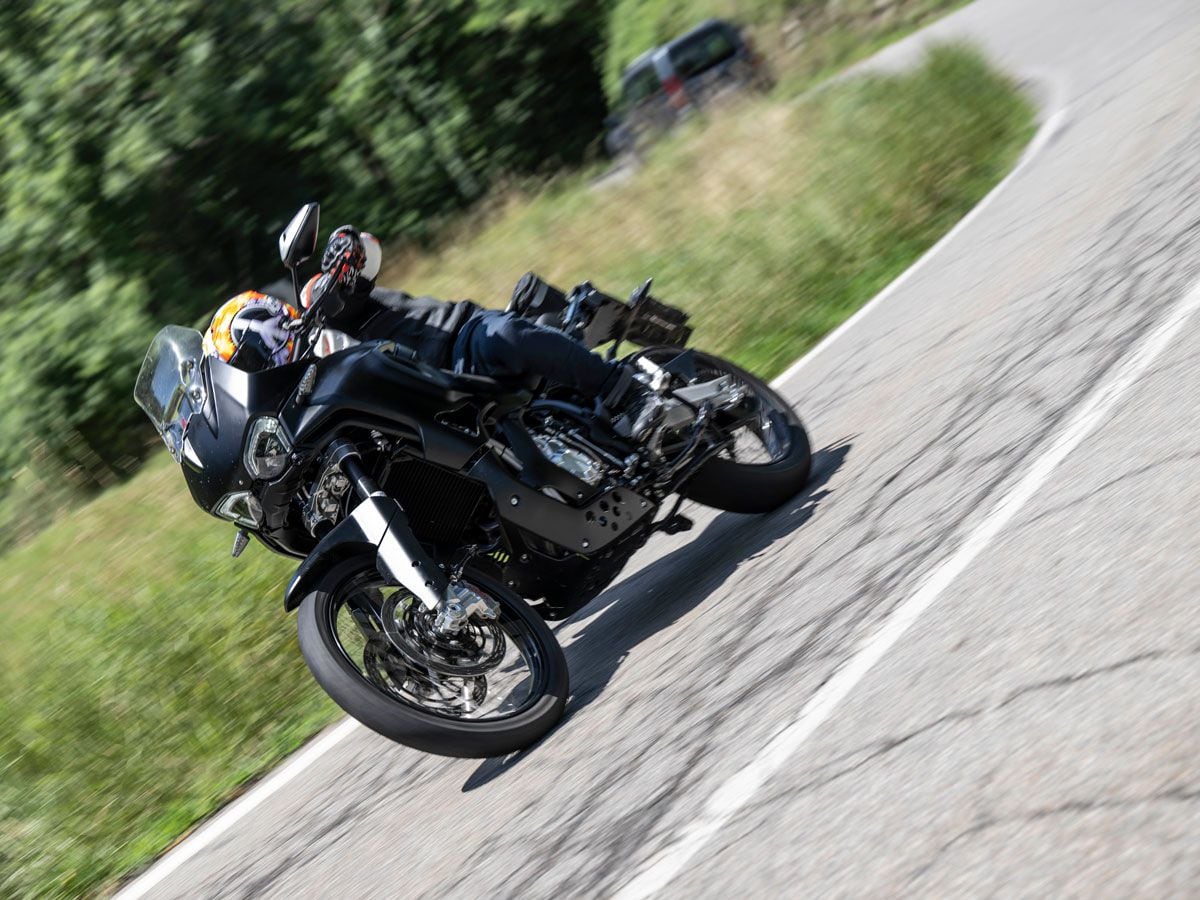
The inline-triple is derived from the 800, the 798cc unit powering the F3, Brutale, Dragster, Turismo Veloce, and Superveloce, with its capacity increased to 931cc. Power is a quoted 123 hp at 10,000 rpm with peak torque at 75.2 lb.-ft. at 7,000 rpm.
The engine also receives a new cylinder head, steel valves, a new counter-rotating crankshaft, new pistons, and a raft of detail updates including a new cooling system, oil feed, clutch, generator, starter motor, and gearbox covers. Not much of the 800 donor unit remains.
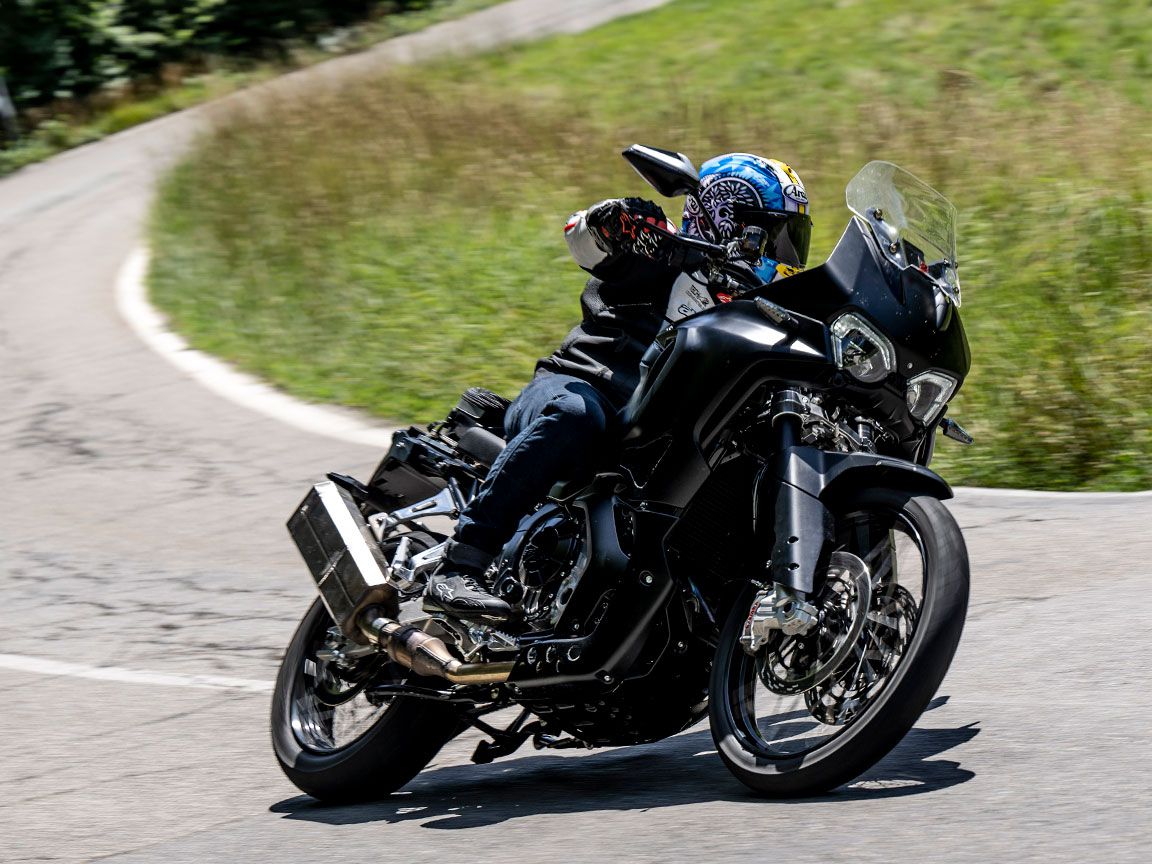
MV is famous for its high-revving track-oriented machines, but has focused on producing a more torquey, usable engine, with peak power less significant than it is on its supersharp sportbikes and nakeds. Compared to the racy 800cc F3 (147 hp at 13,000 rpm and 65 lb.-ft. 10,100 rpm) the Lucky Explorer is down on peak power (123 hp), but considerably up on torque (75.2 lb.-ft.). It produces more power and torque than the Ducati DesertX, Triumph Tiger 900, and KTM 890 Adventure; in this mid-adventure category, only Honda’s larger Africa Twin produces more torque.
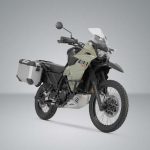
Rider aids, the exhaust and the switch gear, and multiple other details remain work in progress. But the three-cylinder motor with its counter-rotating crank is more than 95 percent complete, with power and torque outputs already finalized for production. Our testbike only had two riding modes, Urban and Touring, to play with. The final production version will have multiple rider modes, for both on and off-road, and rider aids linked to a six-axis IMU.
Our test confirmed two key facts. First, like all MVs, it sounds wildly exciting, snarling at low revs and wailing up top. And second, it has a glorious spread of easy-to-use torque, with smooth, progressive throttle response.
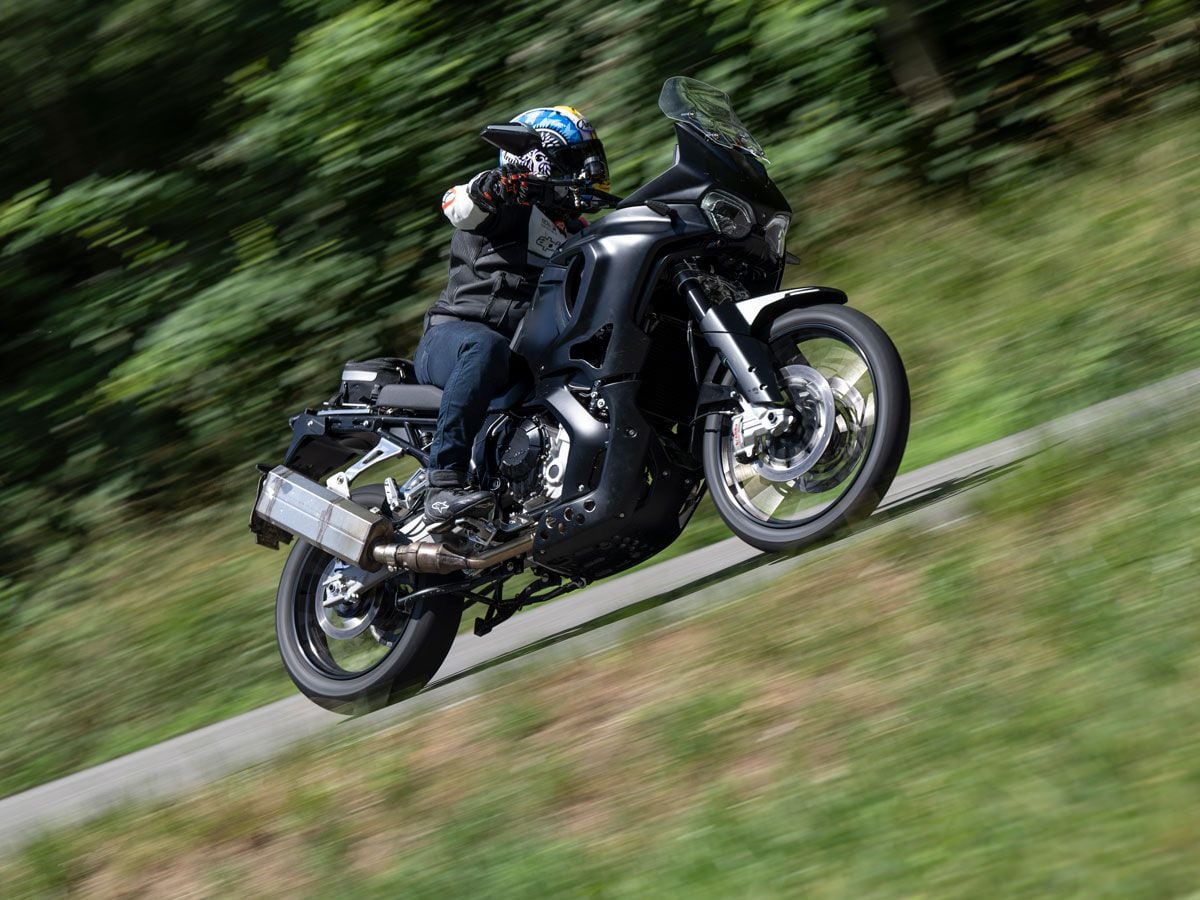
The Lucky Explorer will pull cleanly from as low as 2,000 rpm. Riding the bike in a tall gear, challenging the bike’s low and midrange torque, was impressive. It drives clean and hard like a serious adventure bike must. The shifter can be left alone, simply letting the triple surge through the rev range.
This is MV, of course, so it’s no real surprise that the 9.5 also goes like the clappers. When you want to have some traditional MV-style fun, the 9.5 accelerates hard enough from 7,000 rpm to feel like the bike has grown an extra lung. It rushes to the redline the way all MVs do, wailing and barking like an F3 coming off Laguna’s Corkscrew.
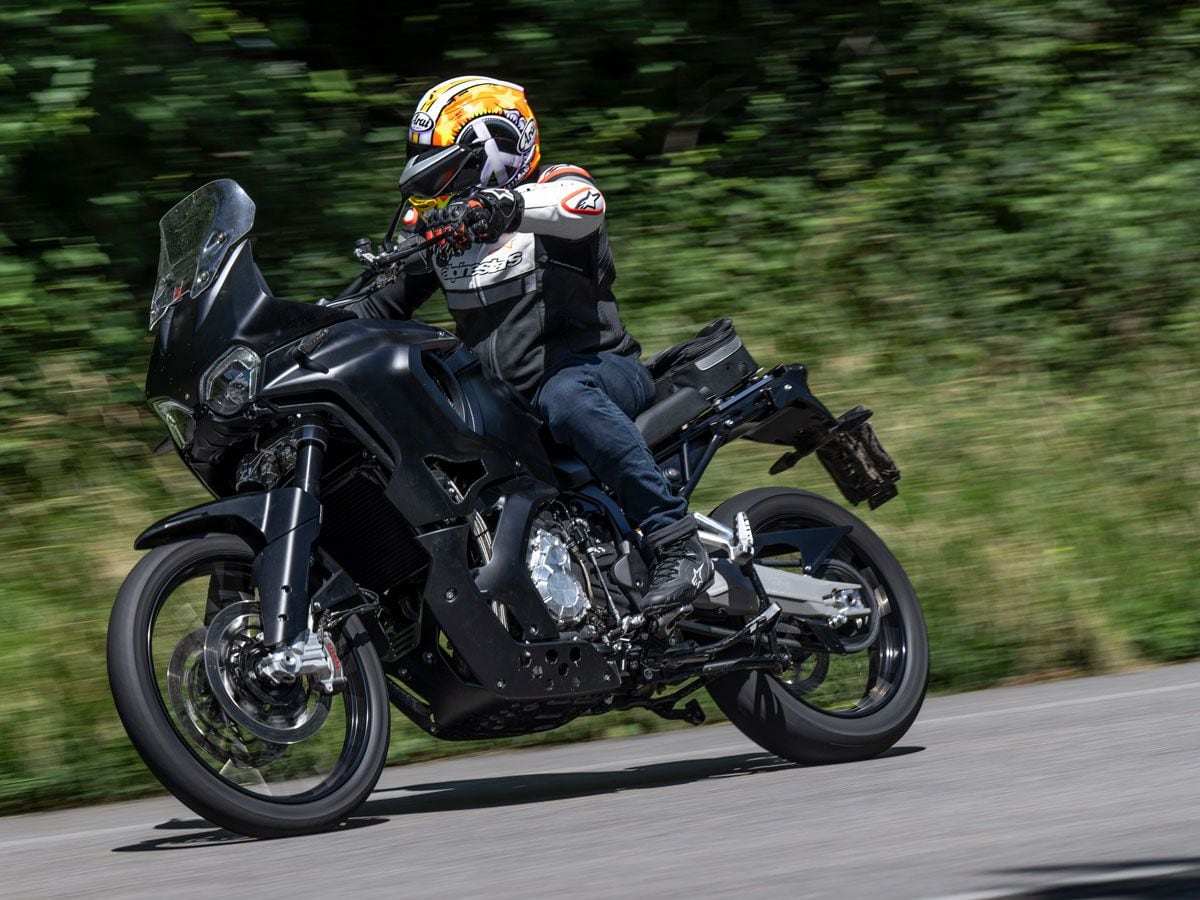
The chassis is nearly complete too, with rake, trail, wheelbase, and wheel sizes now decided: a 21-inch front and 18-inch rear, of course. The frame itself is all-new and has already been subject to extensive testing both on and off-road, including dramatic jump testing.
Suspension on our testbike is provided by Sachs and is fully, manually adjustable at both ends. In time MV will offer a semi-active alternative. Interestingly, MV has also opted for Bridgestone rubber instead of the usual Pirelli or Metzeler; we used A41s on the road and AX41s off-road.
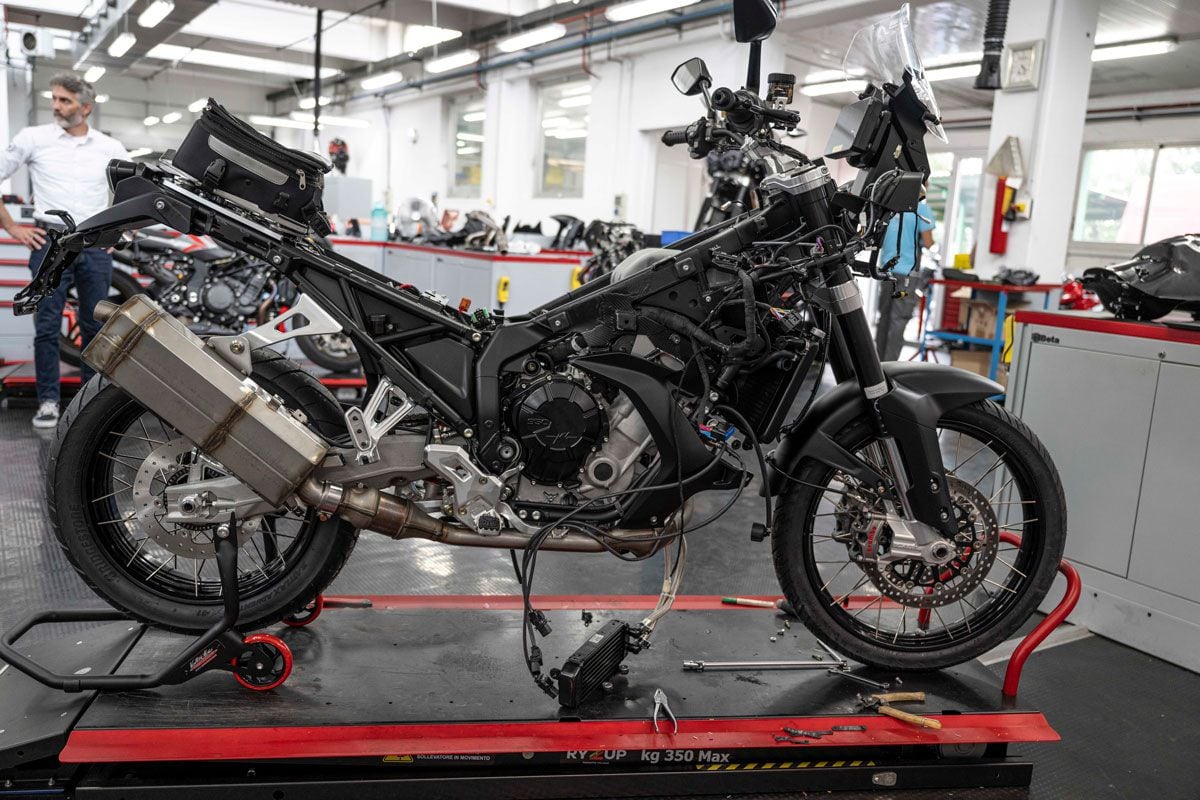
The seat is adjustable (to 33.5 inches and 34.3 inches) and the wide bars are slightly swept back. The 5.3 gallon fuel tank isn’t excessively large or bulky. And once underway, the 9.5 feels light and maneuverable, like a Yamaha Ténéré 700, certainly much lighter and more fluid than Honda’s Africa Twin.
While the 9.5 is smaller and less physical than the Africa Twin, it shares a similar riding position and windscreen. The screen is effective, and the riding position is roomy, yet not too tall. There’s a 7-inch TFT dash, and the production bike will have Bluetooth connectivity and cruise control as standard. MV also tells us it has spent a lot of time looking at the aero package, optimizing comfort and reducing wind noise for both rider and pillion.
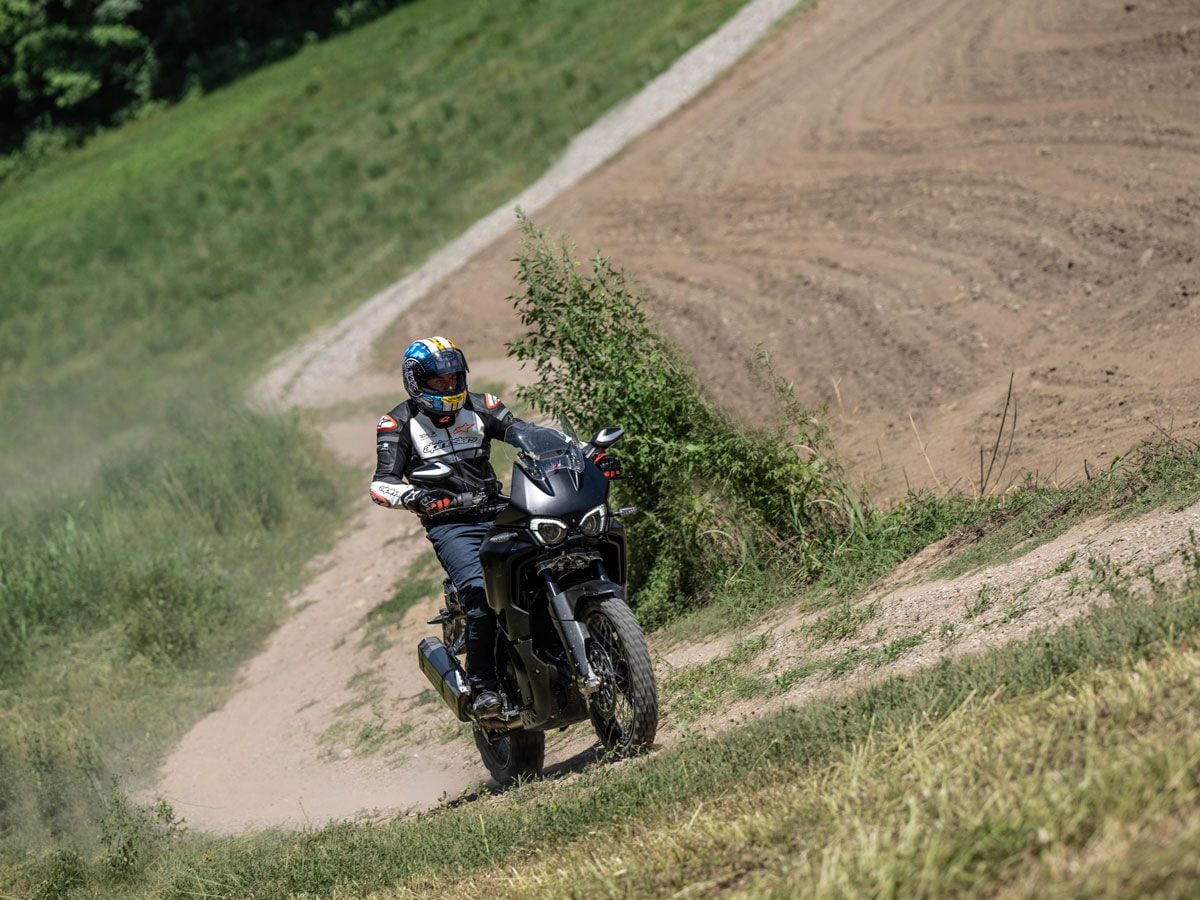
The pace set by the MV development riders acting as guides was rapid, but despite being onboard a “tall” adventure bike with genuine off-road potential, hardly any compromises were needed for the 9.5. Its fully adjustable long-travel Sachs suspension is plush and controlled, with no pitching or excessive movement. And despite that large 21-inch-diameter front wheel, the MV was happy to turn in and lay on its side midcorner.
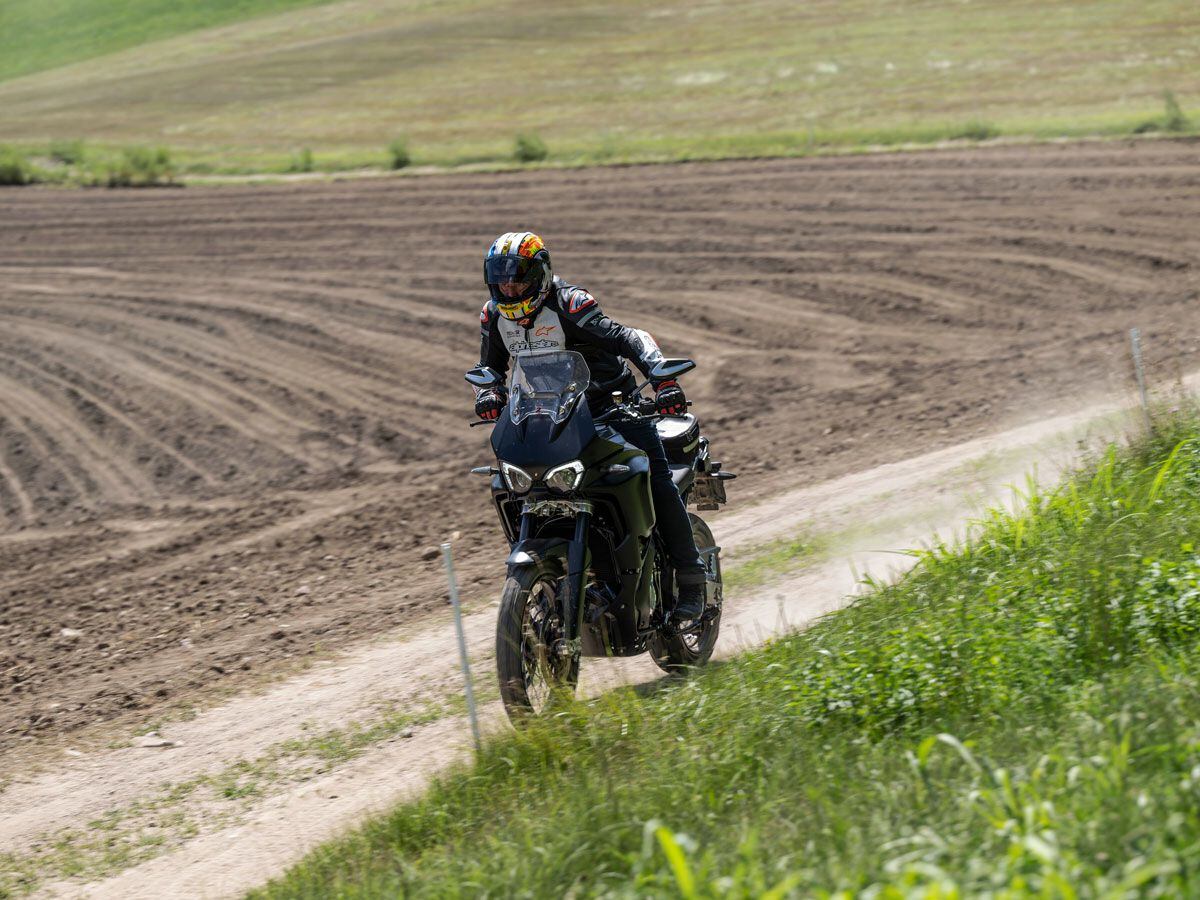
Brakes are top-quality Brembo Stylema items normally associated with superbikes or exotic naked machines. The combination of quality brakes and controlled Sachs suspension results in excellent stopping performance, with one-finger braking the norm no matter whether you are in town or hauling down from a serious speed. The final version will come with switchable cornering ABS for both on and off-road, which can be switched off.
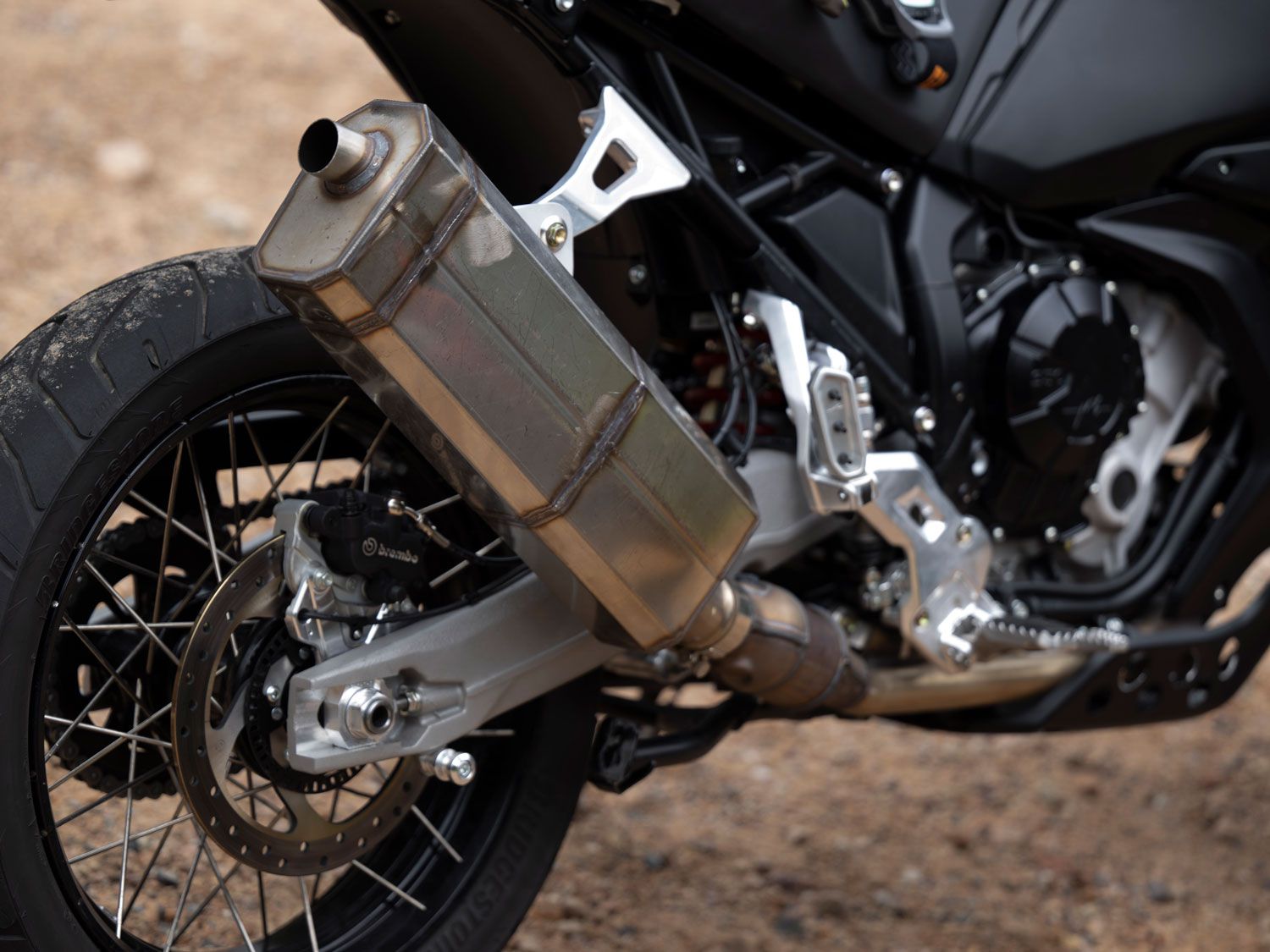
As mentioned, the production bike will come with four riding modes: Urban, Touring, Off-Road, and a Custom map. A six-axis IMU will be linked to the multiple rider aids, including eight levels of slide control/traction control. There will be front-wheel lift control, engine-brake strategies, and launch control, not forgetting the changeable ABS. Cruise control will come as standard along with an up-and-down quickshifter. All the rider aids will be accessed via the dash. MV’s rider aids have proved excellent in recent years, and there is no reason to believe the new 9.5′s should be different. The off-road modes will be a first for MV.
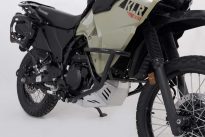
Unfortunately, we only got a taste of what the new 9.5 can do on the dirt. Standing up on the grippy pegs, the bars seemed a fraction too far back, but otherwise there was plenty of room to move backward and forward. Riders could clearly see over the screen, and the suspension soaked up the knocks and bangs without complaining.
Accessories, from hard luggage to race kits, are already in the pipeline. Future models are expected with semi-active suspension. There will also be an alternative to Honda’s DCT Africa Twin, with MV’s automatic clutch and the option of electronic actuated gearshifts.
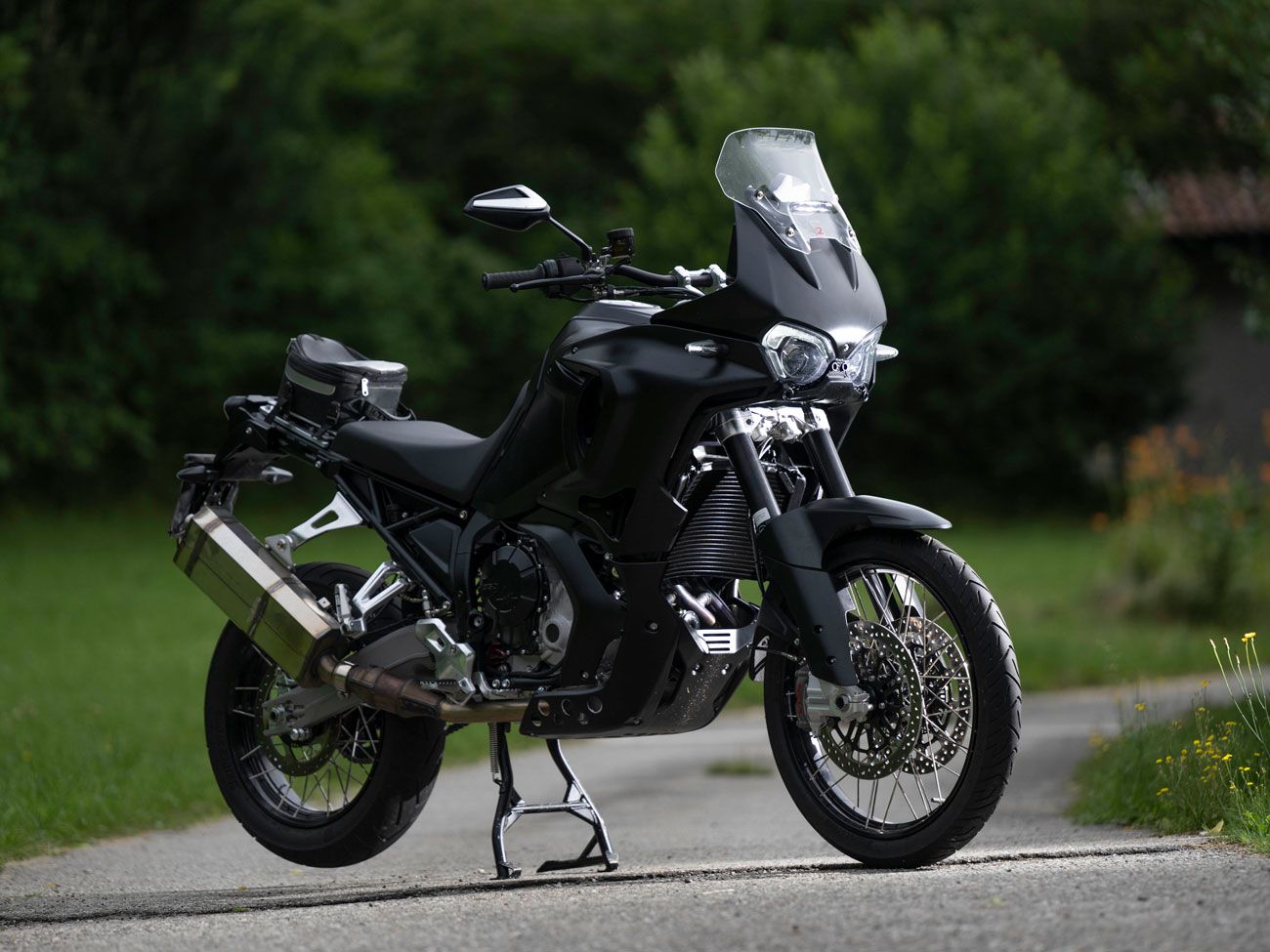
The Lucky Explorer 9.5 will be MV’s first purpose-built adventure bike and an exciting new take on the adventure middleweight. On the road, it’s typically sporty, but MV hasn’t simply chased peak power. The three-cylinder engine is smooth, usable, and torquey. We can’t say for sure how comfortable it will be over distance, or how the electronic rider aids will perform, but first impressions are positive.

2023 Lucky Explorer 9.5 Technical Specifications and Price
| PRICE | TBD |
| ENGINE | 931cc, DOHC, liquid-cooled, inline three-cylinder; 4 valves/cyl. |
| BORE x STROKE | 81.0 x 60.2mm |
| COMPRESSION RATIO | 12.5:1 |
| FUEL DELIVERY | Fuel injection w/ ride-by-wire |
| CLUTCH | Wet, multidisc; hydraulic actuation |
| TRANSMISSION/FINAL DRIVE | 6-speed/chain |
| FRAME | Steel double cradle |
| FRONT SUSPENSION | 50mm Sachs; fully adjustable; 8.7 in. travel |
| REAR SUSPENSION | Sachs fully adjustable; 8.3 in. travel |
| FRONT BRAKES | 4-piston Brembo Stylema calipers, dual 320mm discs w/ cornering ABS |
| REAR BRAKE | 2-piston Brembo caliper, 265mm disc w/ cornering ABS |
| WHEELS, FRONT/Rear | Spoked, tubeless, aluminum hub; 21 x 2.15 in. / 18 x 4.25 in. |
| TIRES, FRONT/REAR | Bridgestone A41 on the road and AX41 off-road; 90/90-21 / 150/70ZR-18 |
| RAKE/TRAIL | 27.0°/4.6 in. |
| WHEELBASE | 62.2 in. |
| SEAT HEIGHT | 33.5/34.3 in. |
| FUEL CAPACITY | 5.3 gal. |
| CLAIMED DRY WEIGHT | 485 lb. |
| WARRANTY | 24 months |
| CONTACT | luckyexplorerproject.com |
Source: MotorCyclistOnline.com

